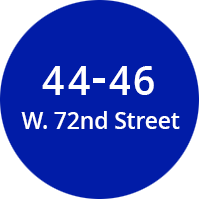
Hop On! Explore West 72nd Street with Landmark West!
At one time, the elite address to have, West 72nd Street, due to its width and connection to the Central Park Women’s Gate became a heavy crosstown thoroughfare. Once grand city residences enjoyed seasonally by well-heeled New Yorkers gave way to a series of schools, boarding houses and businesses as stoops were removed for further widening and storefronts marred facades. LANDMARK WEST! has paid your fare, so grab a seat by a window, and come along for a ride across the Queen of Streets from Riverside Drive to Central Park West!
Find out more about the rich history of those who lived and worked on West 72nd Street. Scroll through the map below and click on any highlighted area. Want to dive deeper? Click “Read More” from the pop up window. Interested in a particular address? Click on the corresponding blue circle below the map to get right to the full story.

100 W. 72nd Street
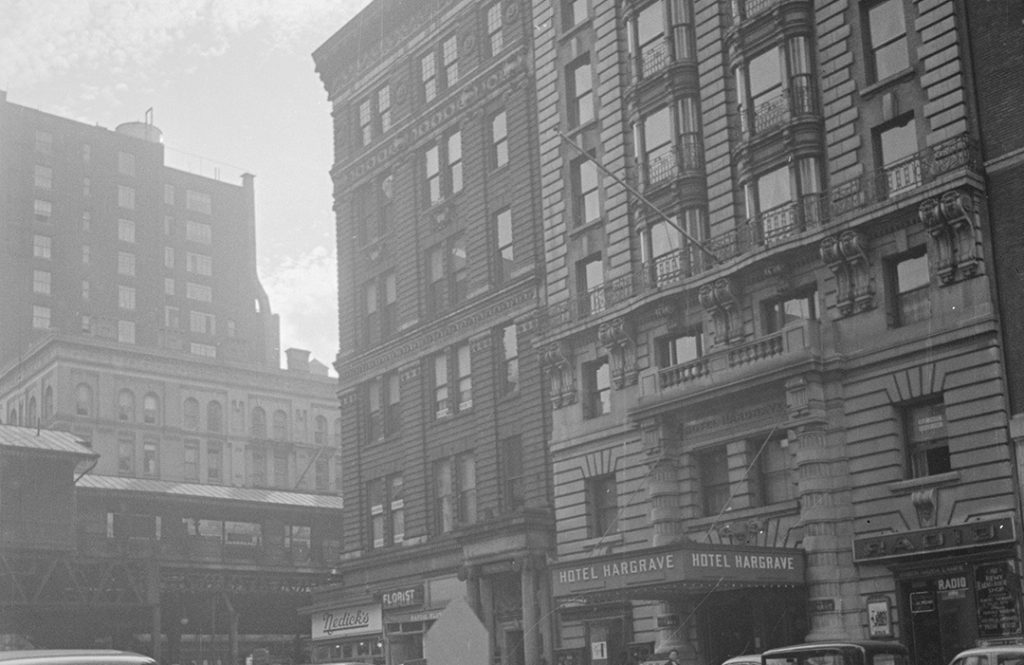
A Grocery or a Work of Art?
This building was designed by one of the most famous firms in Gilded Age New York: McKim, Mead & White. For a grocery store. But, Park & Tilford was quite a step above anything the UWS had ever seen. The opening on September 23, 1893 was reported by The Times as "attended by hundreds”, adding, “There is no business building more handsome on the west side”. The New-York Tribune noted that the “best class of trade” on the Upper West Side had “suffered much inconvenience by being obliged to order their groceries and household provisions from down-town houses.” They could now rest easy. “The new store of Park & Tilford…has been decorated and stocked in such a manner that it is no exaggeration to say that it is a work of art.”
READ MORE
101 W. 72nd Street
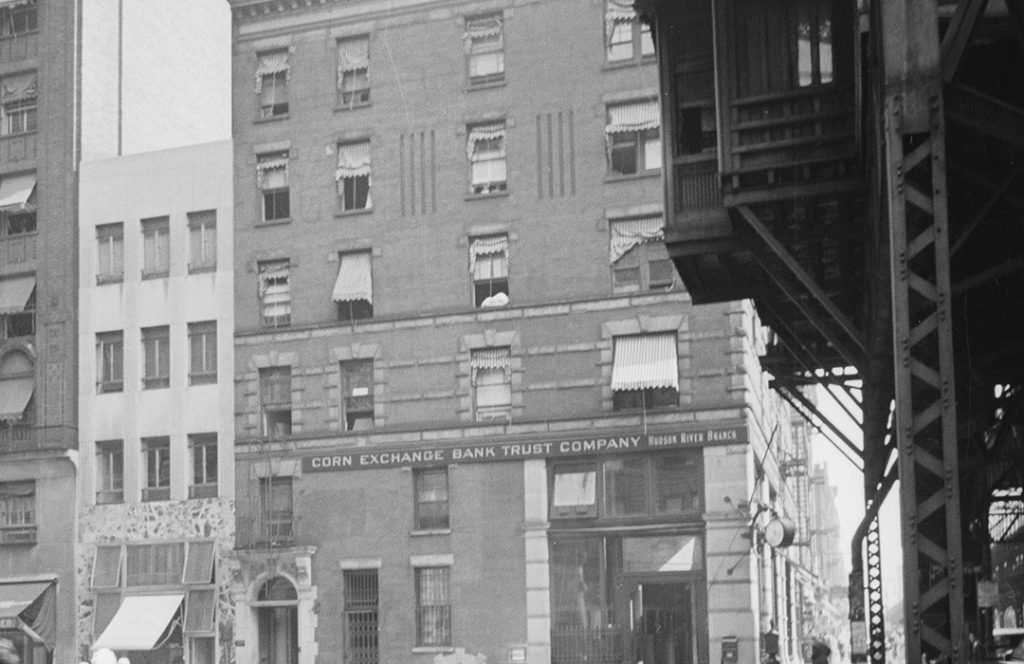
Bank at the Base, Smoke Police Upstairs
In real estate circles, Charles Buek was a sort of one-man show. His firm, Charles Buek & Co., not only developed properties, but he often acted as the architect as well. In 1887, he began construction of an upscale apartment building on the northwest corner of 72nd Street and Columbus Avenue. Completed the following year, he designed the brick and stone structure primarily in the recently popular Queen Anne style. The cost of construction was about $2.6 million in today’s money. Buek named the building the St. Charles Apartments.
106-112 W. 72nd Street
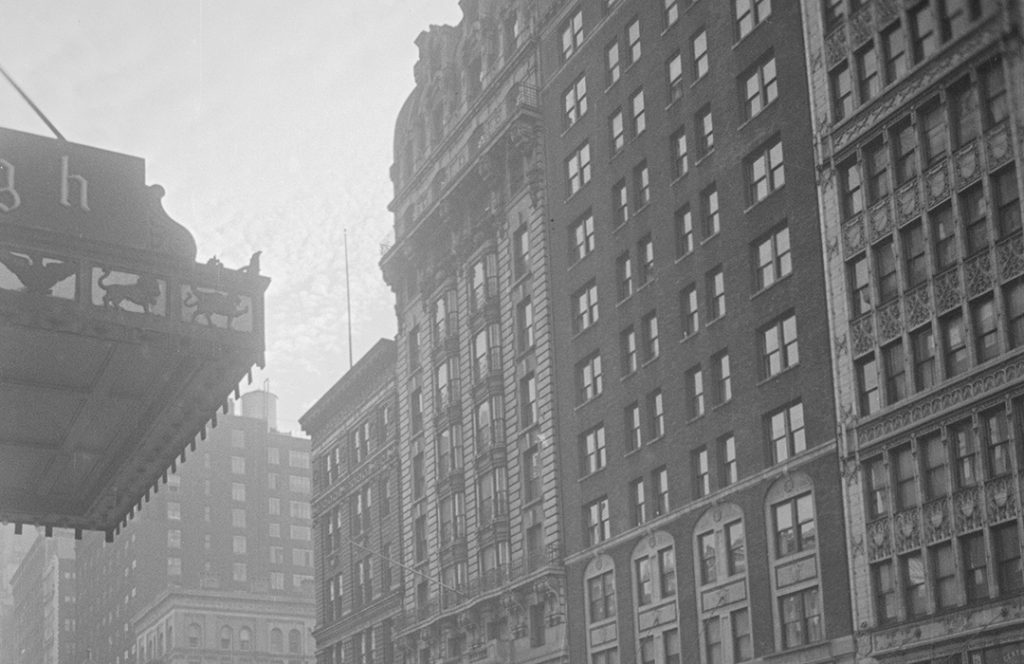
New York’s Most Accessible Hotel
On January 6, 1903 Walter Stabler delivered an address to the Real Estate Class of the Y.M.C.A. on “The Development of the West Side.” In it, he outlined the rather stumbling progress of developers in what was, in the mid-19th century, “one vast stretch of farm land.” It was not until the early 1880s, he pointed out, that real development took hold. Only a few years after those rows of houses were erected, many of them along the avenues and major streets were demolished as a new trend arose: residential hotels.
118 W. 72nd Street
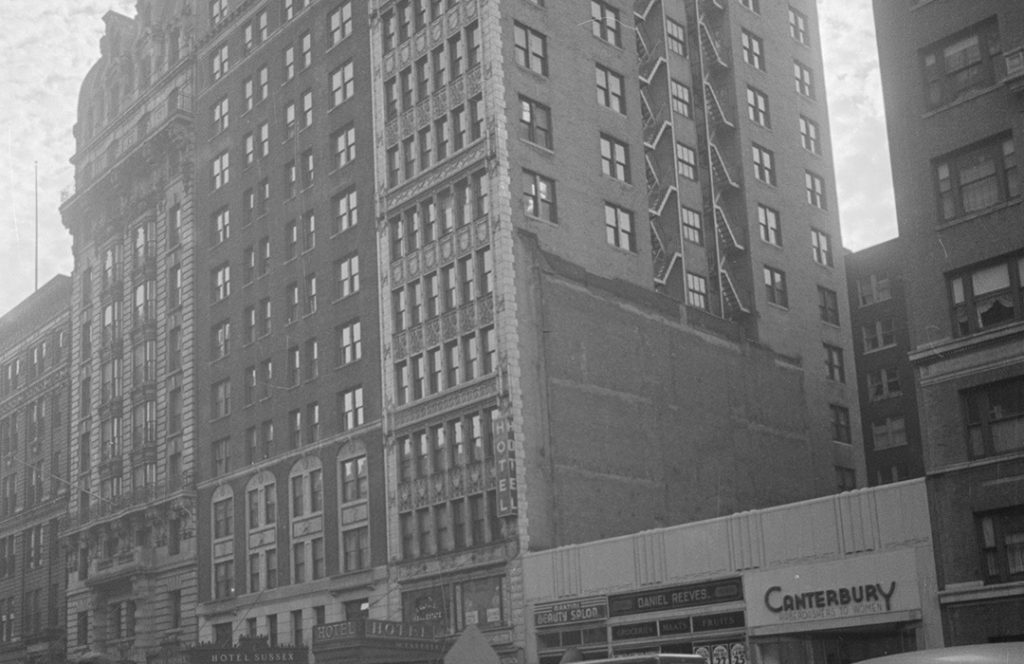
The Hotel Earlton: Marriages Failed, Flailing and Faked
A year after erecting his striking 30-story World Tower building, in 1914 fledgling developer Edward West Browning hired the same architects to design three apartment buildings on the Upper West Side. And as they had done with the World Tower project, Buchman & Fox turned to the neo-Gothic style for their design, clad in gleaming white terra cotta. Browning called 118 The Hotel Earlton. Like its siblings, it had four two-room apartments per floor, with “foyer, hall and bath, with parquet floors,” according to The Clay-Worker. Known as an “apartment hotel,” there were no kitchens in the suites. Tenants had the option of eating in a large dining room on the ground floor.
134 W. 72nd Street
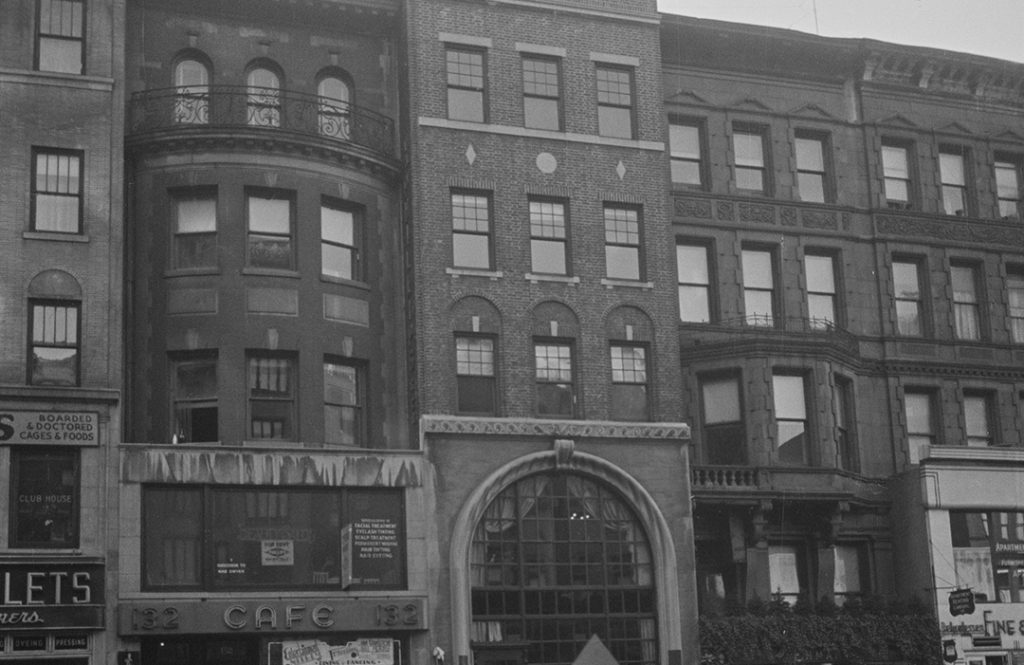
The West End Club[house] and International Sunshine Society
In 1883 real estate operator, Margaret Crawford began construction on five upscale rowhouses on West 72nd Street, between Columbus Avenue and Broadway. The avenue-wide street was developing into what the West 72nd Street Association would describe five years later as “the model street of the city.” The well-known architect Gilbert A. Schellenger designed the homes in the Renaissance Revival style. Completed in 1884 they were four stories above a high basement level, with a high stone stoop rising to the parlor floor level. The New York Times reported its purpose was “to promote intercourse among the members and provide a clubhouse.” Exclusive men’s social clubs routinely took over mansions within post residential neighborhoods. The elegant interiors with carved mantels, costly paneling and sweeping staircases created an aristocratic setting for the clubrooms. The upper floors contained rooms for members to stay when, for example, they were in town on business during the summer months while their homes were closed for the season. The New York Herald mentioned “The West End Club house is at No. 134 West Seventy-second street. The interior is luxuriously fitted up.”
170 W. 72nd Street
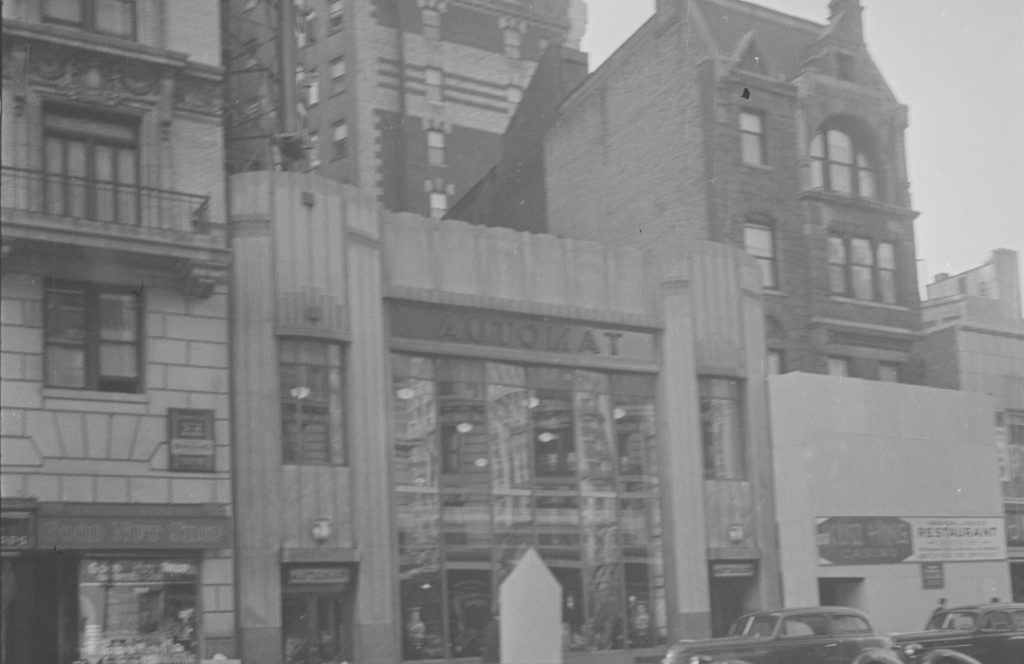
Beef Over Roast Beef
Joseph Horn and Frank Hardart opened their first restaurant in Philadelphia on December 22, 1888. When “waiterless restaurants” began to appear overseas around the turn of the century, Frank Hardart traveled to Europe to see them in action. Customers chose food items from glass-doored compartments, inserted a coin and removed the food. The concept required fewer personnel and, therefore, reduced prices. Diners enjoyed quick service and inexpensive meals. Horn & Hardart brought the concept to the United States. The result was a sensation and in 1912 they branched into New York City. Shop girls, office workers and laborers found they could stretch their meager pay in clean, attractive surroundings where five cents would buy tasty, freshly-made food. The coin machines accepted only nickels and women “nickel throwers” were on hand to make change. Because the coins dirtied the cashiers’ hands, they work black uniforms. Despite the low food prices, Horn & Hardart did not scrimp on the interiors. Marble, white tile and shining chrome were kept spotless and the cafeterias were often termed “classy.” Joseph Horn’s approach to the restaurant business was simple. “There is no trick to selling a poor item cheaply. The real trick is to sell a good item cheaply.”
174 W. 72nd Street
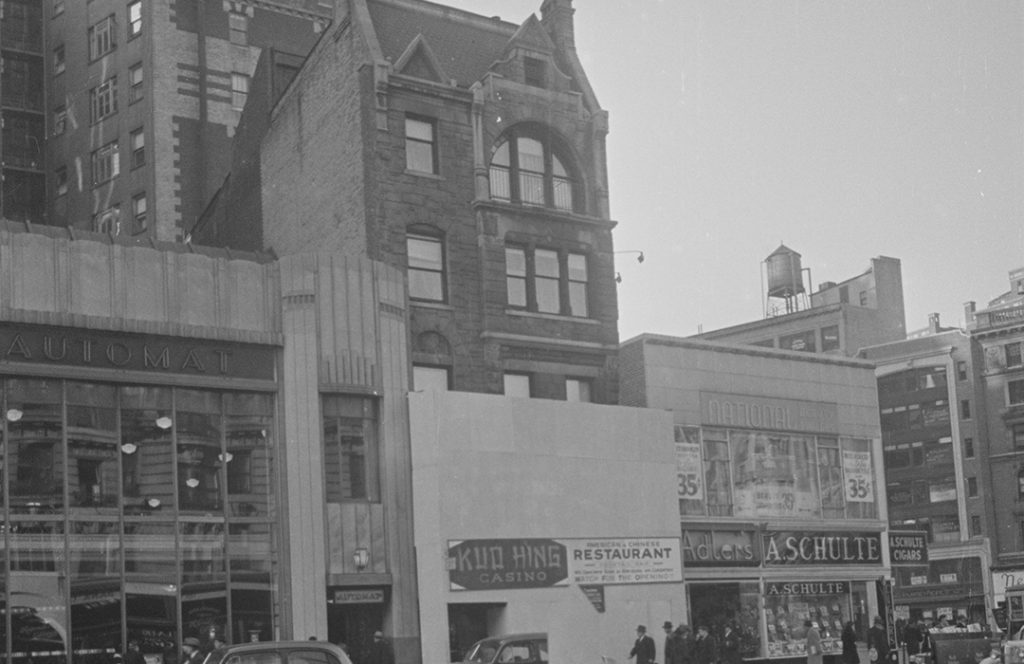
Four Architects and One Roe Mansion
The Roe mansion at 174 West 72nd Street was completed in 1886. Architect Arthur Bates Jennings produced a stone-fronted house that refused to be forced into stylistic box. Romanesque Revival coexisted with a touch of Flemish Revival, topped with a slate-covered mansard roof. The house sat above a tall English basement. No two openings were alike and the architect skillfully incorporated arches, gables, engaged columns and carvings to achieve his four-story fantasy. Albert Roe was considered a leader in the New York lard refining industry. A few years earlier, when reports circulated that lard additives like tallow, water and cottonseed oil were being added to the product, reporters sought out Roe’s opinion. Roe insisted that it was not New York refiners to blame. Although adulterating lard was indeed a common practice, the inferior product was intended for “the Cuban and West Indian trade;” not for Americans. With Amy and Albert in the new home where their sons, Alexander, Irving and Frank; and two daughters, Laura and Aurelia. The mansion was the scene of a happy reception on February 12, 1896 following the wedding of Laura Bosworth Chamberlain Roe to Henry Burr Anthony in St. Agnes’s Chapel on West 92nd Street.
176 W. 72nd Street
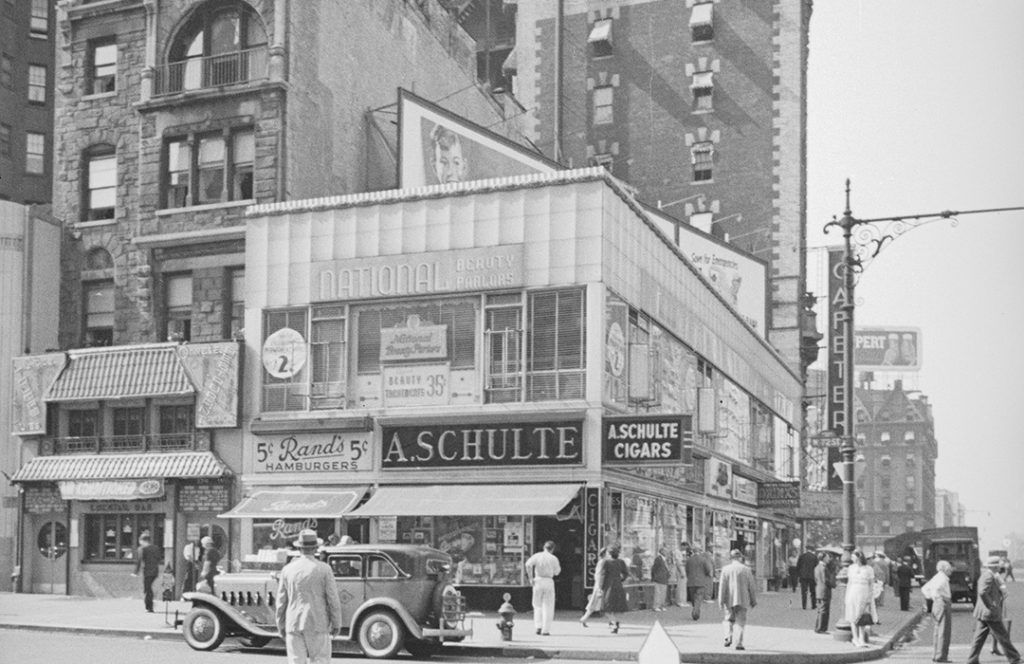
Finishing School to Terra Cotta Finishes
The oldest private school for girls in New York City was established in 1816 by Mrs. Esther Smith. In 1834 her brother, James Boorman erected a double-wide mansion at 1 Fifth Avenue, just above fashionable Washington Square, to house the school. And then in 1893, now run by the “Misses Graham,” it moved into the mansion at 176 West 72nd Street, on the southeast corner of Broadway. Here the daughters of well-to-do families were schooled in academic courses, as well as proper demeanor. The neighborhood chosen by the Graham sisters for the refined school was elegant and residential. But that would not last. By the end turn of the century the intersection had become increasingly commercial as both West 72nd Street and Broadway became major thoroughfares. And in 1904 a subway station was opened in the center of Broadway, directly across from the brownstone mansion. No longer the environment for genteel young ladies, the school moved on. Two years later the Real Estate Record & Builders’ Guide reported “Work will soon be started changing the 5-story residence, No. 176 West 72d street into a store, office and studio building.” The days of elegance were over.
3 Riverside Drive, The Kleeberg Residence
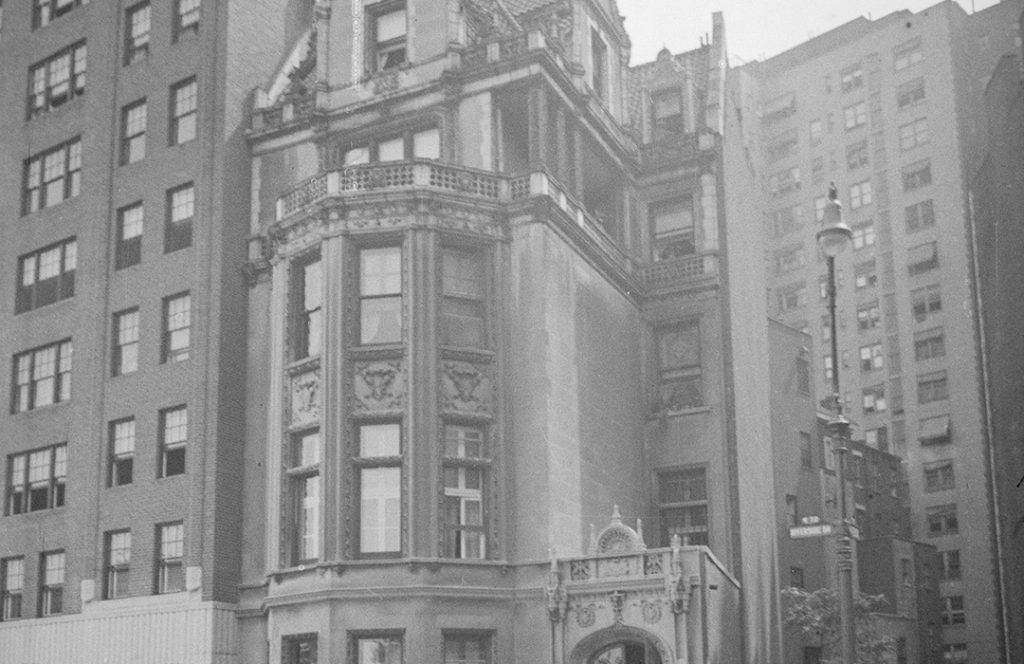
A Fit of the Blues and Recurring Dizziness…
In 1919, two decades after the fact, The Northeastern Reporter explained the rise of a string of lavish mansions at the foot of Riverside Drive, all designed separately by a single architect. “In 1896 one John S. Sutphen was the owner of the entire block between Seventy-Second and Seventy-Third streets fronting on Riverside Drive. He formed a general plan to improve and develop the land, and filed in the office of the register a map dividing it into lots.” The first sale, according to the Reporter was in June, 1896, including a plot “to one Kleeberg.” Construction of 3 Riverside Drive took two years and as it neared completion, The Real Estate Record & Builders’ Guide gave a hint at the high-end details when it reported that the Hernsheim Architectural Iron Works was at work on a “bronze vestibule gate for the handsome dwelling No. 3 Riverside Drive, Chas. P. H. Gilbert, architect.” Construction was completed in 1898 and the Kleebergs, who had lived at 56 East 73rd Street, now defected in a nearly straight line across the park. Whereas the mansion was solid, the Kleebergs’s marriage may have been a bit shaky.
30 W. 72nd Street
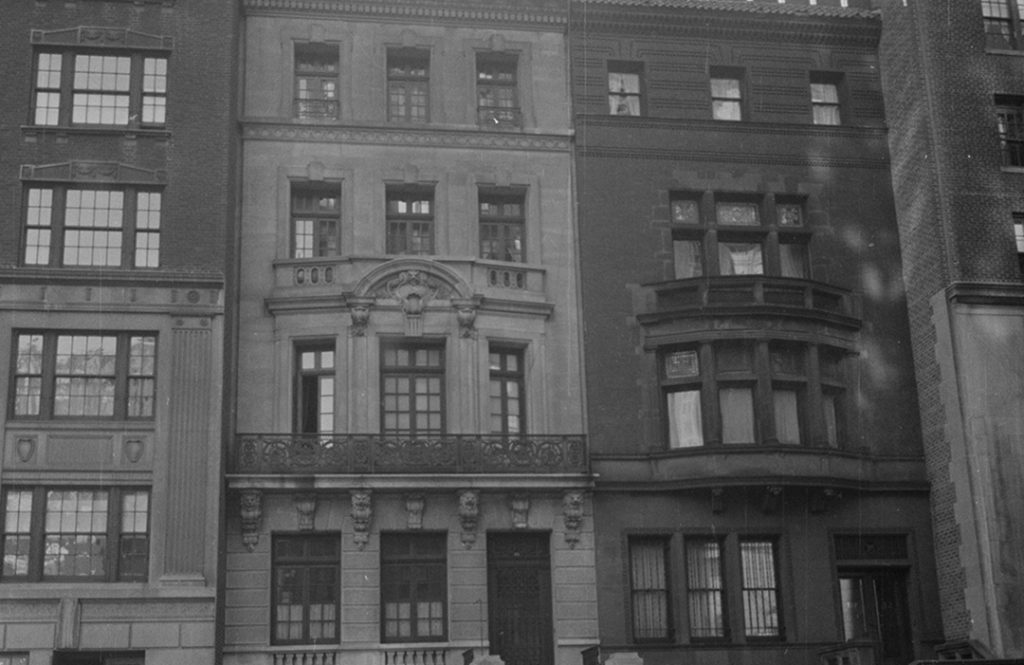
Old, and New Deals
Born in Mannheim, Germany in 1856, Henry Morgenthau came to America as a boy with his large family (he was one of 11 children) in 1866. Although educated as a lawyer, Henry’s fortune came mostly through real estate. In 1882 he married Josephine Sykes. The couple had four children, Helen, Alma, Henry Jr. and Ruth. At the turn of the century, the neighborhood of West 72nd Street and Central Park West was elegant and refined. In August 1904, Morgenthau purchased the vintage, four-story brownstone at 30 West 72nd Street, demolished it, and then hired the architectural firm of Buchman & Fox to design a high-end residence on the site. The old house had cost $80,000, and construction costs of the structure were $70,000, bringing the total outlay to about $4.65 million in today’s dollars. Faced in stone and completed the following year, it was a reserved take on the French-inspired Beaux Arts style. A dog-legged stoop rose to the rusticated parlor level. The three upper levels, which sat upon a prominent bracketed cornice, featured an angled bay at the second floor with an elaborately carved arched pediment. A stone balustrade created a balcony at the third floor. Henry Jr. was 14-years old when the family moved in. The privileged boy got in trouble almost immediately.
50 W. 72nd Street
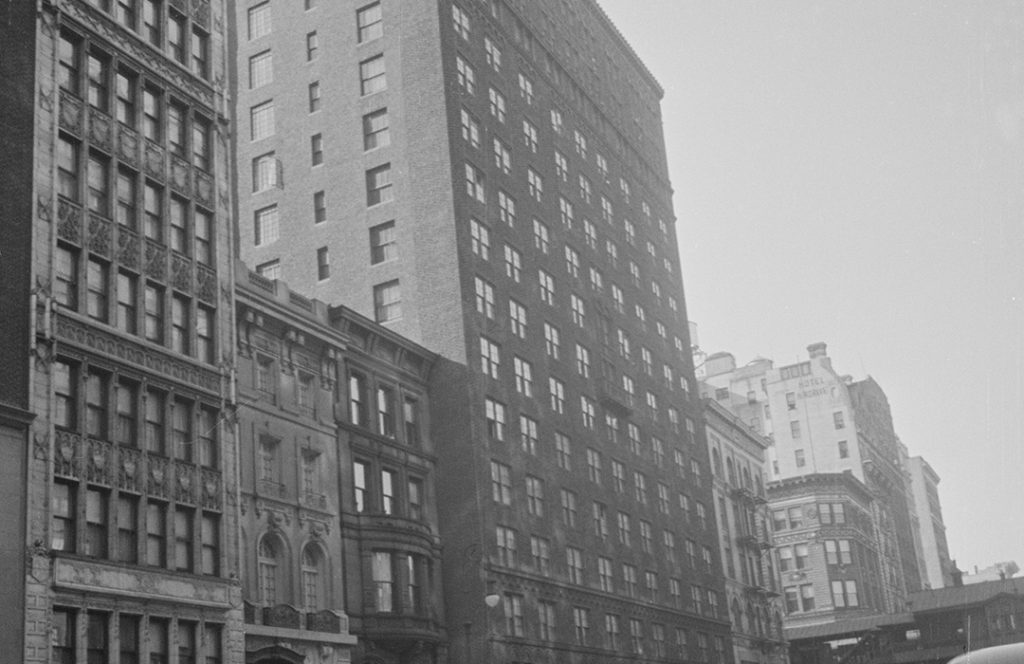
Gangsters and Showgirls–often Both!
By the mid-1920’s the rows of fashionable private residences that had lined West 72nd Street at the turn of the century were being replaced with commercial and modern residential buildings. In 1926 a group of investors, the 48-56 West 72nd Street Corp., hired the architectural firm of Sugarman & Berger to design a residential hotel on the former site of five high-stoop houses. Residential hotels differed from apartment buildings in that they offered the services of a hotel—maid service, for instance—and did away with kitchens and dining rooms in the suites. Residents ate in a large restaurant-like dining room or had meals delivered to their rooms. The concept eliminated the need for most personal servants. Several of the residents of the Hotel Ogden were in the entertainment business. One was Annette Jenkins who had given up her career in motion pictures when she married aviator and engineer George Jenkins. She had not given up her close contacts in the field, however, and on Christmas Eve 1928 she drove motion picture promoter Harry Richards and his sister, Mrs. Lotta Groves, in her automobile to a Bronxville party.
53 W. 72nd Street
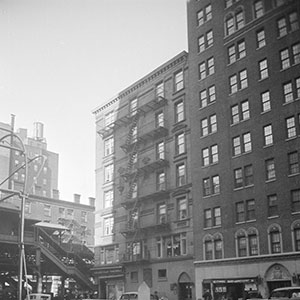
Singers and Sinners
Leopold Friedman was a partner in the real estate firm Lespinasse & Friedman, perhaps best known for erecting the massive Navarro Apartments on Seventh Avenue between 58th and 59th Streets. On occasion he would take on a project on his own, however, and such was the case in 1888 when he purchased the northeast corner of Columbus Avenue and 72nd Street as the site for an apartment and store building to be called The Janet. Friedman would not see the structure completed, however. On January 12, 1889 the Record & Guide reported that Lespinasse & Friedman had “suffered a great loss in the decease of its junior member, Mr. Leopold Friedman.” Before the end of the year The Janet was ready for occupancy. Seven stories tall and designed by Charles Buek & Co. its red brick façade was splashed with Queen Anne style terra cotta decorations. Bands of flowery tiles, decorative panels, and arched pediments adorned the building. Most striking of all were the two blind openings on the 72nd Street elevation. Filled with fruits and flowers they sat upon half-round bowls and wore classical triangular pediments. Living here in 1921 were operatic baritone Luigi Cavedini and his wife Angelica. Both were known to opera goers by their stage names, Mario Laurenti and Angelea Laurenti. Domestic upheaval erupted that summer after Luigi went to their country bungalow at West Hurley, New York alone. Suspicious of what he was up to, Angelica soon followed. She crept into the dark house on the night of July 11 where, according to The Standard Union newspaper, “she saw the singer and an Italian woman in a compromising position.”
1 West 72nd Street/121 Central Park West - The Dakota
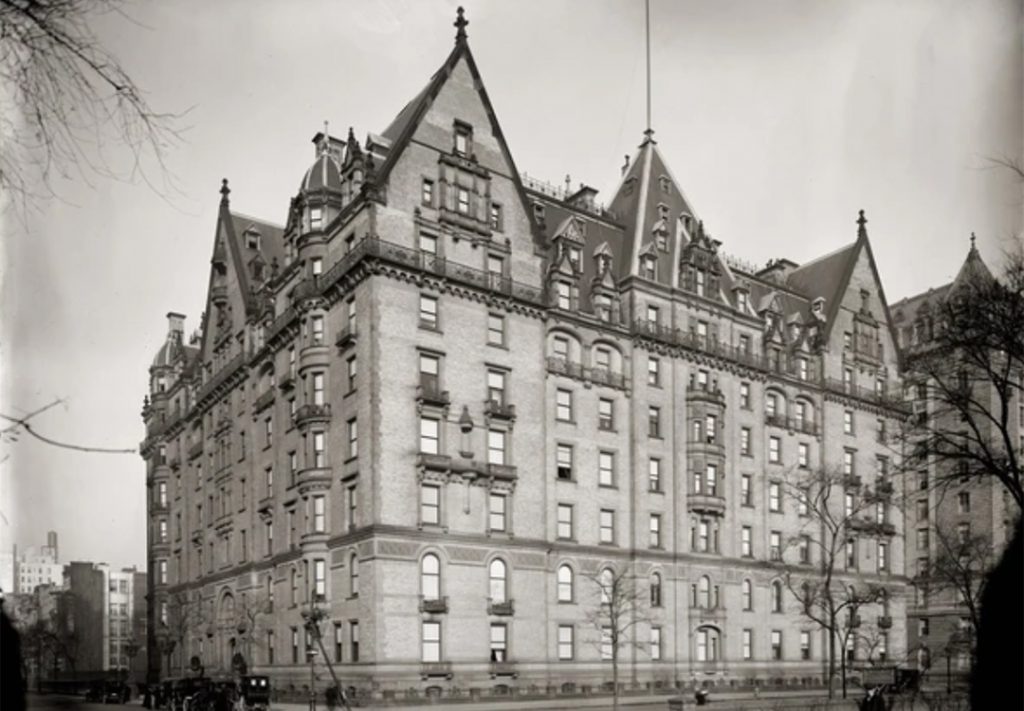
Clark's "Family Hotel"
If a stitch in time saves nine, imagine what the Singer Sewing Machine magnate can achieve when they decide to develop a site in the northern hinterlands of West 72nd Street! The Dakota set the bar for modern apartment living in its day and still leaves those who pass by in awe. Imagine the stories those walls could tell. . .
READ MORE
15 W. 72nd Street
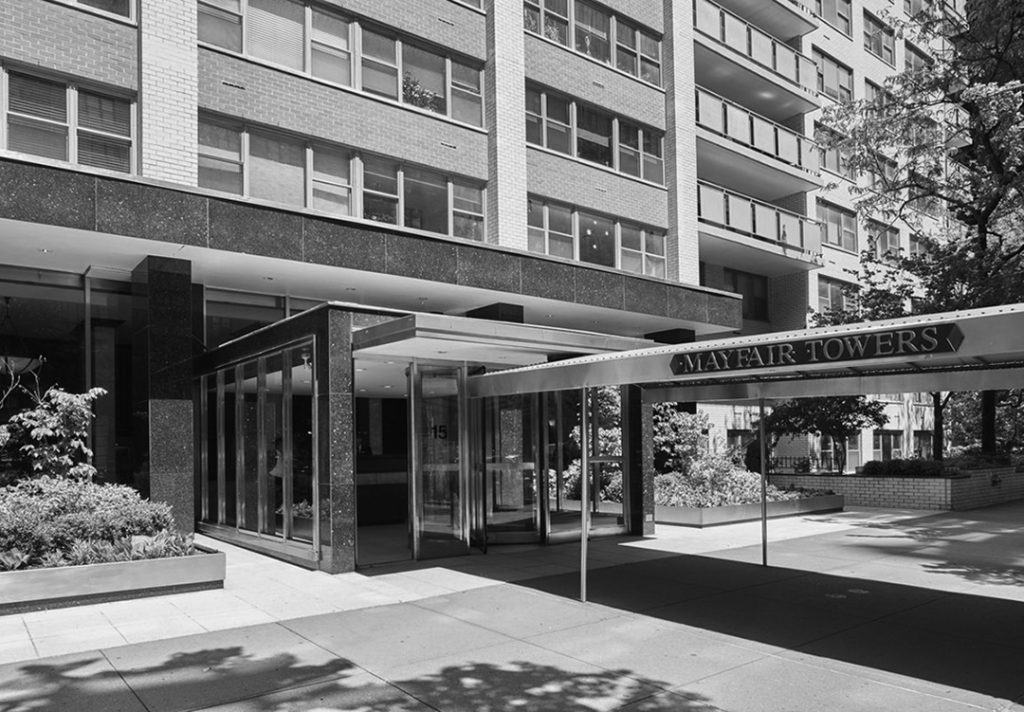
Belgian Sweets, Vienese Sights, & Russian Sounds
This private oasis for the well-heeled Dakota residents flipped to the tallest west side post-war building of its day. While it won't be winning any architectural awards this site hosts its own stellar cross-section of UWS notables with several emigres establishing themselves in the new world and leaving their mark on New York Society.
READ MORE
37 W. 72nd Street
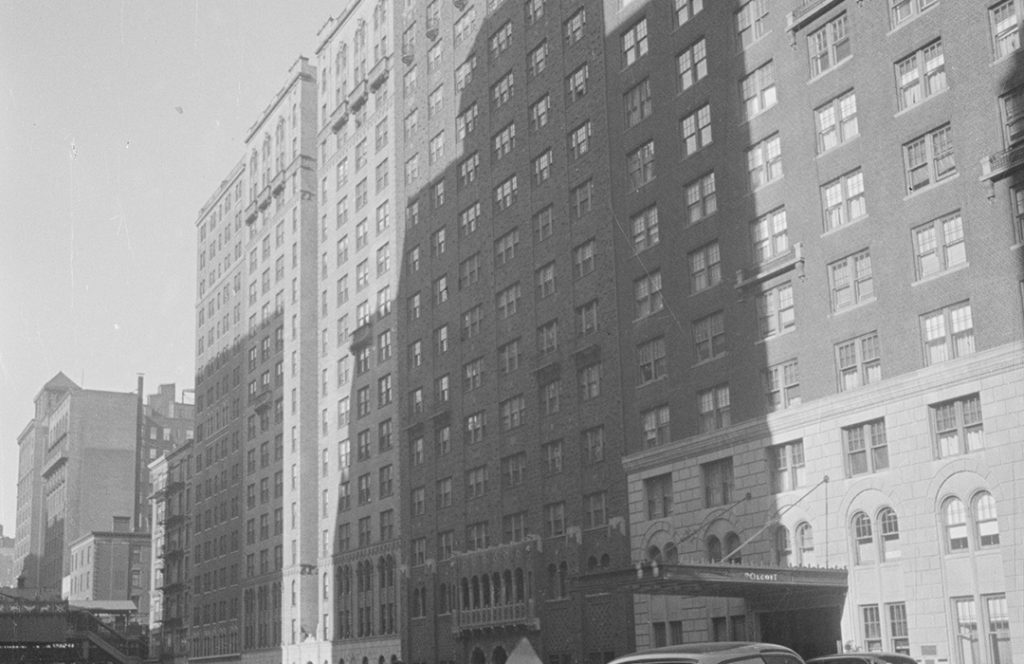
A "more pleasing type" of architecture
Open in time for the Stock Market Crash of 1929, 37 West 72nd Street's residents were buffered from the economic impacts, but not all were as lucky. Take the doorman, former vaudeville actor Harry Glaser or his common-law wife, Mona who spent her days as a hotel chambermaid. This building laid bare its own tale of two cities...
READ MORE
133 W. 72nd Street
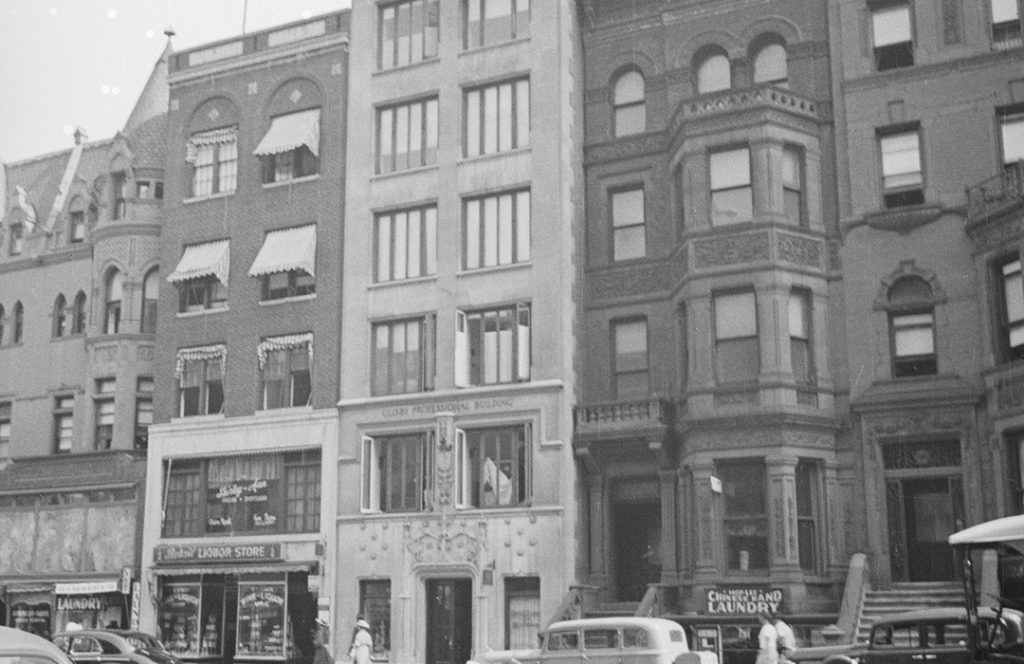
Especially for Doctors, Specialists, Dentists
This fine residence gave way to references of the medieval Cluny Palace in Paris. With rental spaces "fitted for “gas, compressed air, X-Ray wiring, [and] telephone connections,” the operating rooms were equipped for minor operations. Perhaps to prevent unwanted stains, the floors were “ox-blood tiled.”
READ MORE
137 and 139 W. 72nd Street
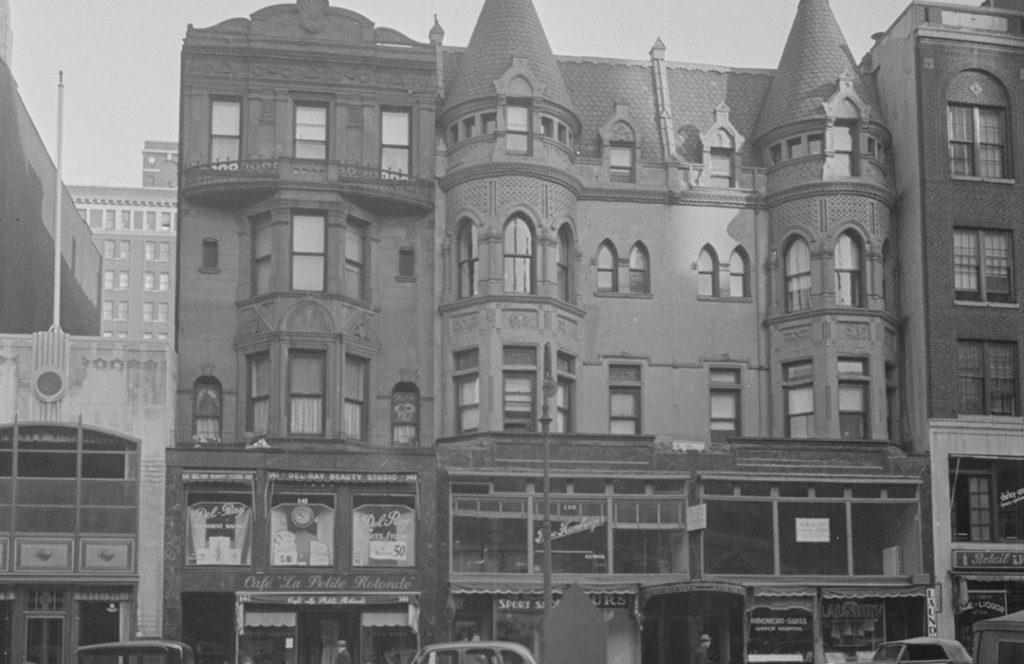
Fit for a Governor
When not on his sprawling estate in Ridgefield Connecticut, or in the Adirondack Mountains, or in Florida, Phineas Chapman Lounsbury and his wife, the former Jennie Wright made do at 137 West 72nd street following their stint in the Connecticut Governor's mansion. While they set the genteel tone for the buildings, 68-year old resident of 139, Clara Seabury who "adopted" 40-year old Albert turned heads...
READ MORE
141 W. 72nd Street
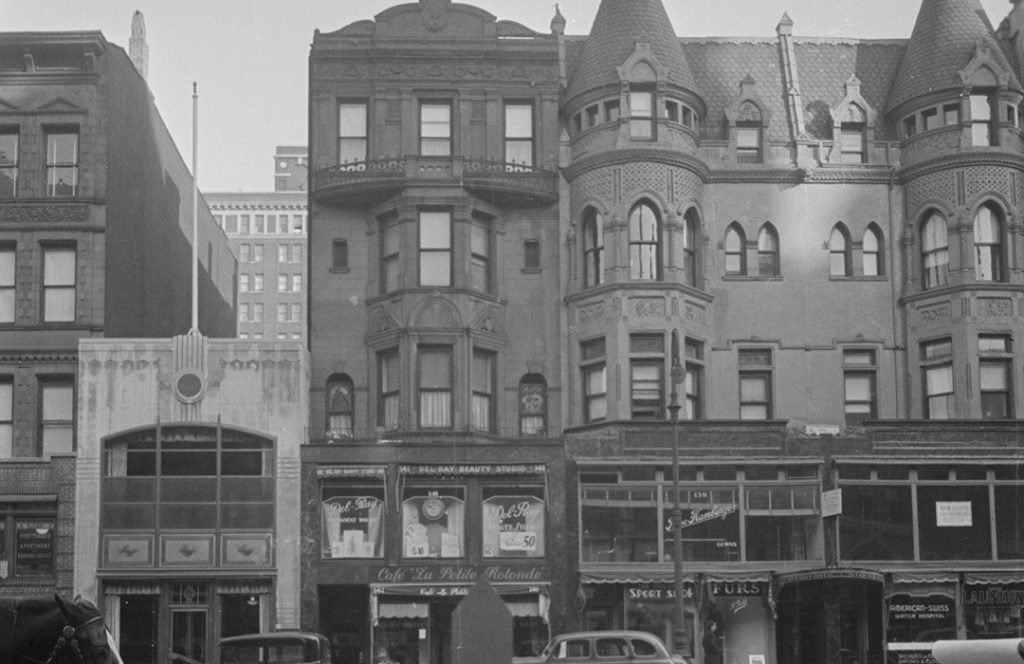
Engagements: Broken and Otherwise
Signor Antonio Scotti, the well-known baritone of the Metropolitan Opera Company, married Miss Mary Britton Leary, not long graduated from the Convent of the Sacred Heart. Before long, her own heart would be broken as the Opera singer disappeared from her life without an encore. Years later, the Viennese Wiener Kaffeehouse Éclair filled the void at street level and warmed hearts of those yearning for nostalgia of home.
READ MORE
143 W. 72nd Street
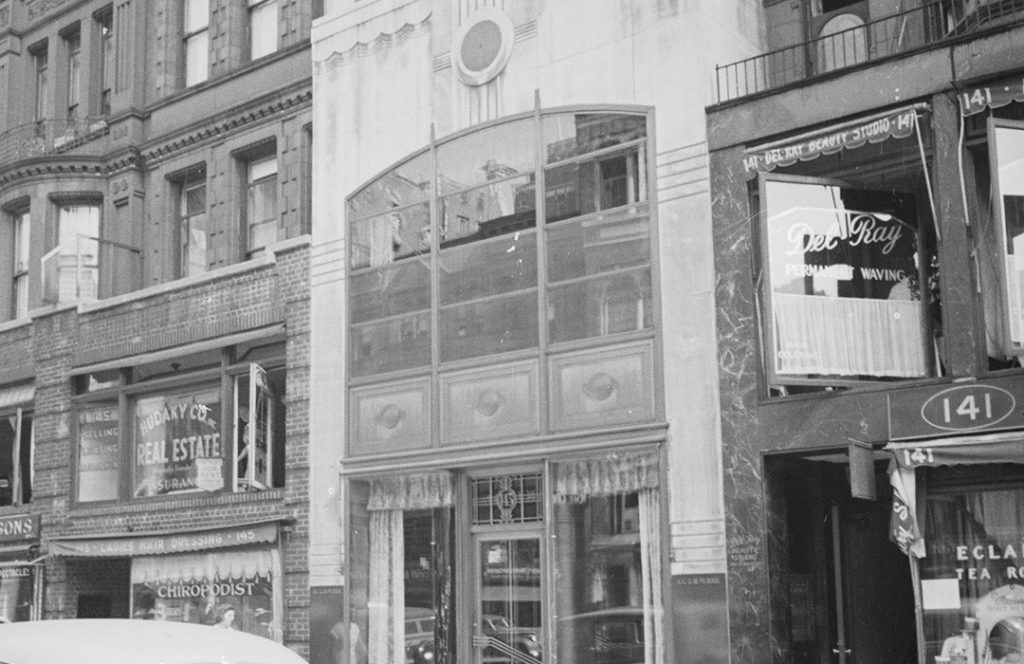
A Victorian Dowager in a Jazz Age Dress
These Daughters of the American Revolution took in boarders and then a $9,800 price chop (more than $280,000 drop in current dollars) on their family mansion at 143 West 72nd Street. The winning bid went to Doctor William Broadus Pritchard, who famously analyzed Harry K. Thaw in the "Murder of the Century" case about the assassination of archtiect Stanford White.
READ MORE
159 W. 72nd Street
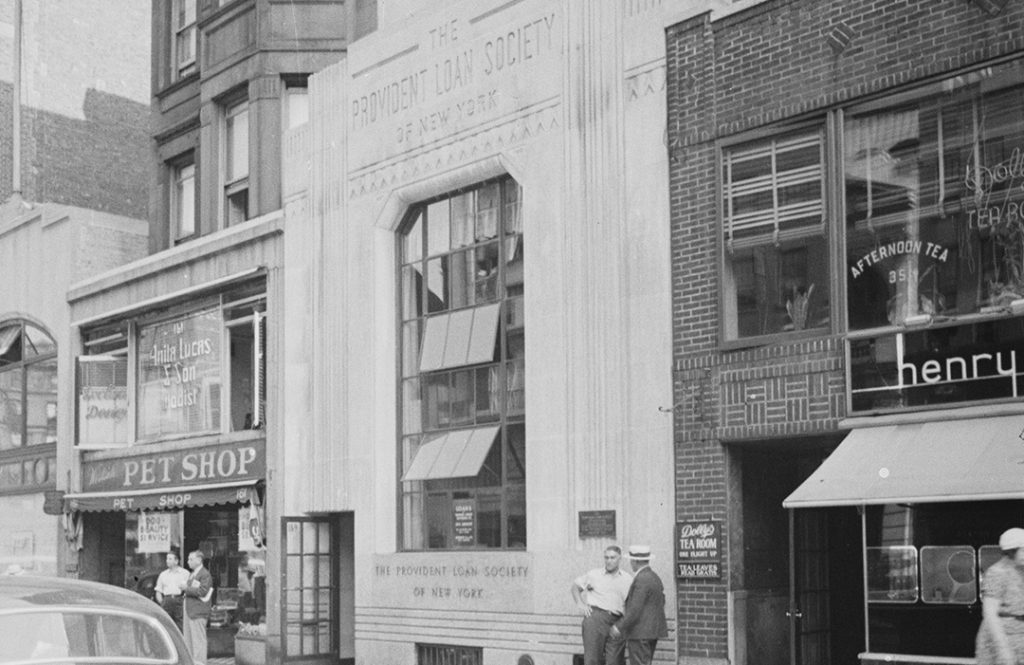
Provident Paint
Following the Financial Panic of 1893, the Mayor’s Relief Committee, encouraged the passage by the legislature that incorporated the Provident Loan Society of New York on May 21, 1894. This society offered hope to those in need with what one might deem "micro loans" in today's terms to cover their debts. Today people visit to cover their walls with paint. The building has been refaced, but the ceiling holds secrets of its past life.
READ MORE
163 W. 72nd Street
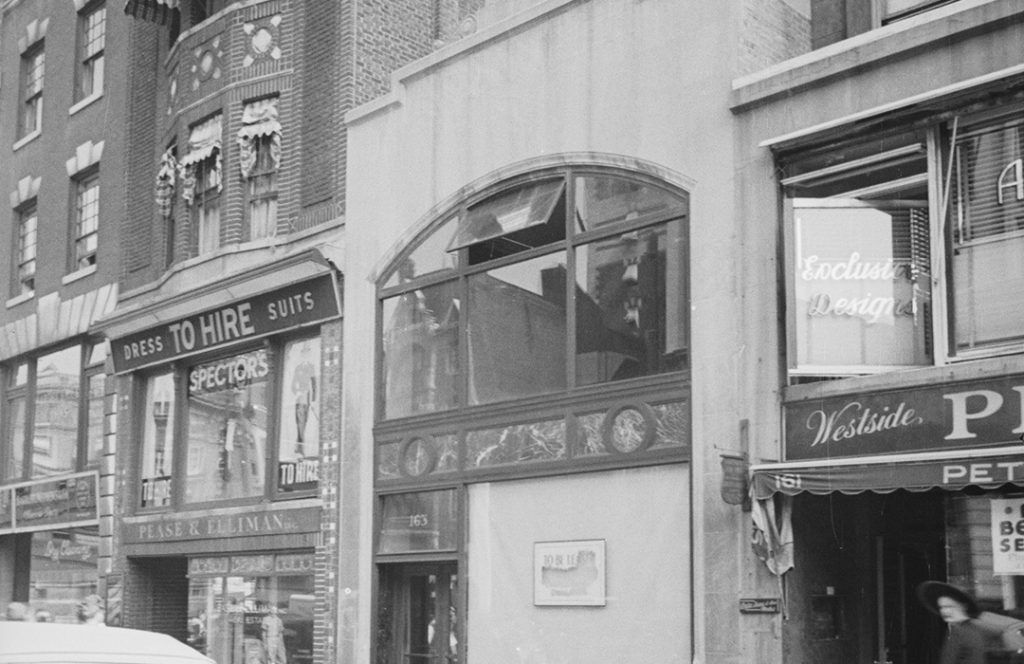
Fewer Stories, More Character
After this private home gave way to the New York Conservatory for Music as its encore, before developers replaced it amidst shakey economic conditions. The new two story Art-deco taxpayer housed offices and a home for a Singer Showroom.
READ MORE
165 W. 72nd Street
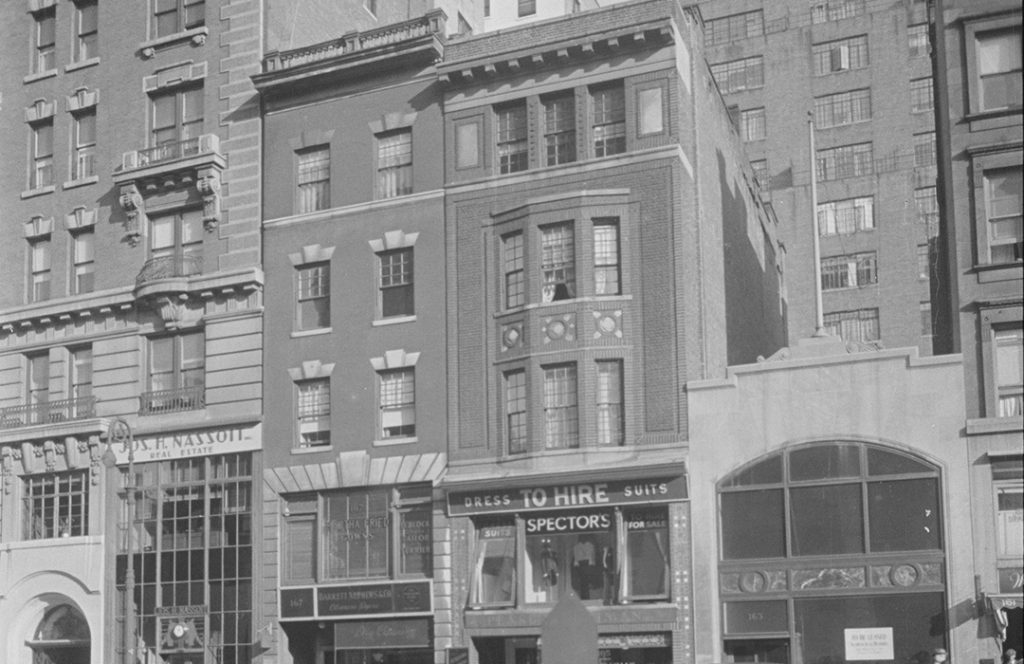
The Arts & Crafts Style Pease & Elliman Building
Whereas other mansions along the street lost their stoops and remodeled to accomodate storefronts and often boarders, number 165 chose to reface its base with Arts and Crafts Tile. Intricate Celtic knots, depictions of medieval lions and knights, and stylized flowers decorated individual tiles. Above the ground floor storefront a long panel depicted a feudal town in the Biblical inscription Letificat Civitatem Dei, or “Makes Glad the City of God.” What were they covering?
READ MORE
200 W. 72nd Street
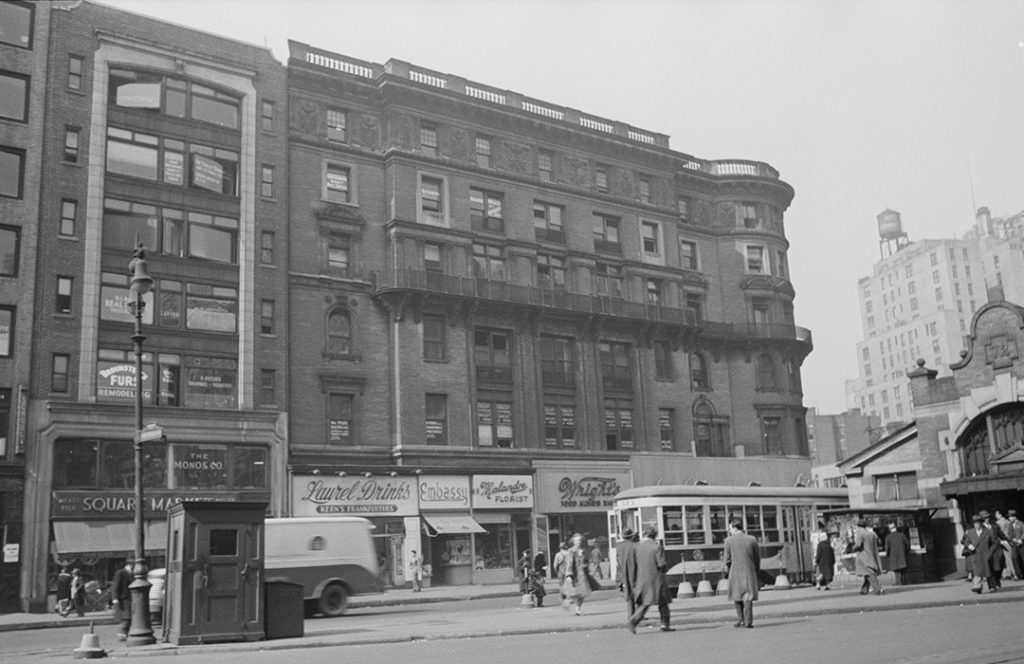
Lost Colonial Times
This out-of-place Club that was too-far west, and too-far north broke the rules, admitting women, shunning its younger members, and before very long broke itself. The well-heeled could not keep it afloat yet the structure stood for over a century. There is no mention if the developers who replaced it recovered the cornerstone which held a copper box containing "club manuals and documents, a photograph of General Sherman’s funeral passing Fifth Avenue and 23rd Street, a Civil War badge of the Grand Army of the Republic, copies of various newspapers and poems written by member William M. Kerr to “Our Children’s Children’s Children.”
READ MORE
201 W. 72nd Street
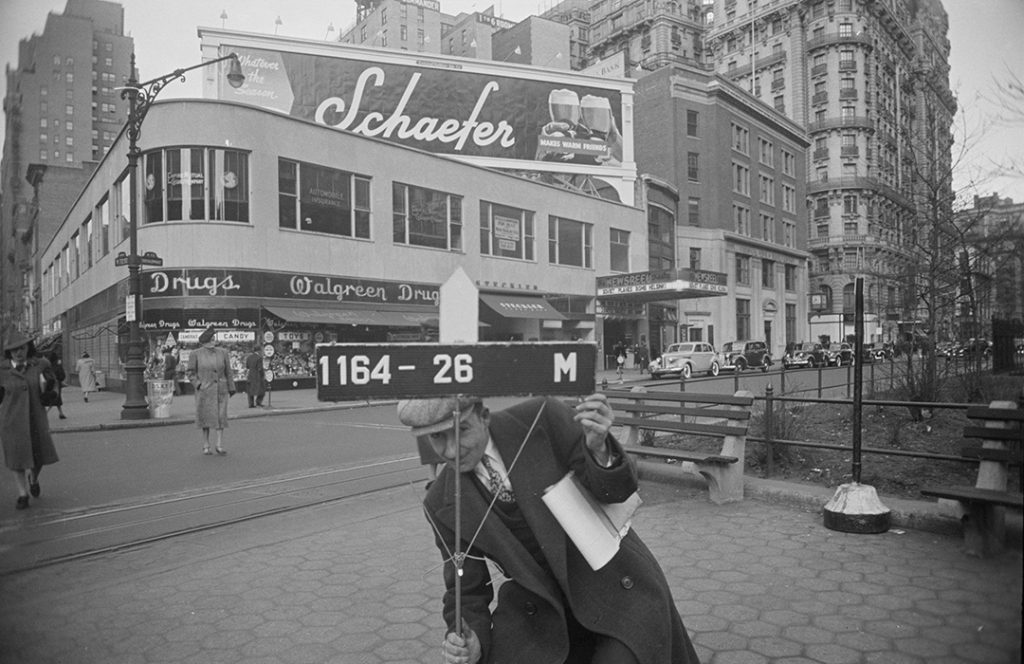
The News Reel Theater or The Hotel St. Andrew?
This hotel became a theatre but now there's nothing to "see" here.
READ MORE
214 W. 72nd Street
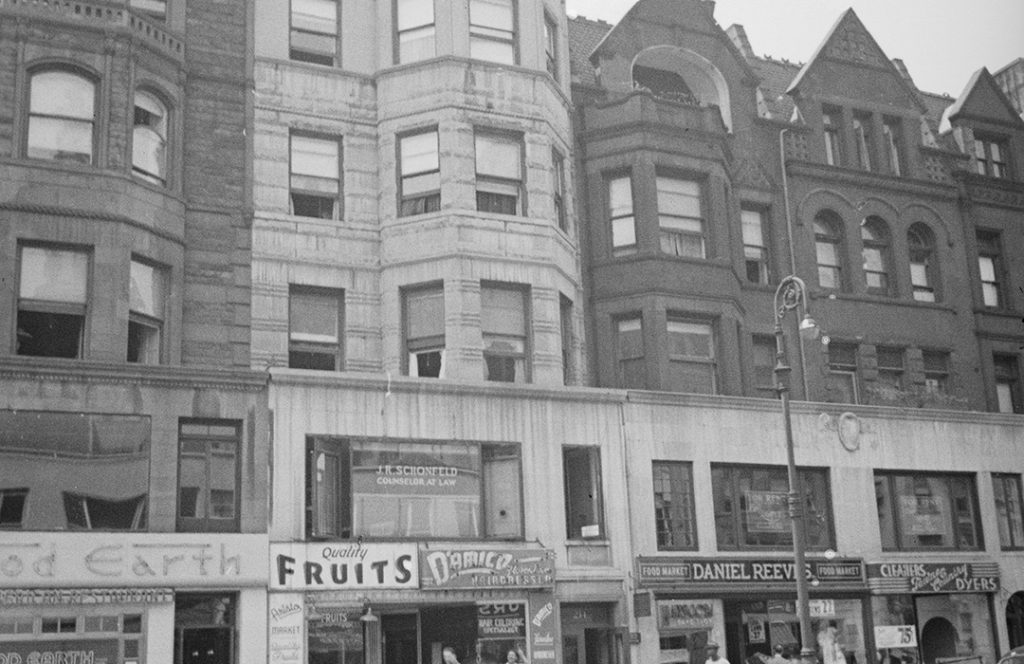
Dorothy Parker's Childhood Home
"What fresh hell is this?" Imagine what would Dorothy Parker have to say about her childhood home, run by her stepmother demolished and replaced with a sliver in her name? As for this entry, she might quip “I don't care what is written about me so long as it isn't true.”
READ MORE
228 W. 72nd Street
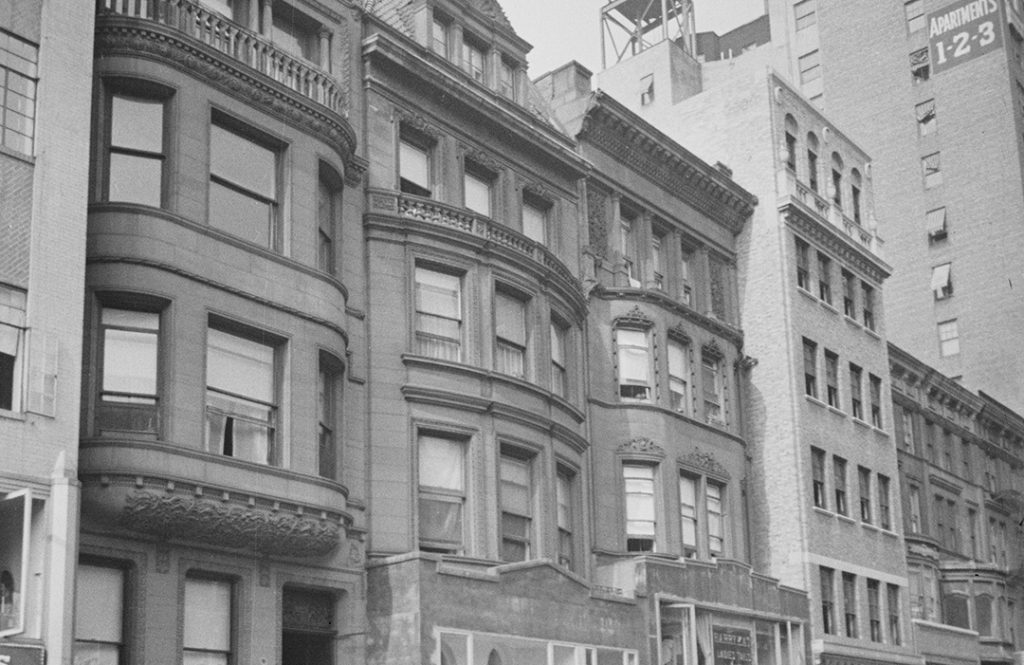
A Fine Residence, for a Short Time
Number 228 was arguably the finest among over 175 constructions by George C. Edgar's Sons & Co. But its life as a fine residence would be short, serving several stints as various schools, a women's hotel, and even home to a boarding house with a Count and Countess in residence. In later years, a smear campaign tried to discredit prize fighter Carey Phelan's reputation. What opinion would NY Supreme Court Justice Martin J. Koegh, the first resident have about all these developments?
230 W. 72nd Street
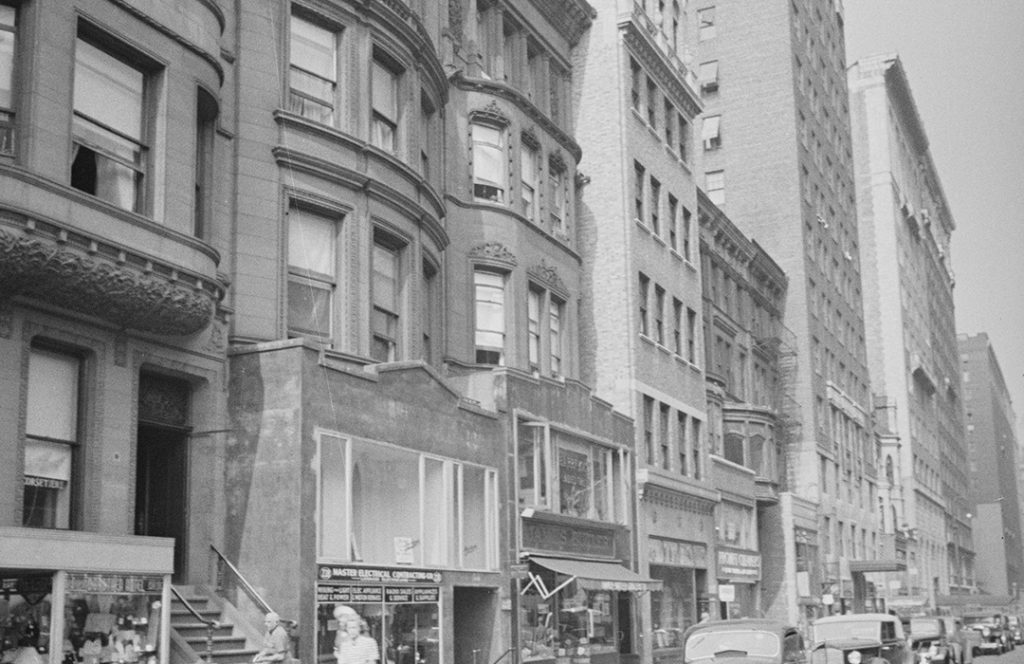
Medical Quack and a Butcher's Dose of Reality
The butchers at Fischer Brothers & Leslie of 230 West 72nd Street have seen a lot in their more than seven decades of business, but they aren't afraid of looters. “So they break in. What are they going to steal? Meat? Let them take it.”
READ MORE
243 W. 72nd Street
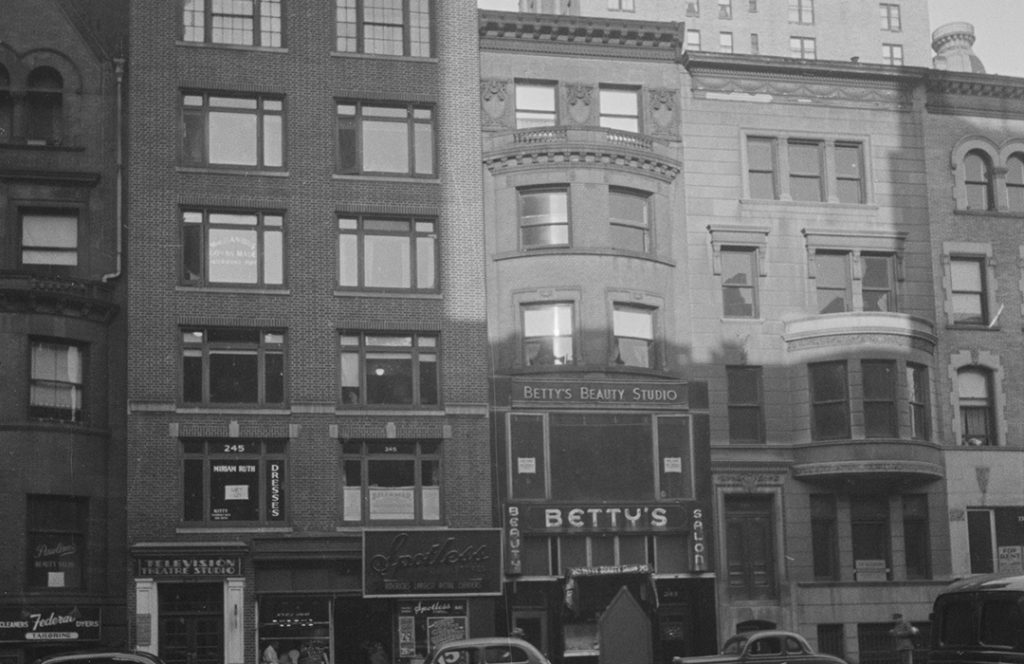
The Kate E. Morgan House
A jealous chemist–or druggist–by profession, Albert J. Morgan had access to deadly chemicals and, as it turned out, he was not a man to be crossed. In 1898, after he became engaged in a feud with Harry Seymour Cornish, the athletic director of the Knickerbocker Athletic Club, he mailed a bottle of Emerson’s Bromo-Seltzer to Cornish’s attention at the Club. Molineux had mixed the medicine with cyanide of mercury, but unknowingly administered it to his cousin, Katherine Adams to soothe her headache...
READ MORE
247-249 W. 72nd Street
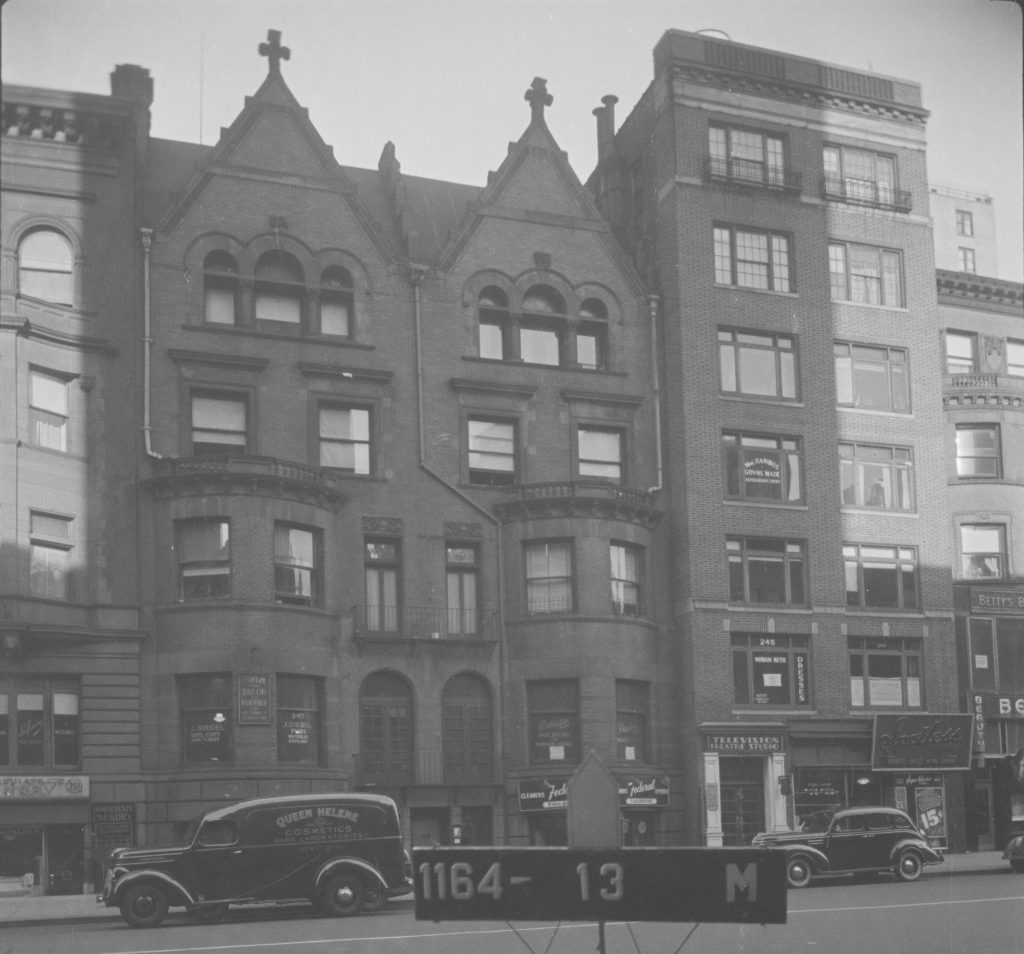
A Baby Saved, A Mother Arrested
While the maid had one child, hers is the key story of these sibling buildings--discovered by muffled cries coming from the furnace. Before the owners smoked out the source, the baby was saved and mother arrested. While other residents tended to tamer pursuits, these twins may have been similar, but each had their own personality.
READ MORE
251 W. 72nd Street
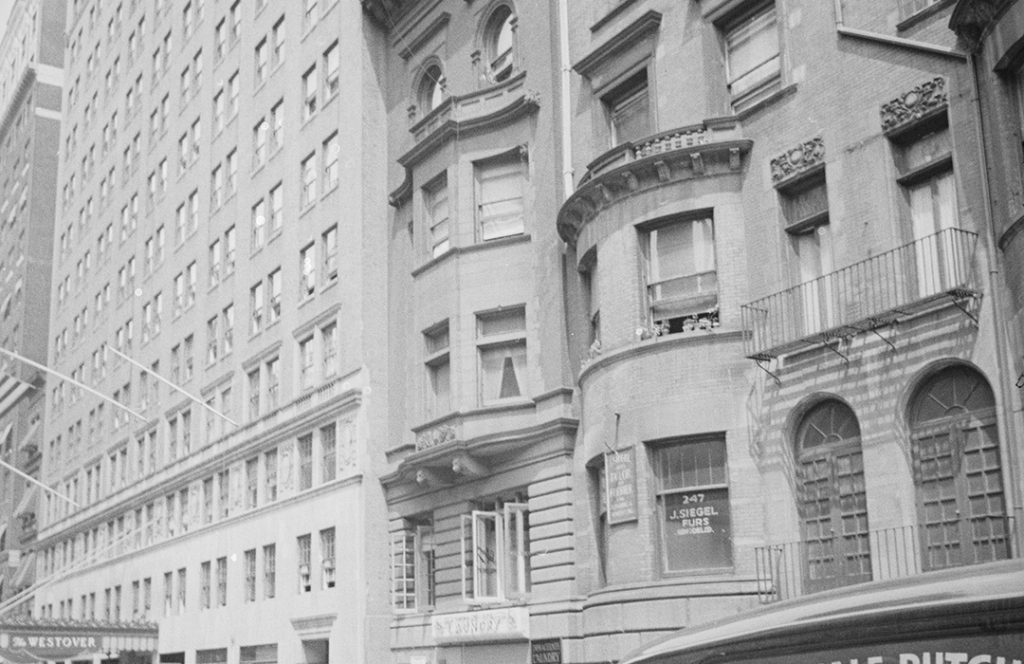
A Widow with Life Insurance
Let's hope the widow of Joseph F. Knapp who was the president of the Metropolitan Life Insurance Company had Life Insurance before he died on the steamship while at sea. She parlayed a house trade for a new Lamb & Rich concoction bringing her into the center of it all, before she traded again. The Bigelows were the sustaining family, while others tred more lightly...
READ MORE
250-254 W. 72nd Street
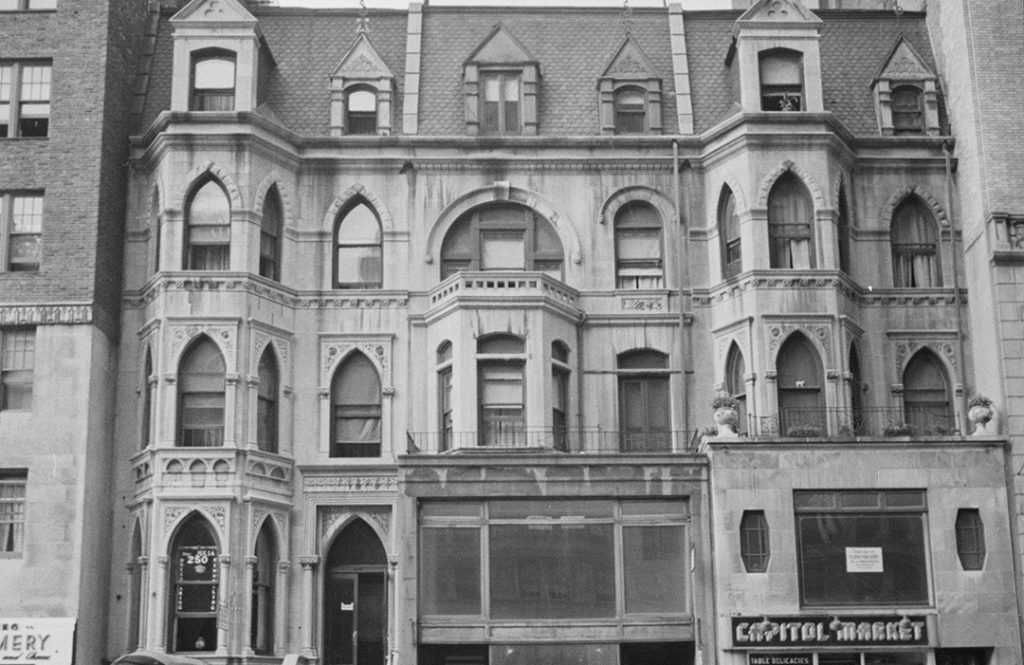
An Upscale Boarding House Meets a Gentleman Robber
Still rather grand private homes, Number 250 was already being operated as an upscale boarding house by “Mrs. Morse.” Her boarders allegedly came from the upper crust. One was Mr. Lawrence Macy--a gentleman confessed to robbing 15 women. When finally apprehended after “a long chase on the roof of a house in the Elizabeth Street Precinct,” in August of 1895. The total value of his loot was estimated to be around $5,000.
READ MORE
265 W. 72nd Street
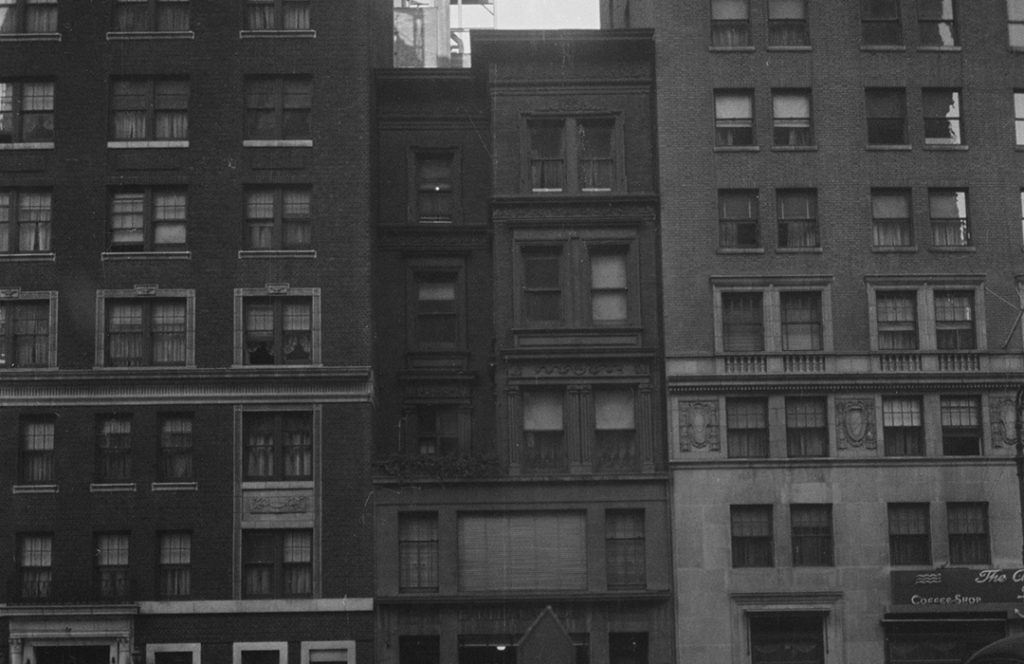
The Incident of the Revolving Door
In 1909 Moses Greenwood, Jr. and his wife, the former Margaret Woods went for a night out, but the former got knocked out. Just as Henry P. Hopkins was trying to keep up, he needed to get ahead to flee the chase of policemen. By the end of the night, neither man was a gentleman, and neither achieved what they bargained for.
READ MORE
271 W. 72nd Street
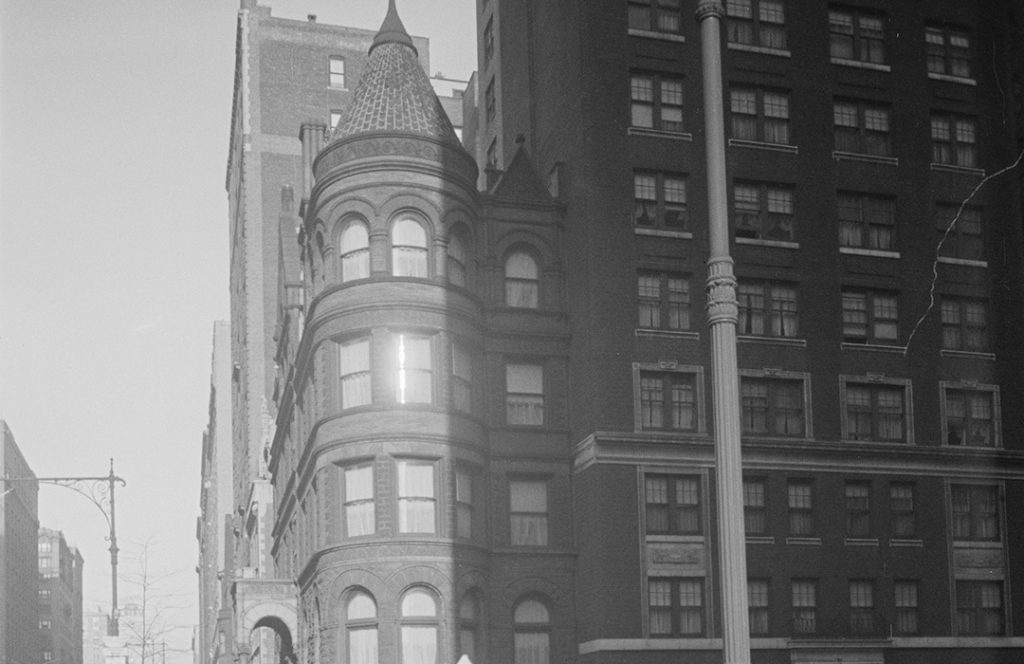
The Aldrich Mansion
Some express riders from the Bronx felt others were not keeping approriate social distances so out came the knife and Vernon Graham knocked Mary McAuley to the station platform. The pursuit ensued and the Aldrich Mansion had an unwitting starring role. How so?
READ MORE
309 W. 72nd Street
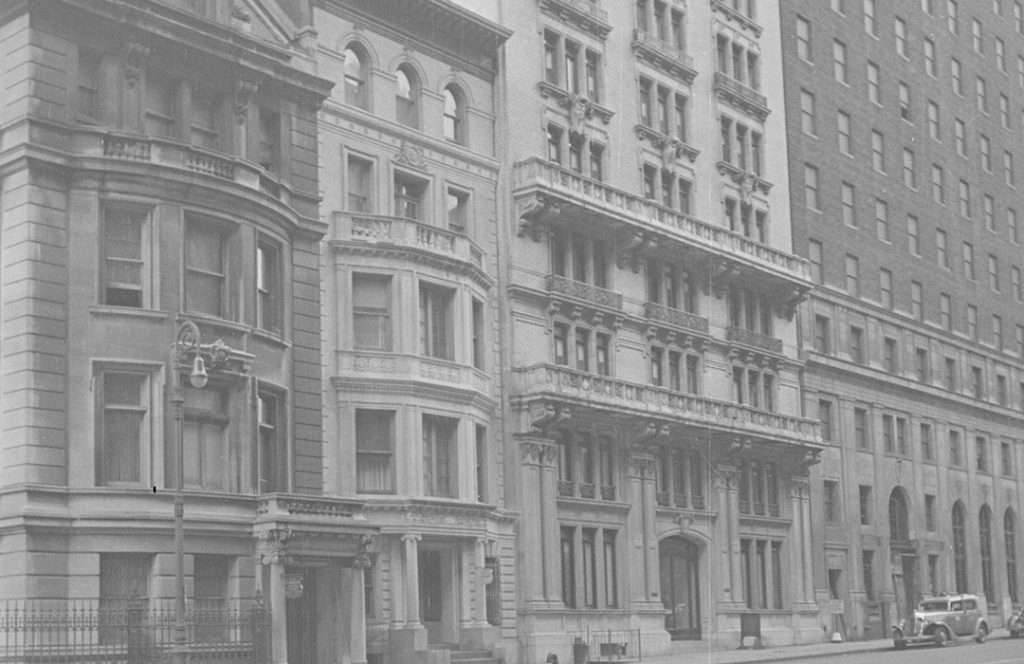
Town Topics Tragedy
Town Topics was read with delicious zeal. Those at the highest levels trembled in fear of being mentioned in William Dalton Mann’s scathing columns. He rarely printed names; but gave tantalizing and obvious clues like “though unfortunately a woman, is not an American, but a specimen of British aristocracy.”
READ MORE
311 W. 72nd Street
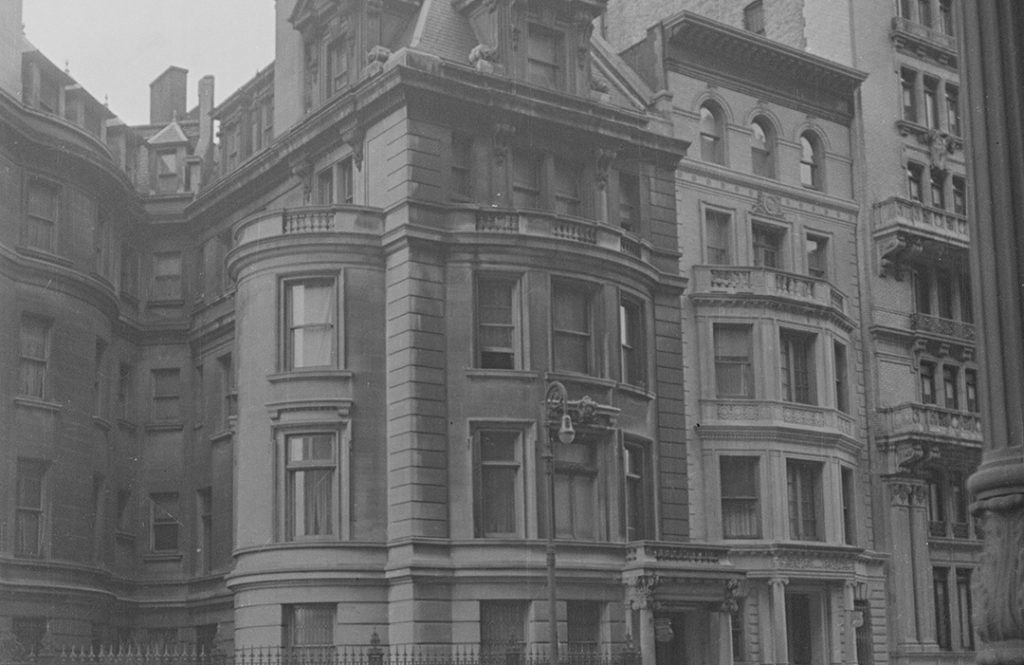
Twilight Sleep and Other Unwarranted "Advances"
Built for the daughter of the David S. Brown & Company soap firm, this life of the Sutphen house is a bit of its own soap opera. Residents banded together to stop a neighboring sanitorium, because “The business is noxious and offensive to the neighboring land owners.”
READ MORE
338 W. 72nd Street
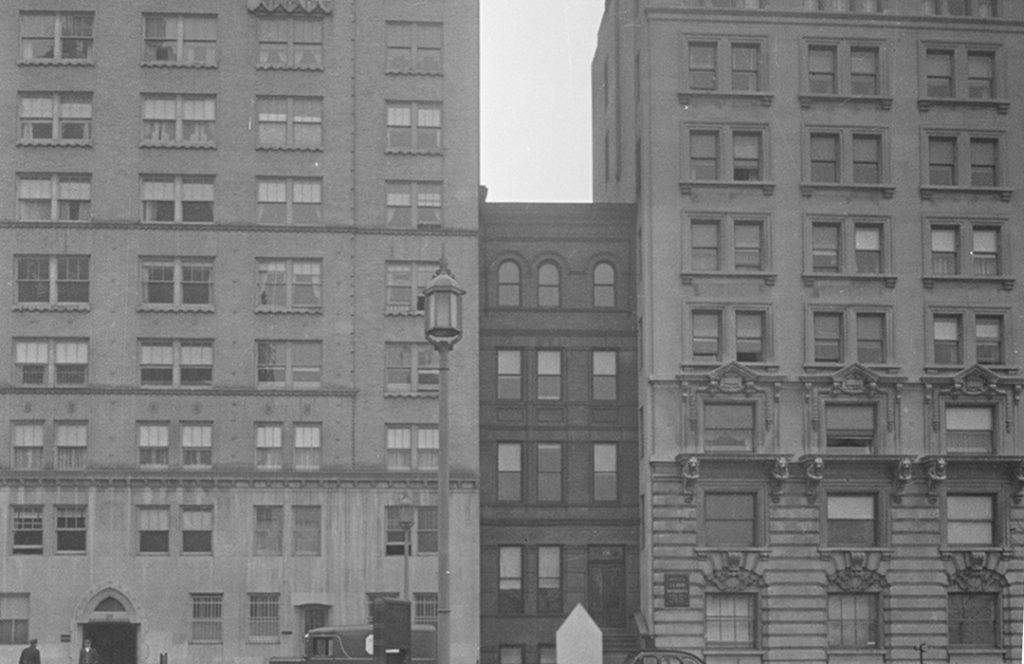
An Education in Law, Liturgy, Opera and Art
Now hemmed-in, the Fowler Residence at 338 West 72nd Street was hiding in plain site but maintained several secrets. In November 1906, the 72nd Street house would be the scene of an undercover wedding. The Rev. D. John Wesley Hill, pastor of the 2,000-member Janes Methodist Episcopal Church in the Stuyvesant Heights section of Brooklyn, had been widowed for about three years. A romance developed between him and a member of the congregation, Mrs. Theodore Schmidt, who had also lost her spouse...
READ MORE
344 W. 72nd Street
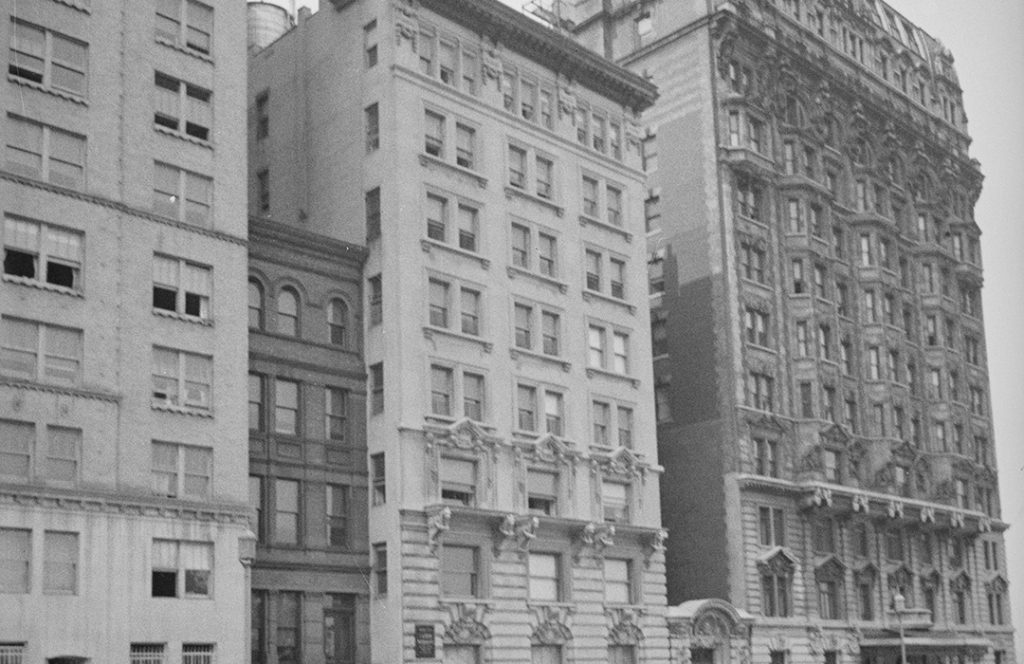
The Chatsworth: Where to Kidnap a Detective
There's a lot chat-worthy about the Chatsworth. The 66 apartments formed a self-sufficient structure that had its own lighting and refrigerating plant. Residents would enjoy a conservatory in the upper floor of the mansard roof “and is furnished as a sun-parlor for the comfort and convenience of the tenants,” said The World’s New York Apartment House Album. There was also a billiard room, café, barbershop, and tailor and hairdressing services...
READ MORE
105 W. 72nd Street
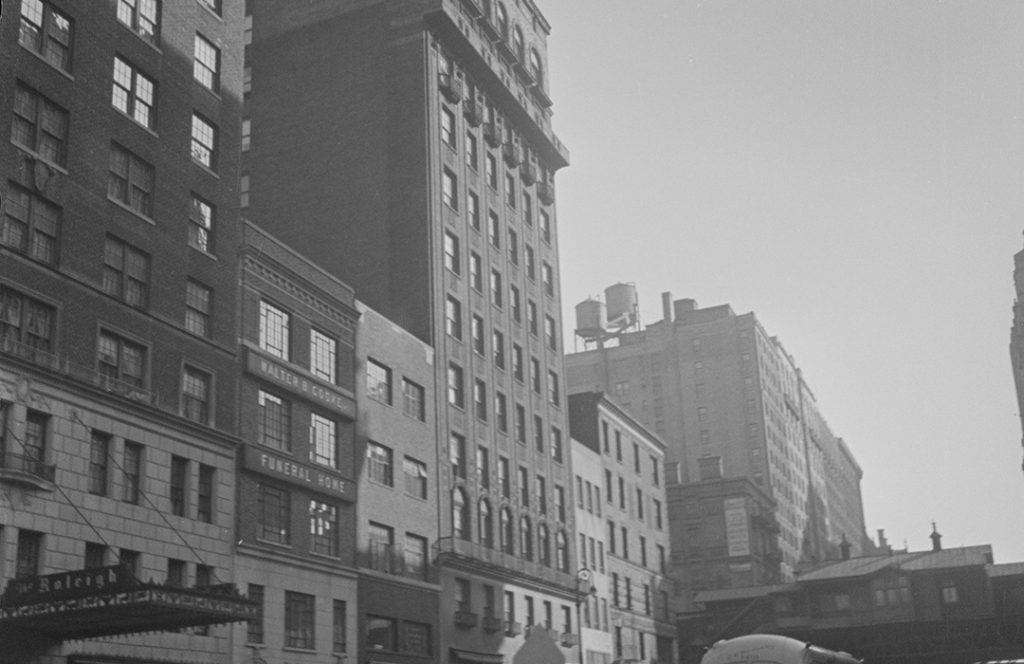
Churrigueresque & Cherished Chows
This churrigueresque”–over-the-top version Spanish Baroque–the brick, stone and terra cotta ornamentation guards an armada of stories--and mainly spurned lovers within its walls, but all is not dour. The building has more secrets to share as it winks at the pedestrians who pass by from its Art Nouveau storefronts...
READ MORE
1 Riverside Drive, The Prentiss Residence
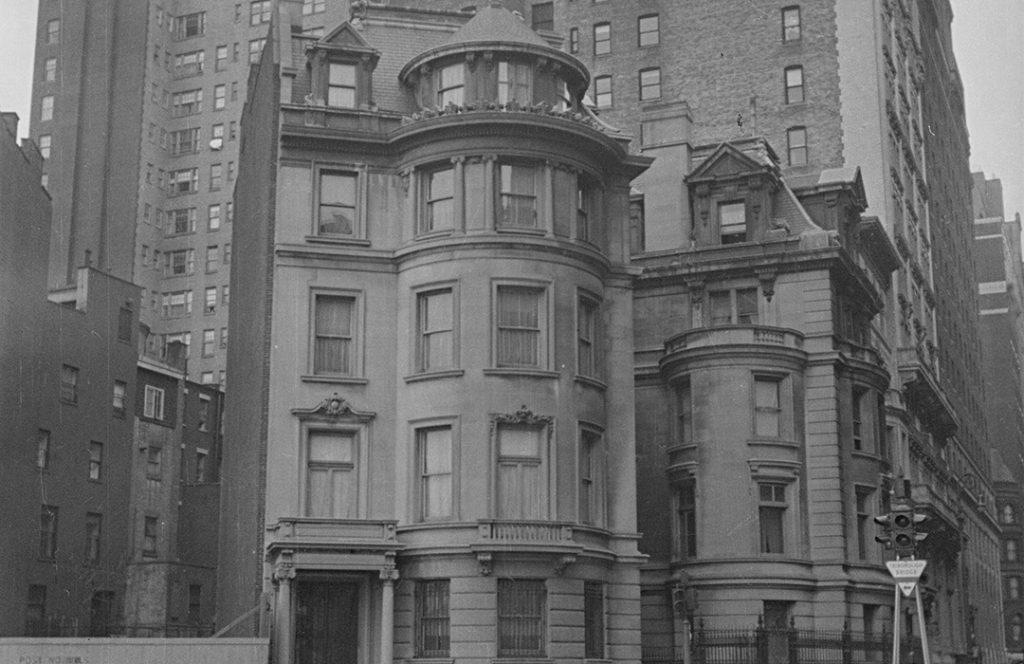
Land Covenants and Seized Property
The anchor of Riverside Drive with the prestigious address of #1 was part of a site plan conceived years in advance. Protecting the sanctity of the environs, land covenants were set prohibiting the erection of a slaughterhouse, brewery, livery stable, carpenter shop, nail factory, sugar refinery, menagerie “or any other manufactory, trade business, or calling which may be in anywise dangerous, noxious, or offensive to the neighboring inhabitants.” What could go wrong?
58 W. 72nd Street
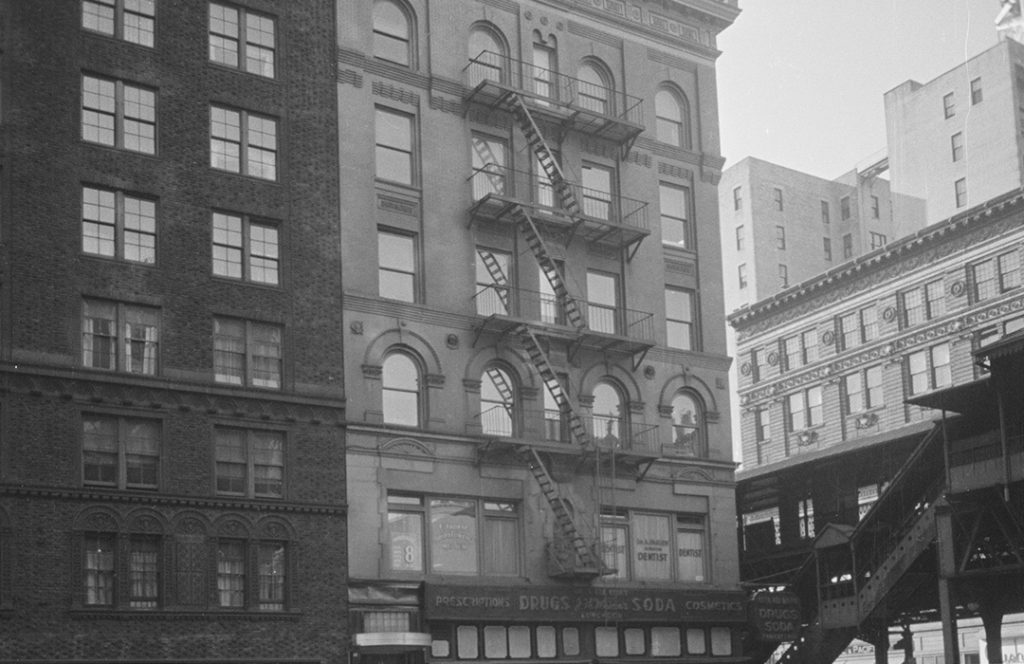
Dressmakers Stiffed and Dressmakers Kicked
A father's loss names The Adrian, and two brothers carry on the family tradition in honor of their brother. Built in reverence, not all the residents would take the time to think of others. Joseph Busteed attempted to dine, smoke and dash and haberdashery was the only matter of concern to Mary Valentine Yale. Frocks have costs, the price this time? Her marriage...
162 W. 72nd Street
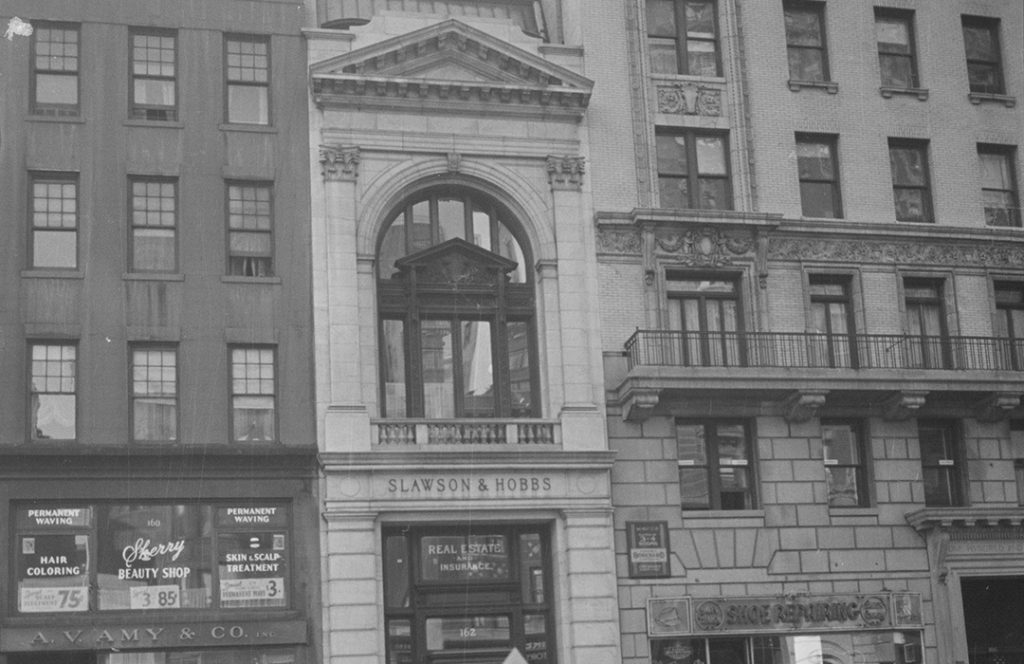
The Most Complete Office Building in the Real-Estate Business
Slawson and Hobbs noticed the tides turning and with a burgeoning real estate business, relocated to West 72nd Street. It was great foresight, but would they ever imagine a rooftop arcade and glazed brick infill? READ MORE
136-138 W. 72nd Street
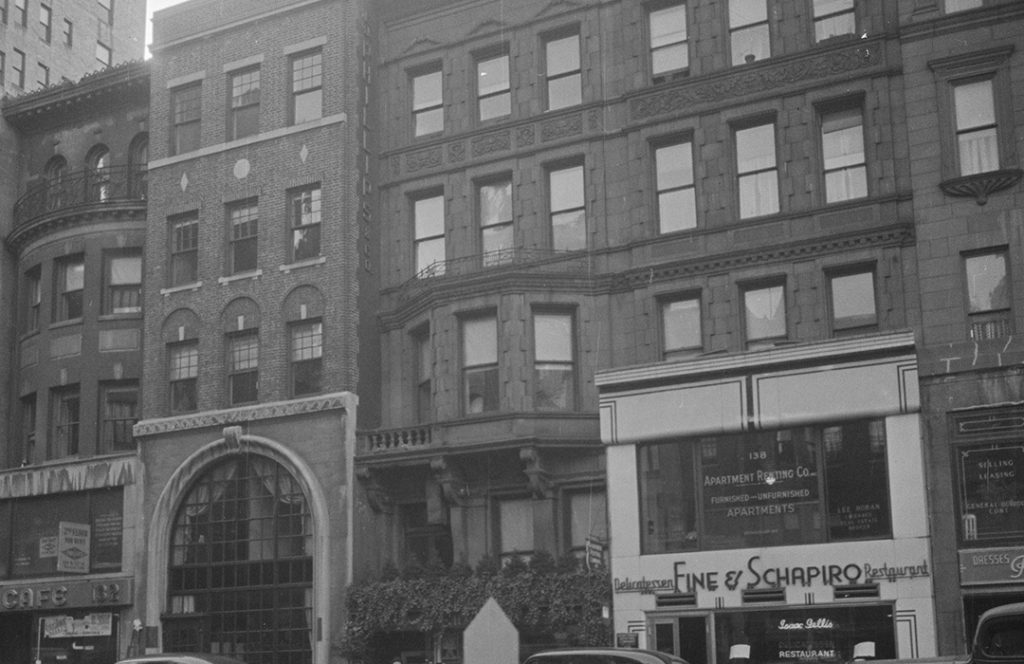
Valvoline, Opium and Pastrami
These two houses held established families with physicians and cattle ranchers but animal fat was their legacy! Those that followed after caused a ruckus for all the wrong reasons: social club memberships turned into night club brawls. To explore the legacy,
READ MORE
12-18 W. 72nd Street
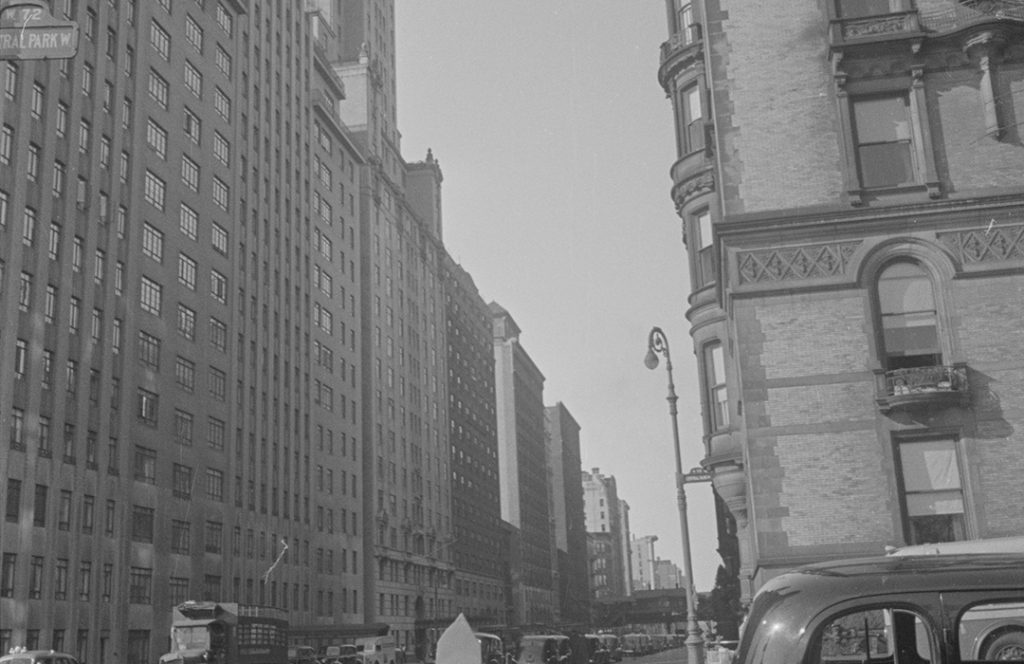
Uncovering the Cover-Ups at The Oliver Cromwell
Named for the English Gentleman and Statesman, not all residents were skilled at keeping up appearances. From pseudo-balconies to half truths, one cannot believe everything they read about this unbelievable building.
READ MORE
20-28 W. 72nd Street
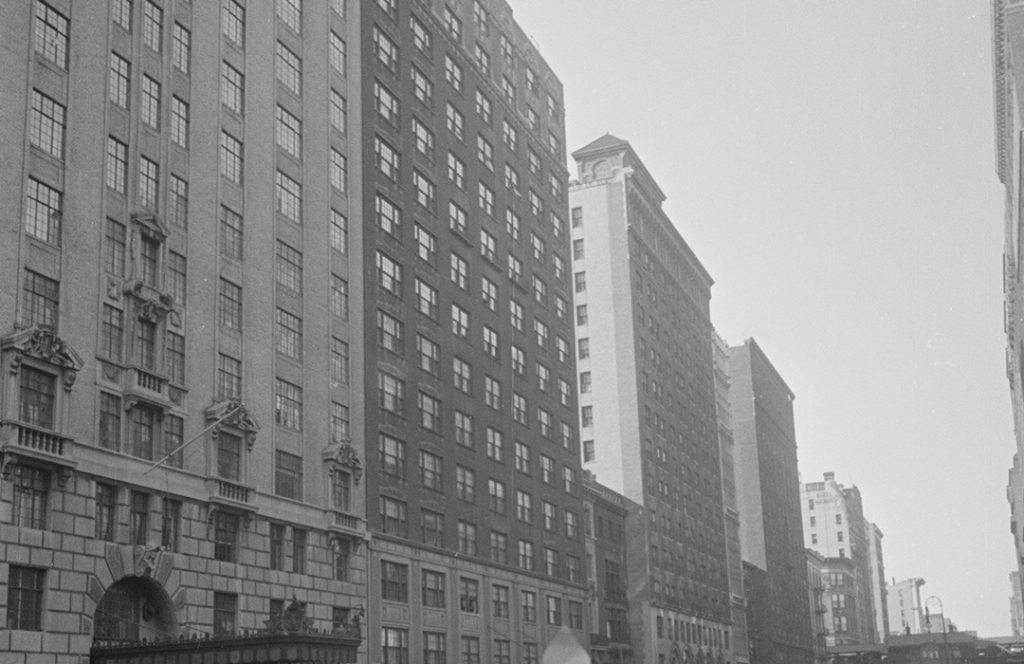
Peaches, Daddy and "The Brain"
Once the Fairfield Hotel, then the Franconia and now not a hotel at all--but the secrets within! From the former president of Haiti to the child bride whose tabloid headlines wrote themselves, read on for the unbelievable truths...
READ MORE
111 W. 72nd Street
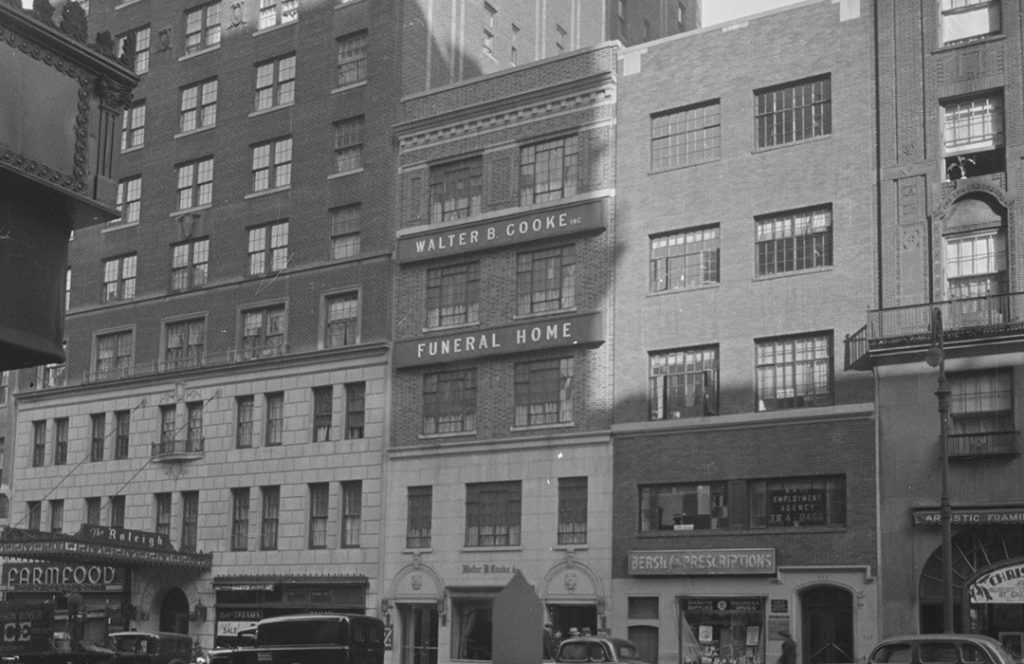
The Alexandrian Chambers
Once filled with "Dentists-Physicians-Oculists" and touted for its unique facilities, the Alexandrian Chambers went through a few facelifts but with a salon and fitness center, will still leave you looking your best!
READ MORE
153-155 W. 72nd Street
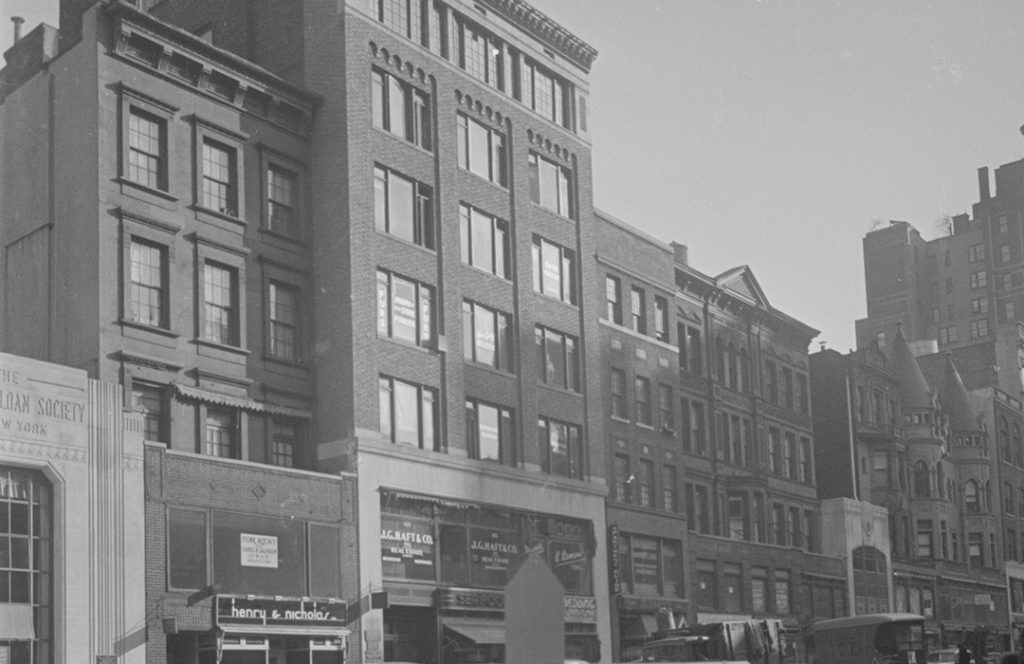
Hypnotism by Mail Order!
Once the headquarters to millionaire realtor Edward "Big Daddy" Browning, 153-155 West 72nd Street saw its share of controversies. Girls "for adoption", illegal gambling, miracle diets and a hypnotist round out the roster.
READ MORE
125 W. 72nd Street
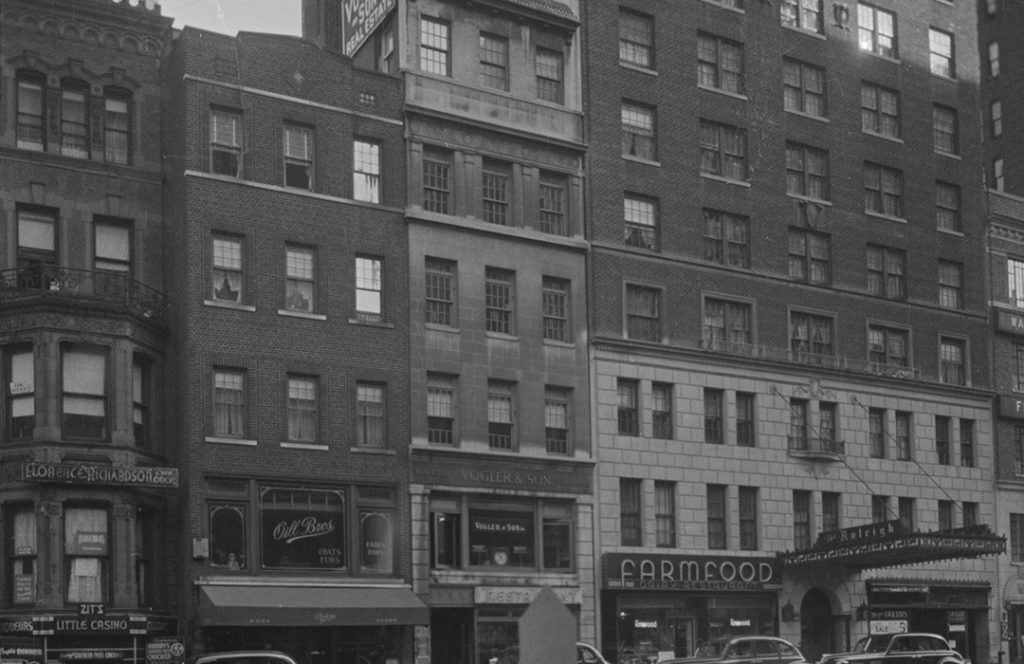
The New York Diagnostic Clinic
On October 19, 1921, the Daily News reported “Dr. Thomas Webster Edgar…who, early this month, transplanted monkey glands into a human being, is demanding that the New York Diagnostic Clinic, 125 West Seventy-second street, give him an ‘inside’ picture of Irving R. Bacon, the subject of the operation.” ...curious yet?
158 W. 72nd Street
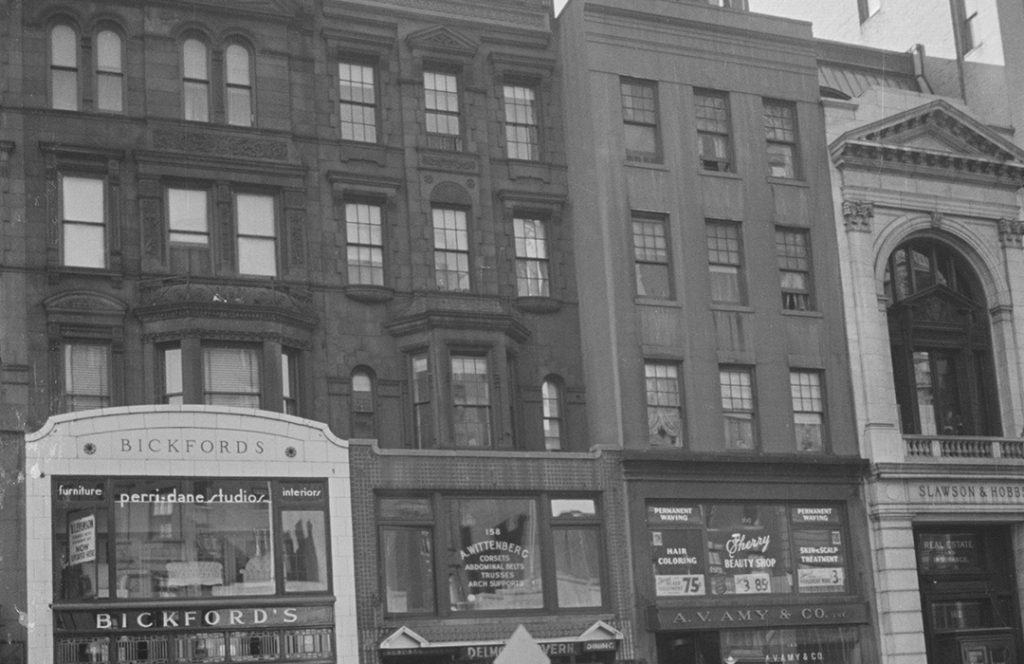
Forbidden Engagements and Explosive Bouquets
Travshanjian’s funeral was held in the West 72nd Street house under tight security. The Evening Enterprise reported “Previous to the funeral the widow of the millionaire Armenian rug importer received a letter which stated that one or all of the members of her family would be killed, if not during the funeral services, then, the note said, the threat would be executed subsequently.” More than 20 suspicious looking men were refused admittance and were “hustled away by the detectives,” said the article, noting “Even bouquets of flowers were turned away for fear that might contain bombs or explosives.” Happily, the funeral “passed off without bomb throwing or murder.”
233 W. 72nd Street
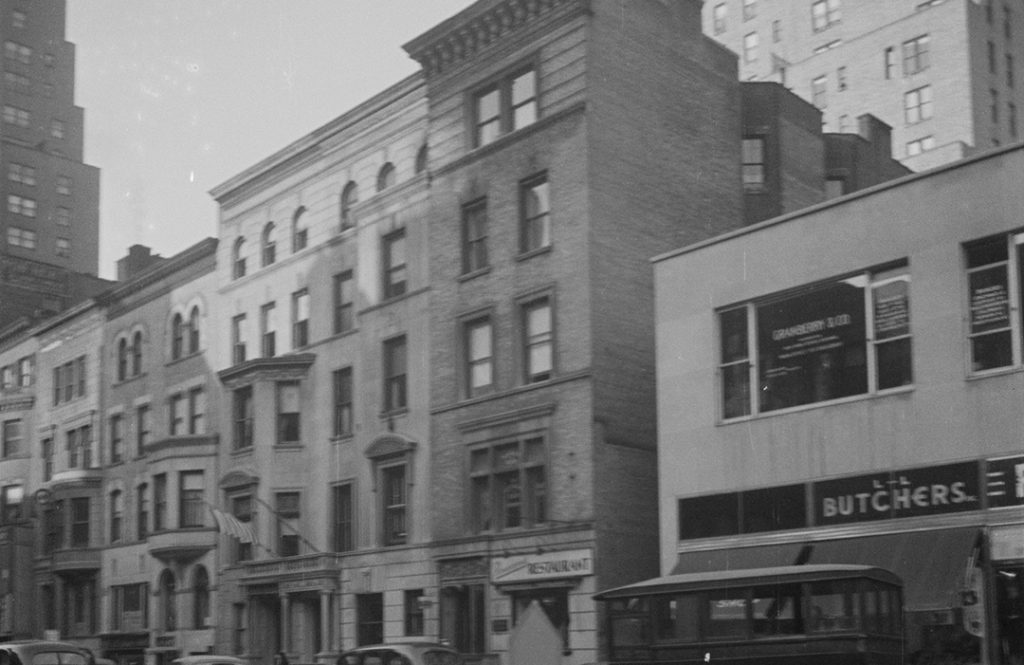
Rest for the Weary
Among the initial upstairs residents was Wilbert A. Leonard, the night clerk at the Hotel Majestic. He was carrying on an affair with Mary G. Roshek, the wife of department store executive Frank H. Roshek, in 1924. When Mary sued her husband for divorce, claiming cruelty, he countered with a parade of residents— “the landlady, her husband, two waiters and a maid,” according to The New York Times who testified on her frequent visits to Leonard’s room. One of them, Marcia Schupac, shocked the jury when she recalled the time when Leonard opened the door for Mrs. Roshek wearing only a bathrobe.
160 W. 72nd Street
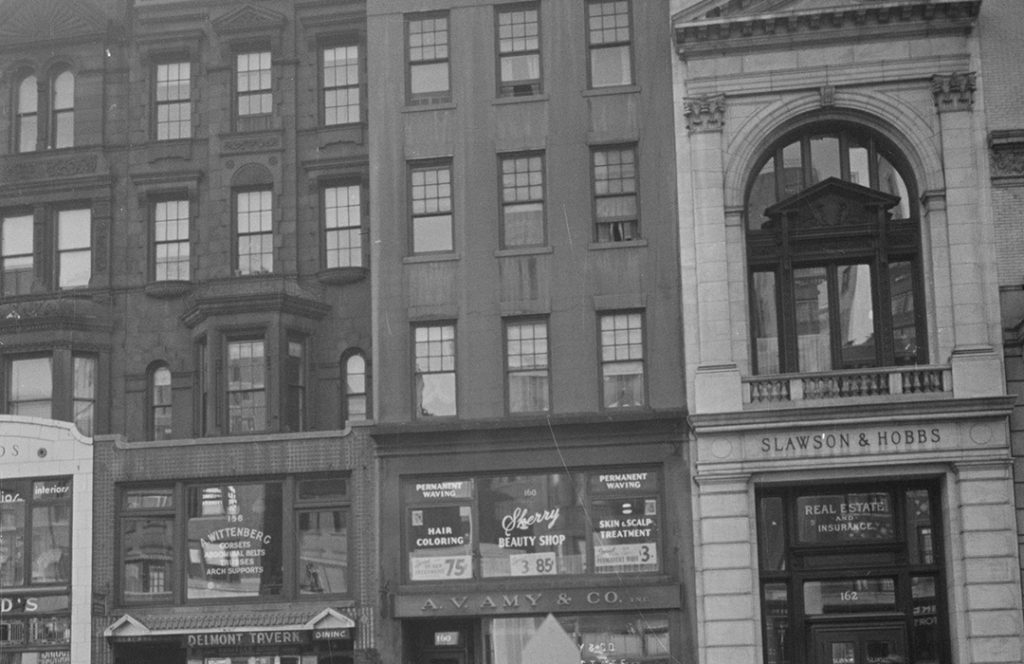
Baby Vampires of a Certain Vintage
Today, home to the nation's oldest wineshop it was once home to the most recognized family of the block--the Sutphins. After they moved on, the Victorian ornament was stripped away and the drama arrived with Juliette Day!
157 W. 72nd Street
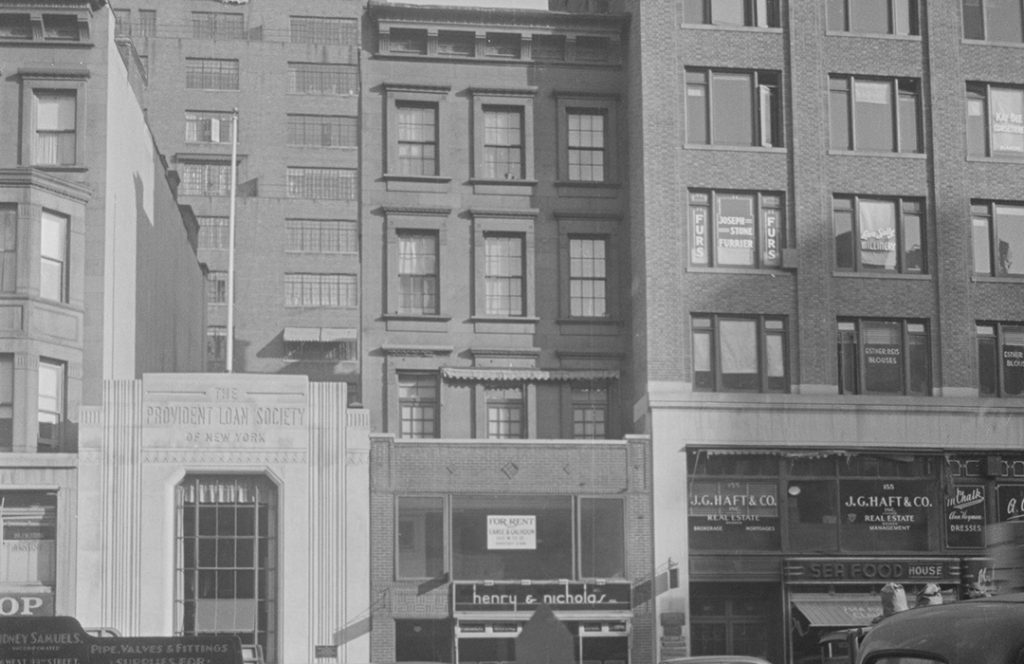
Tepidly Art Deco, Under Wraps
Mary Imogene Robertson, better known as her Ziegfeld name, "Bubbles" was among the prettiest but her bubble was burst by the roughhousing of of one Frank Tinney who wouldn't make it far if he tried these maneuvers today.
263 West End Avenue
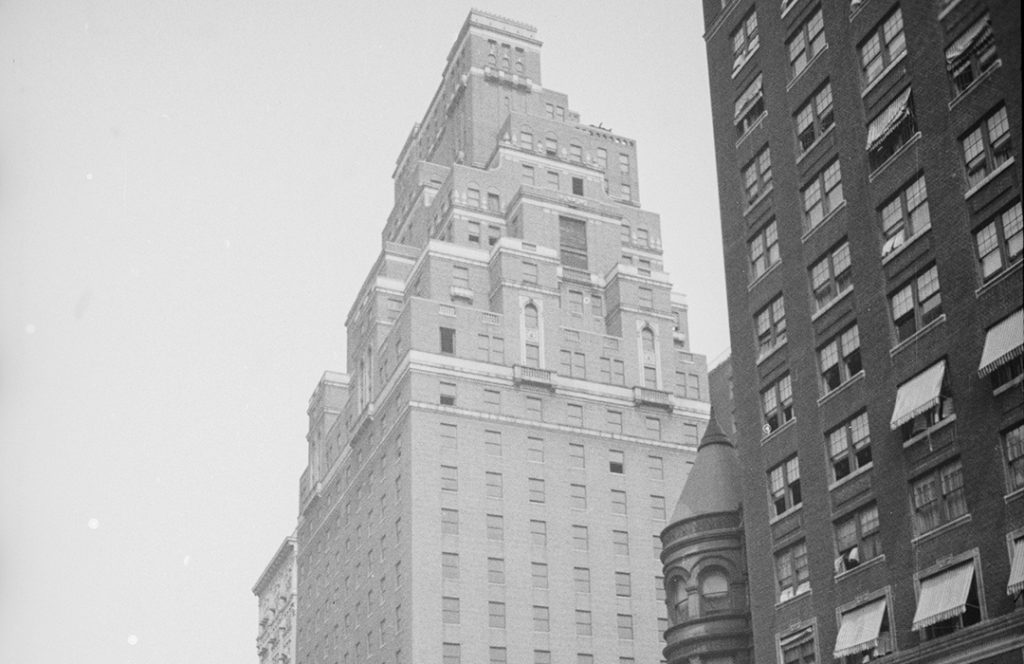
The Non-Hudson Towers
Many buildings change over time--but most often once they were built. Many fits and starts had this building nearly turned into artillery, but today rises high on West 72nd Street as the Riverside Towers.
224 W. 72nd Street
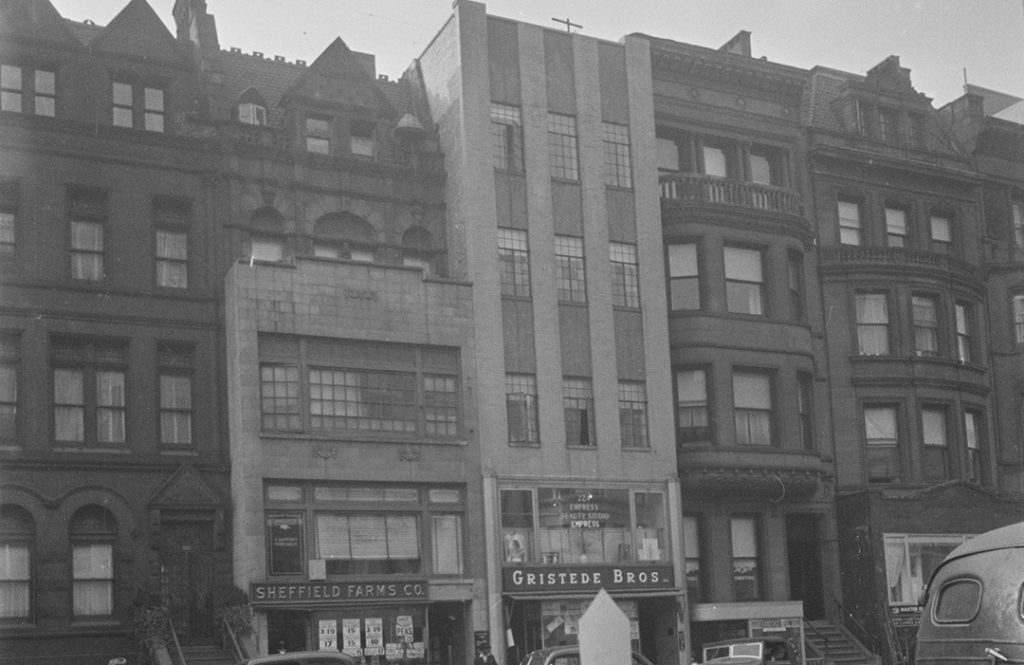
Queen Anne Moderne
This purpose-built house served its builders, the Ormistons as well as the Clarkes for many years but as the street changed so did the building with new architects, alterations and reconfigurations. What is the story behind these staid brick lines?
145-149 W. 72nd Street
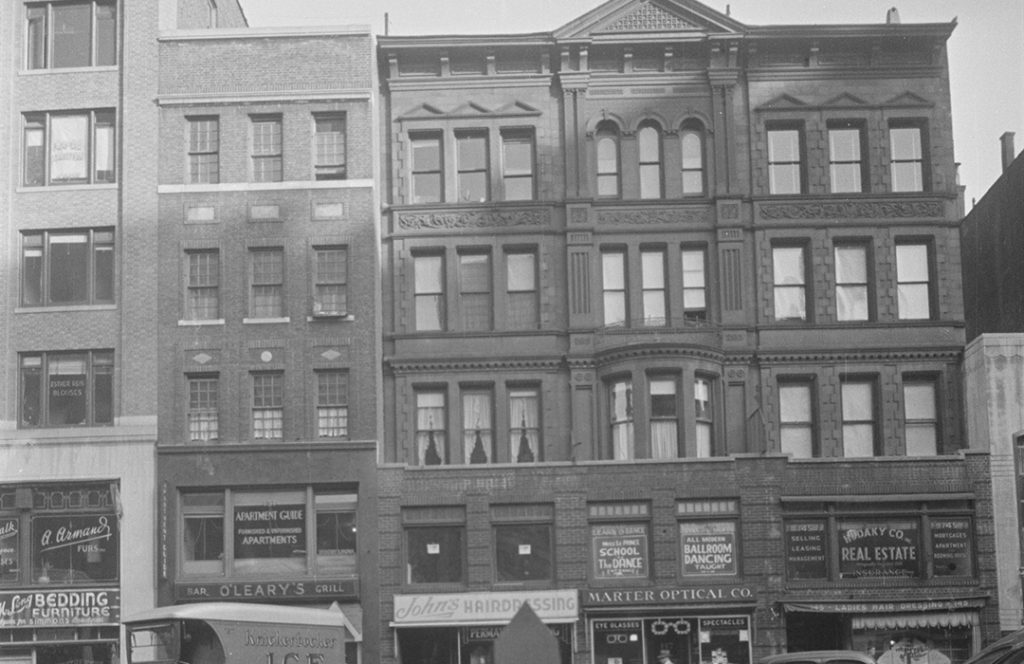
Pre-Packaged Success for NY Giants Baseball
Hurd: When you care enough to send the very first pre-packaged boxed stationery. Perhaps fill it with a note about the characters in this tryptic of buildings--the Paddock family of artists and could fill several sheafs with their father's CV alone...
238 W. 72nd Street
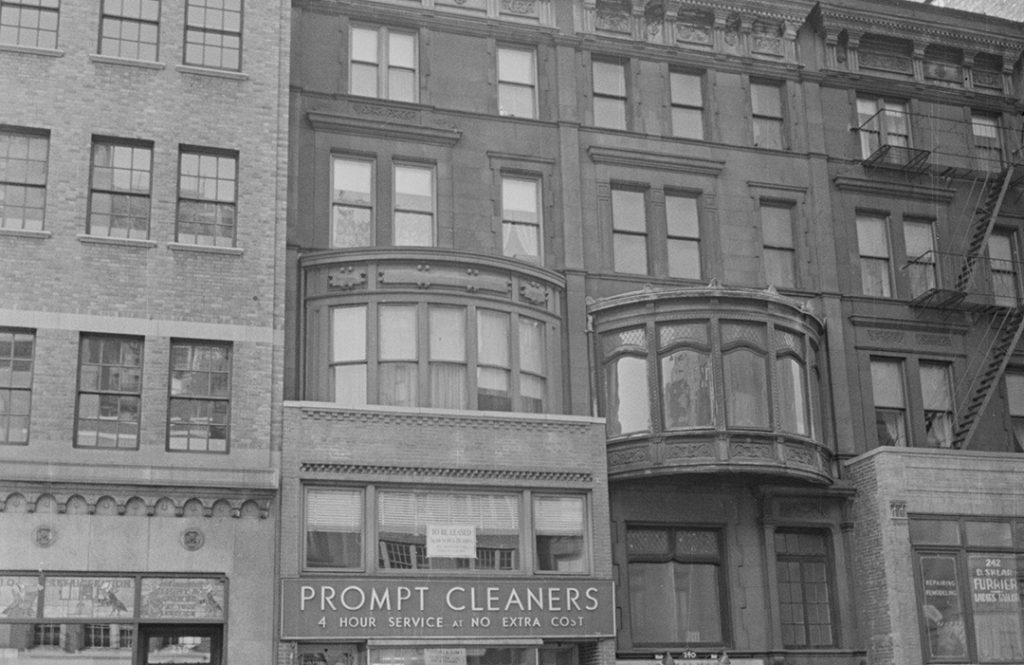
Parlor Takes a Bow
Like many fine residences along West 72nd Street, 238 West 72nd Street saw several architects and lots of changes. Leisure summers gave way to fire, sorrow and more change.
131 W. 72nd Street
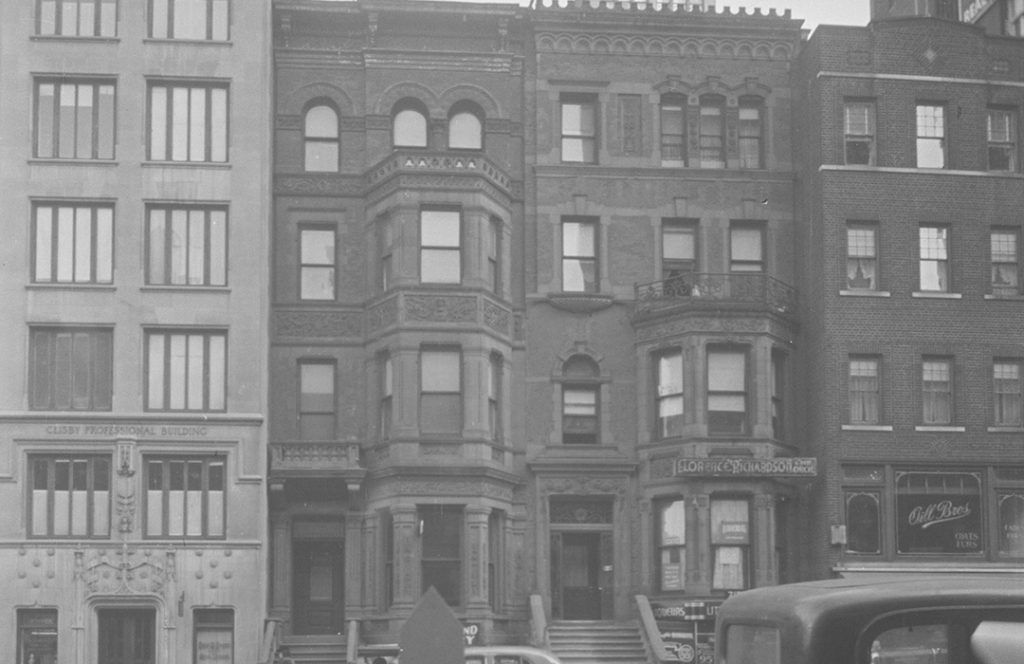
Home of the "Digestible Brainy Diet"
131 West 72nd Street has had a few lives: once serving as home to a Shipping Magnate, then as an income property for the Home for Incurables. Along the way, various renovations stripped this building, shrunk it, expanded it and helped grow it up once more. Sounds like a yo-yo diet for sure.
32 W. 72nd Street
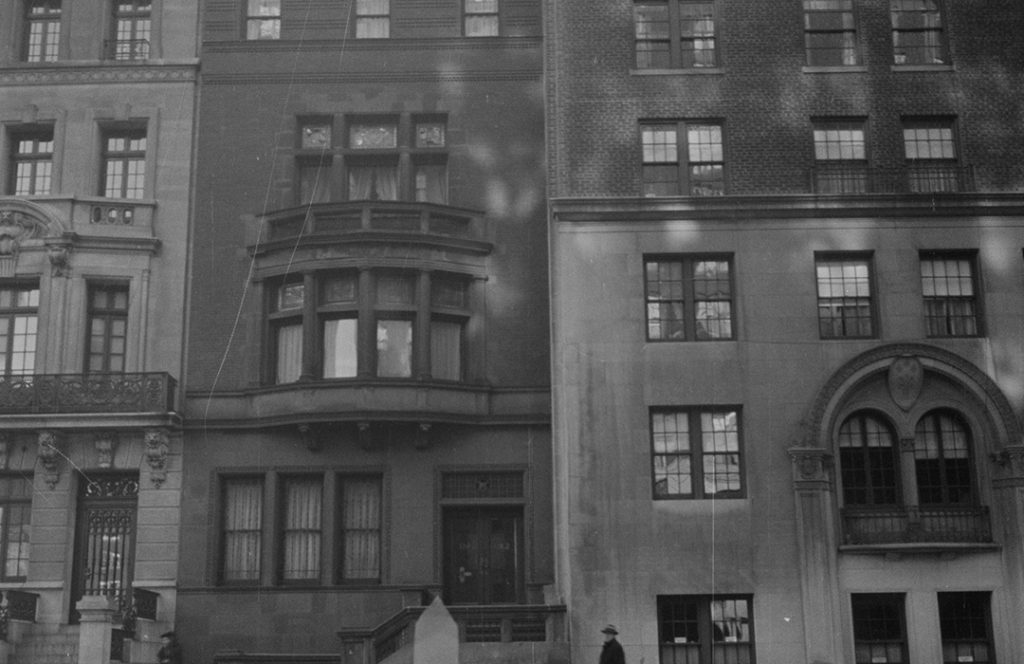
Strategic for Guided Missiles
32 West 72nd Street is not a lot to look at today, but historically, it is a lot to fight over! Poor Ignatz Boskowitz. All that effort in defending a mere 6" of stoop when he likely should have been working on family relations before it was all stripped away...
152-154 W. 72nd Street
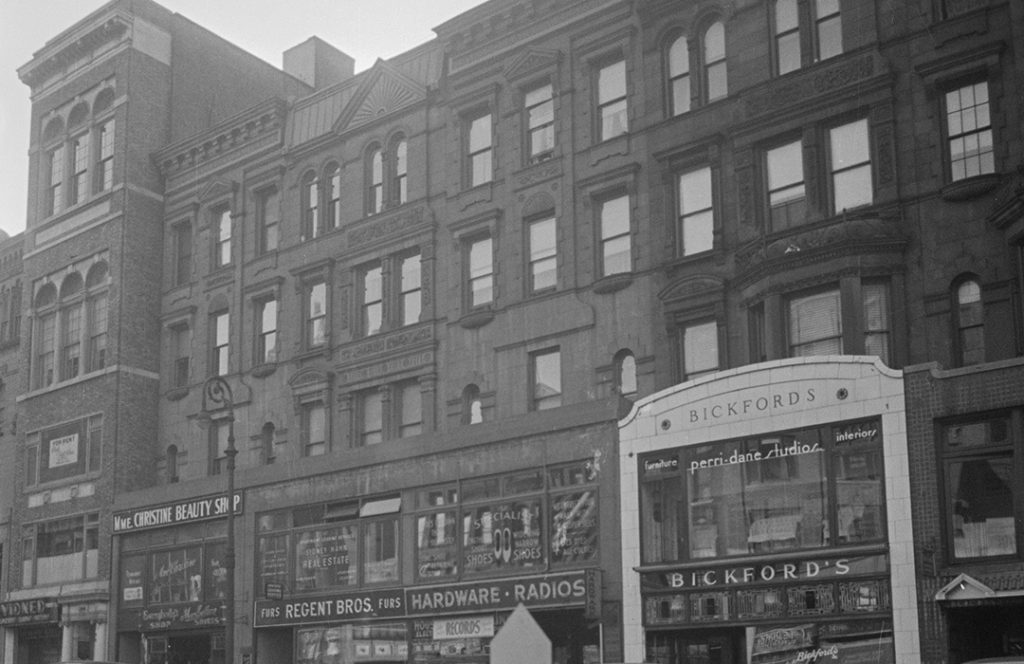
Buildings Joined and a "Clip Joint"
152-154 West 72nd Street were built as part of a row--always meant to be together, for a while they were even joined, before an amicable split. Those who visited might even stay a while...a while longer than intended that is.
161 W. 72nd Street
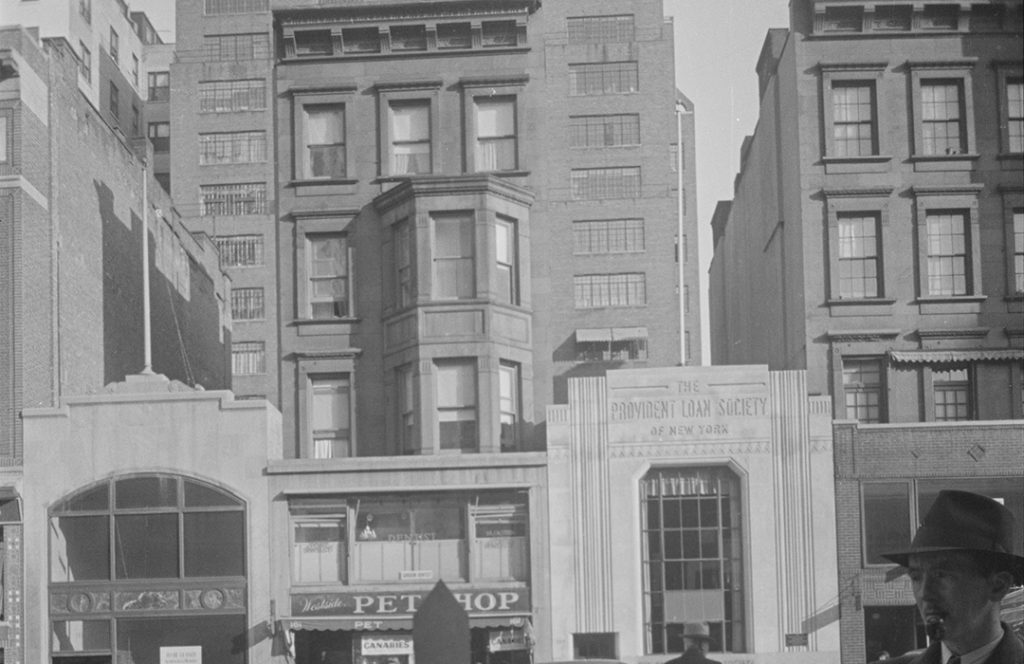
Blossom and Bromide
161 West 72nd Street housed a family with their pets: a black and white Japanese spaniel named Blossom who took center stage against two Pomeranians and an Angora cat but also the patriarch, Parker R. Whitcomb, a quack! When an elixir is too good to be true, it just might be. When the government says so twice, is must be.
146 W. 72nd Street
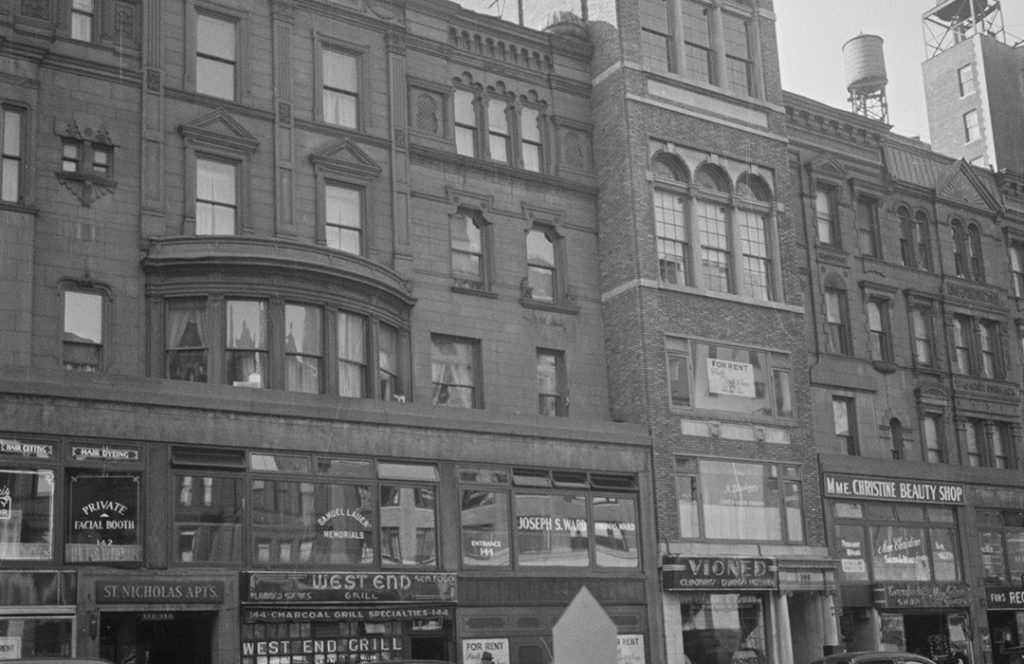
Moored and Moorish
146 West 72nd Street puts on an exotic face, but the residents were standard West 72nd Street fare--CEO's and passengers on the RMS Titanic...
128 W. 72nd Street
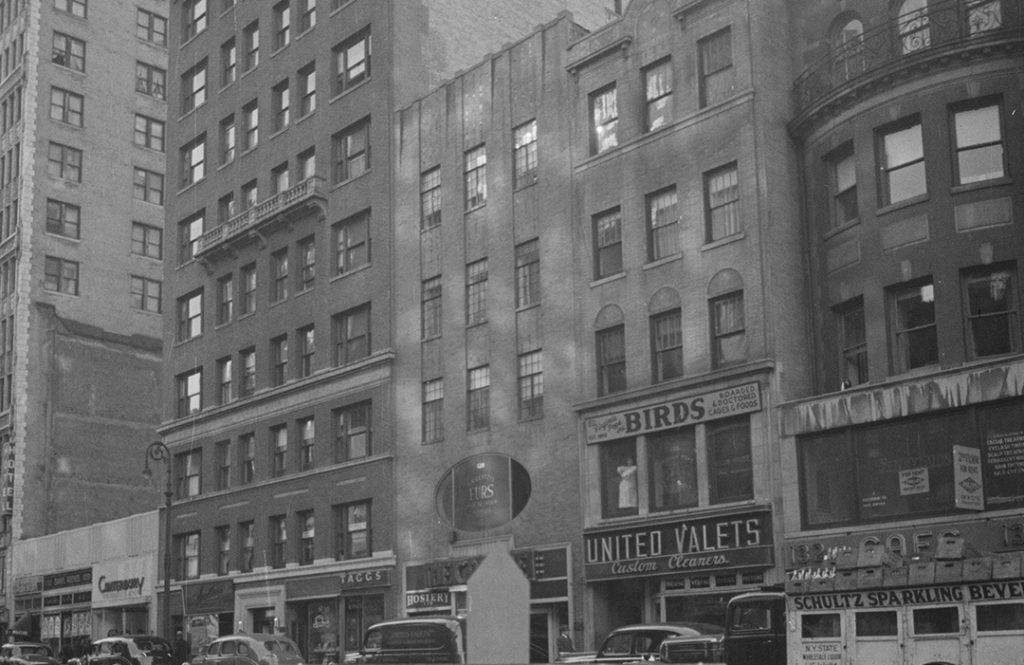
Willful Stipulations and Soul Freedom
Daniel O'Day had 12 Children...need we say more?
117 W. 72nd Street

The Walter B. Cooke Funeral Home
Catering to the demographics of the Upper West Side, these funerals for entertainers were often entertaining. No paparazzi, please.
115 Central Park West - The Majestic
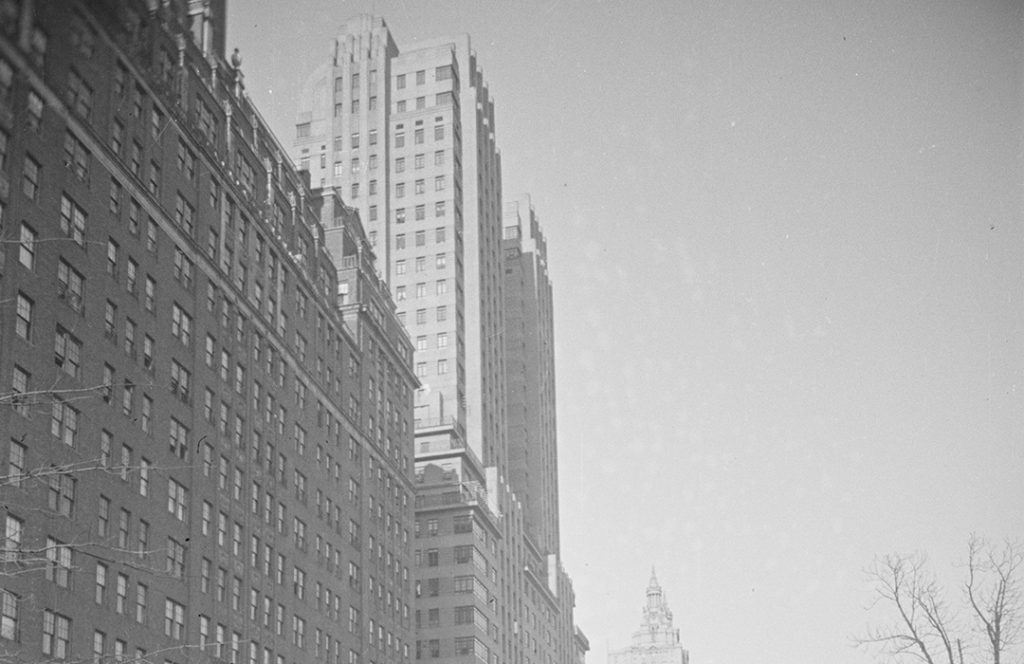
The 1931 Majestic Apartments
The incomparable Majestic is a highlight of Irwin S. Chanin's career but couldn't have come at a worse time. Regardless, they made the BEST of it.
144 W. 72nd Street
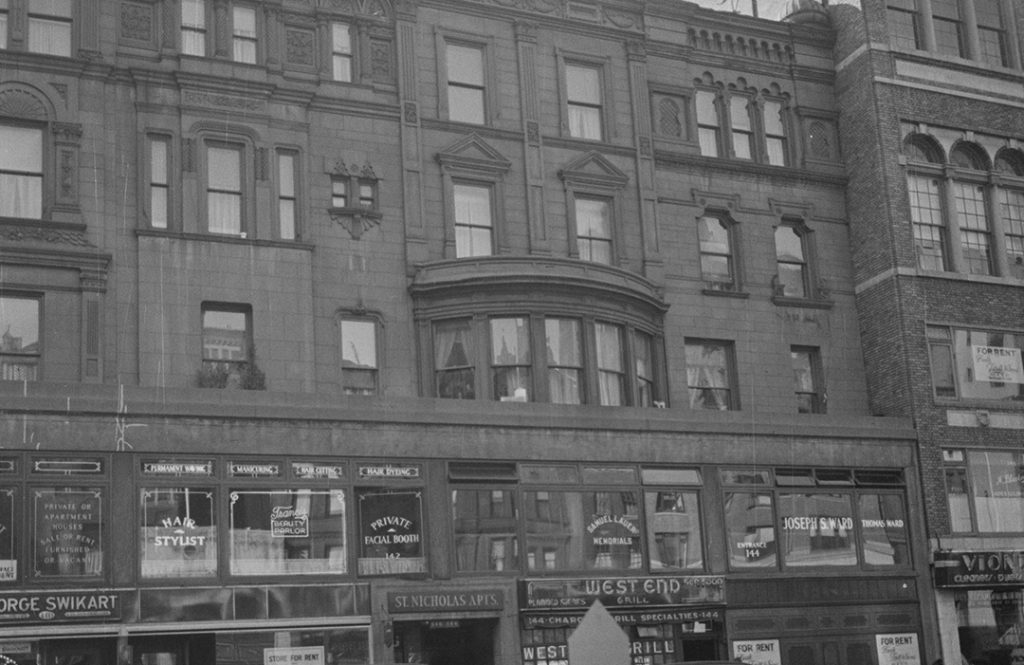
Unamusing Tax Evasion
A once "elegant" construction deemed "the very best" has a run in with the tax man and a Blonde Vampire...
241 W. 72nd Street
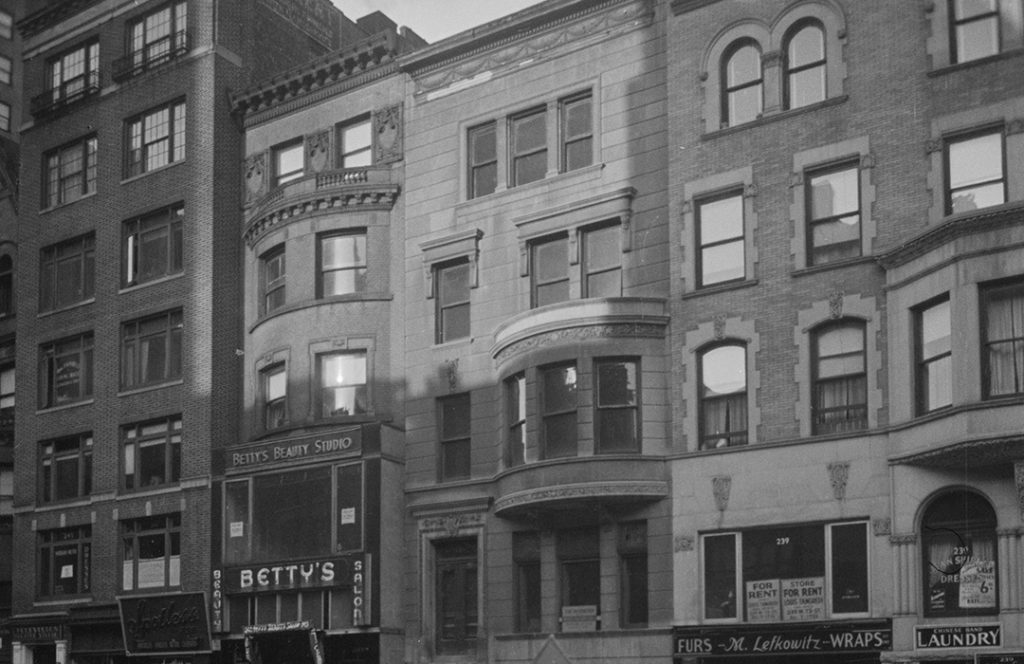
The Wood, Dolson Company Building
A fine home gives way to a company headquarters, but it's third act leaves and indelible mark on American culture. Grab your blue suede shoes and read on.
220 W. 72nd Street
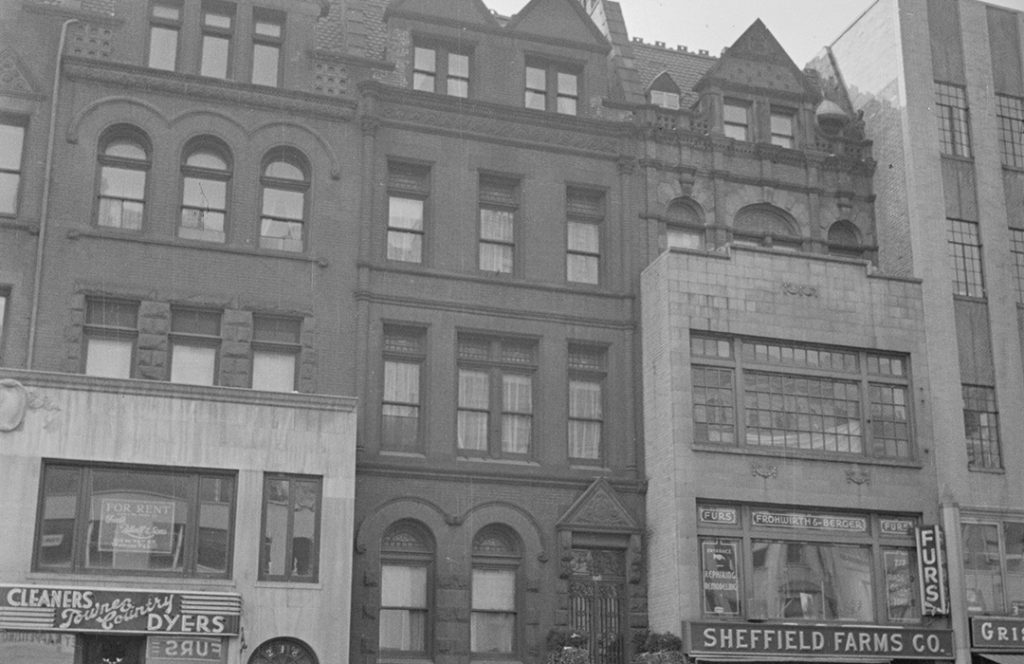
No Weddings and Three Funerals
While Minnie was occupied by the New York City Indian Association, the world--or at least the block--was changing around her. And so, when Minnie died in 1940 her house was an anachronism—a sort of time capsule.
103 W. 72nd Street
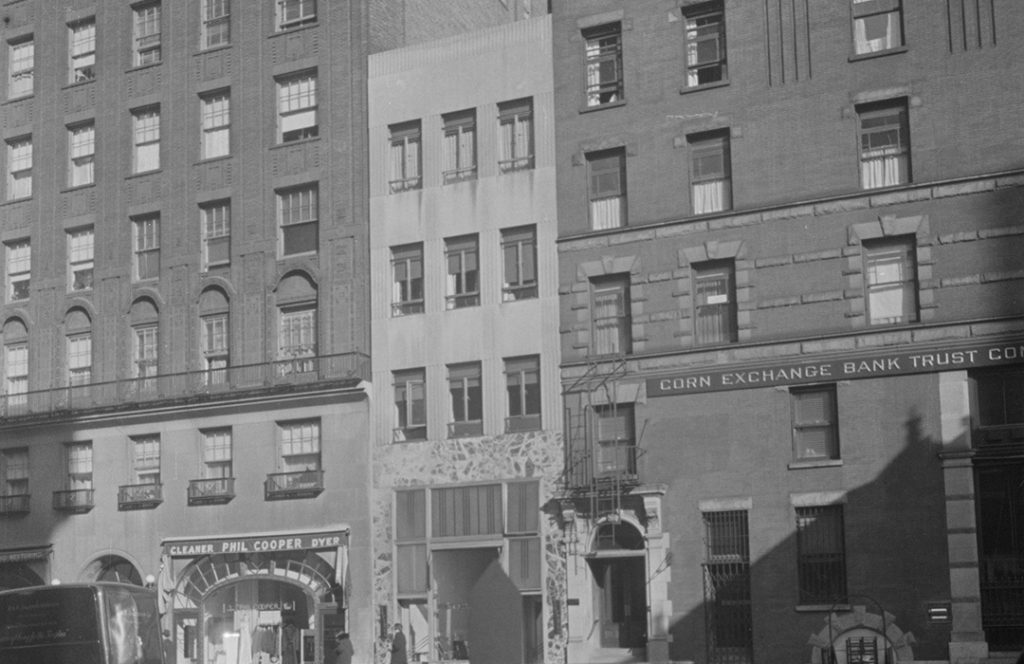
From Silver to 'Black and Tan'
This mansion got a jazzy make over and a moonlighting waitress got a half million towards her fight against imperialism.
260 W. 72nd Street
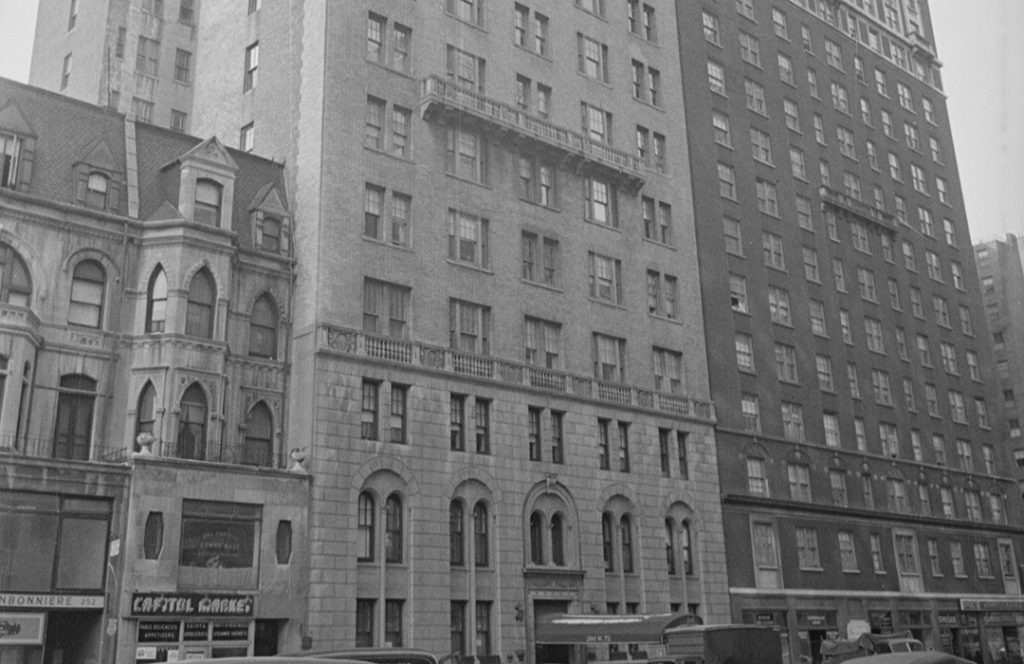
Three's Company: The Wellwyn Apartments
Replacing fine rowhouses, the Wellwyn interrupted the scale of West 72nd Streets genteel residential block. With Ernest and Jean Everly McChesney it also changed the 'tenor'...
49 W. 72nd Street
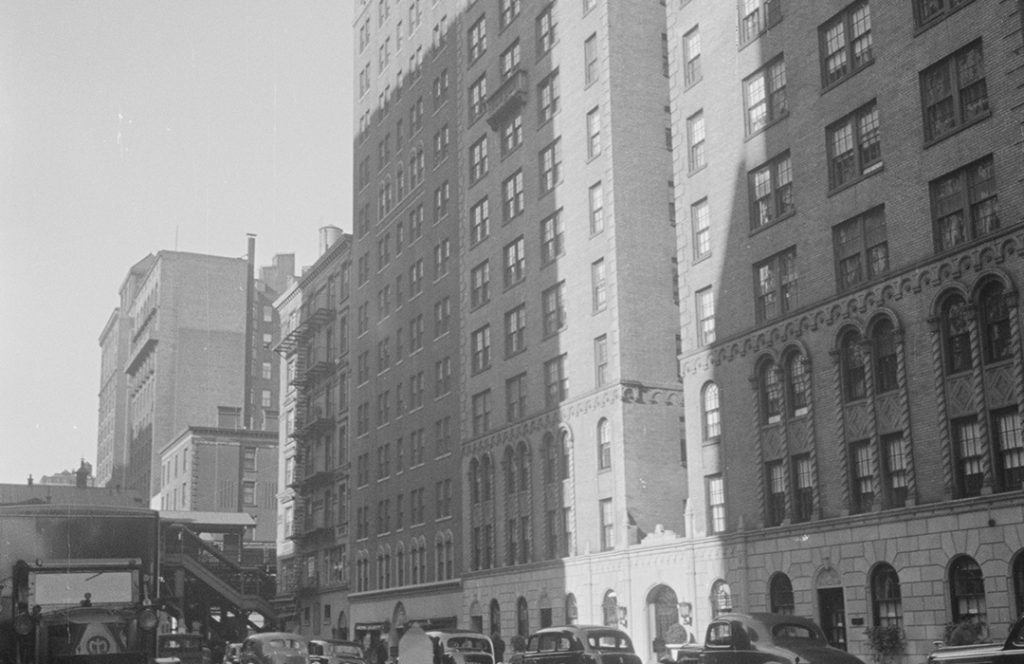
The Parkway: 49 West 72nd Street
Rivaling The Dakota was safer for the building than rivaling one of its most infamous residents--Charles "Lucky" Luciano...
40 W. 72nd Street
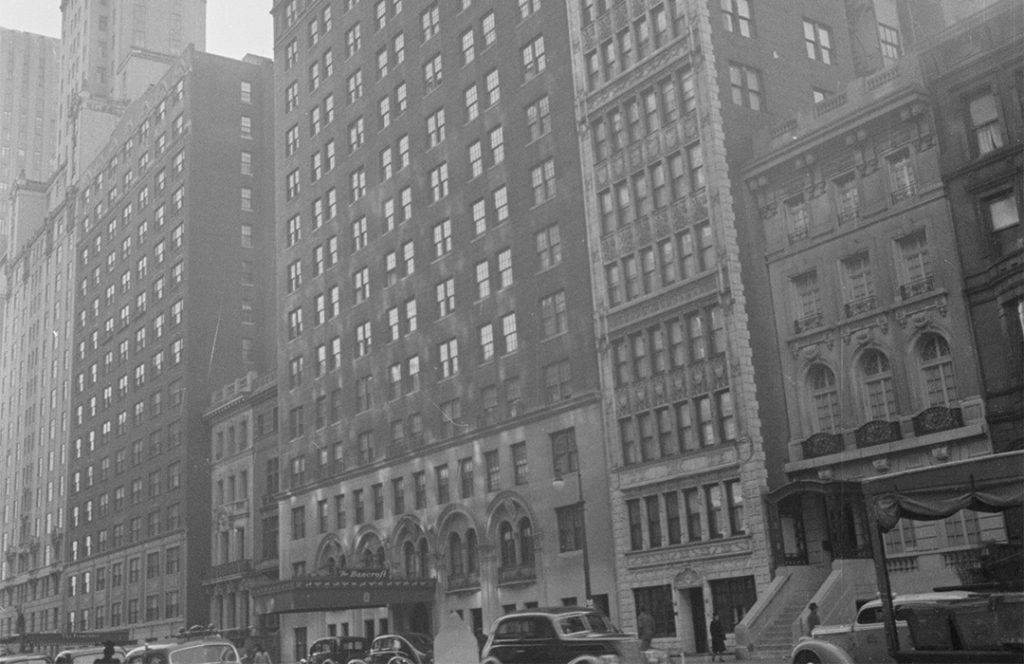
Priceless Sleep at the Hotel Bancroft
Despite the opera singers, some of the residents seemed to be caught in their own real life soap opera...
42 W. 72nd Street
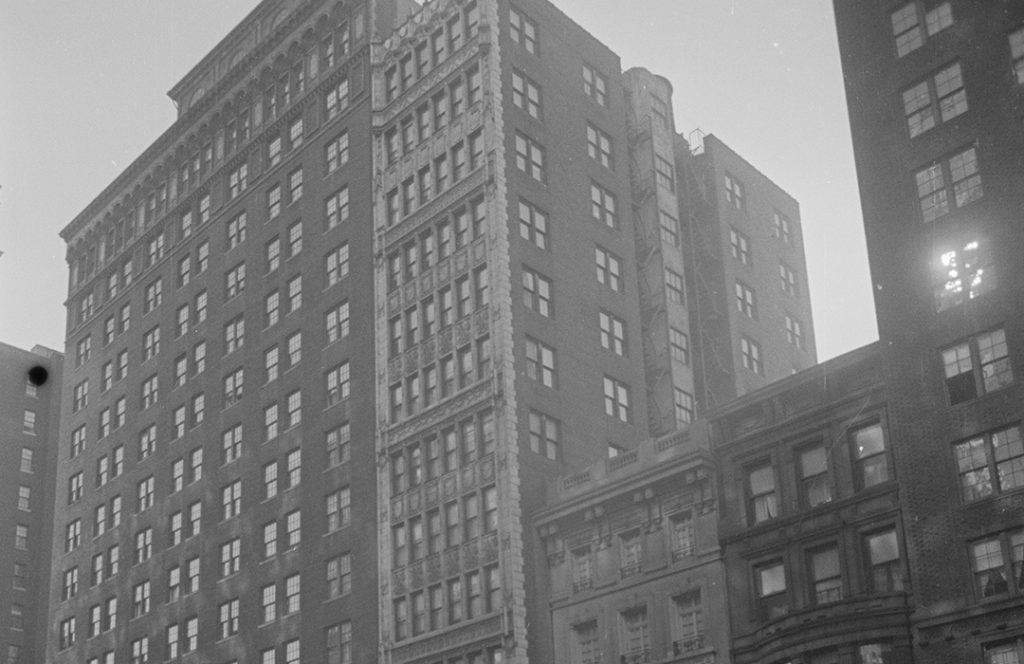
The Royalton, a Royal Twin
You'll be seeing double--or triple. The Royalton matches its sibling, the Hotel Earlton in looks but not in social capital!
44-46 W. 72nd Street
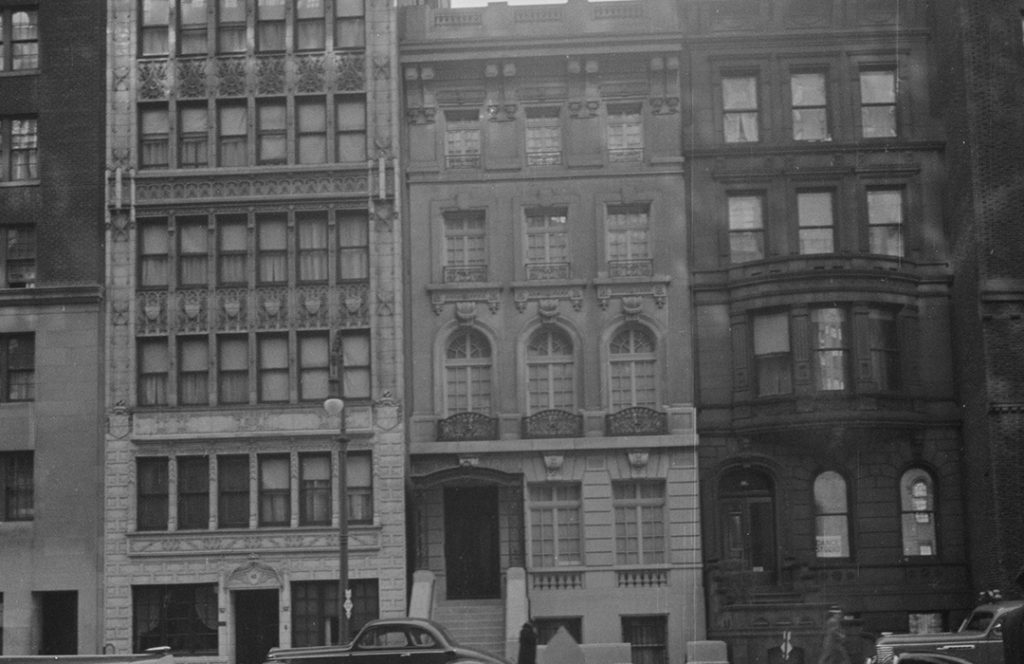
From Jacoby to Jacobo...
Not every apartment building on the UWS started out as two mansions, but not every apartment building is linked to an international drug dealer either...
148 W. 72nd Street
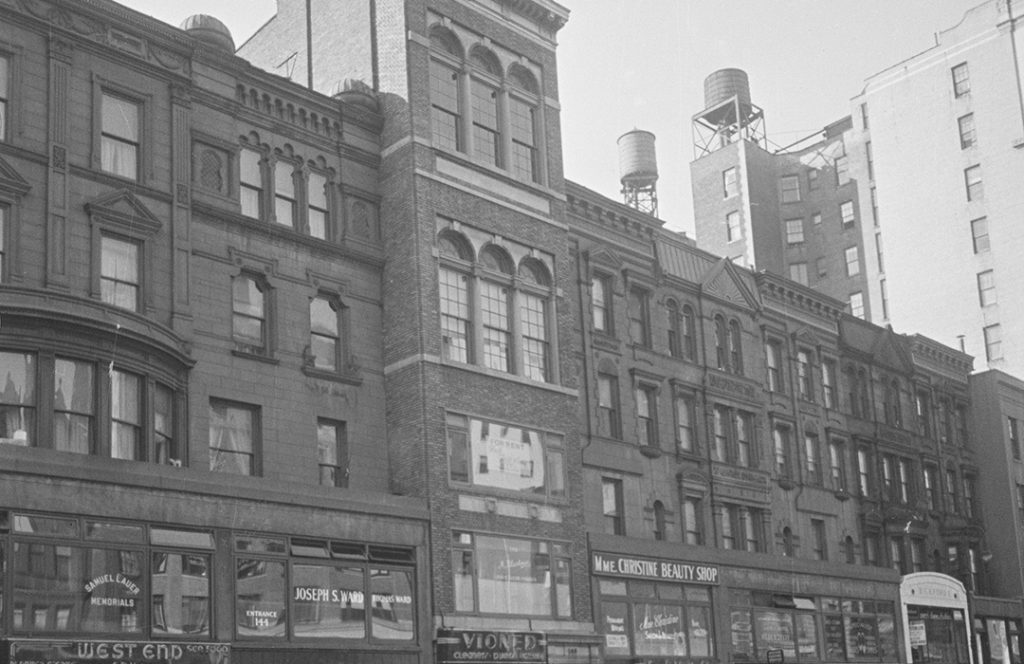
Buff Brick for Opera Buffs
Musicians and dancers, not visual artists filled this studio building and made a name for this early outlier which interrupted a Thom and Wilson row of five original houses.
150 W. 72nd Street
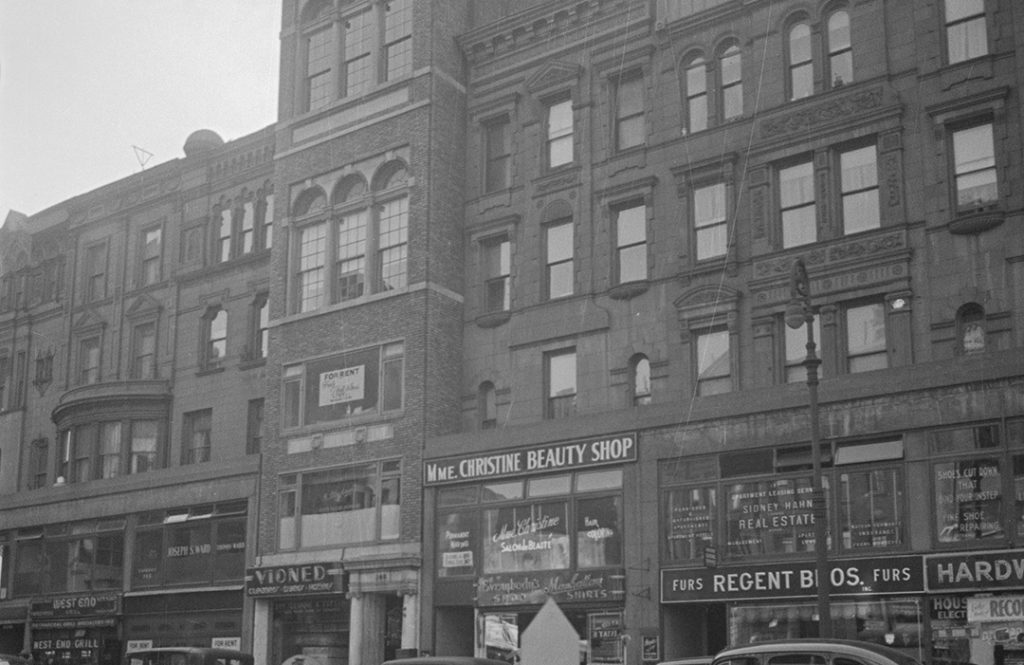
'Bachelorette' Apartments
By the turn of the century few were speaking German but at least one woman was crying foul--and actress Lillian Walker put a hard stop to that!
267-269 W. 72nd Street
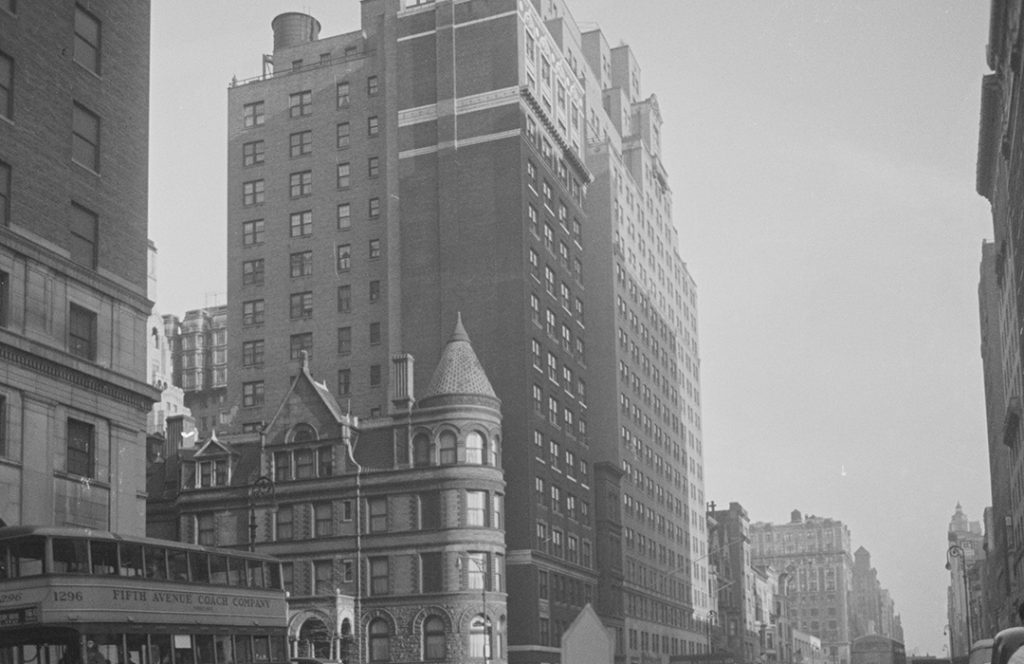
Florida's Real Estate Bargains
A 26-year old car manufacturer had a bad accident--bad in that he ran over a Patrolman. That's bad, but swindling stockbroker Samuel Taishoff was worse...preying on gullible women...
216 W. 72nd Street
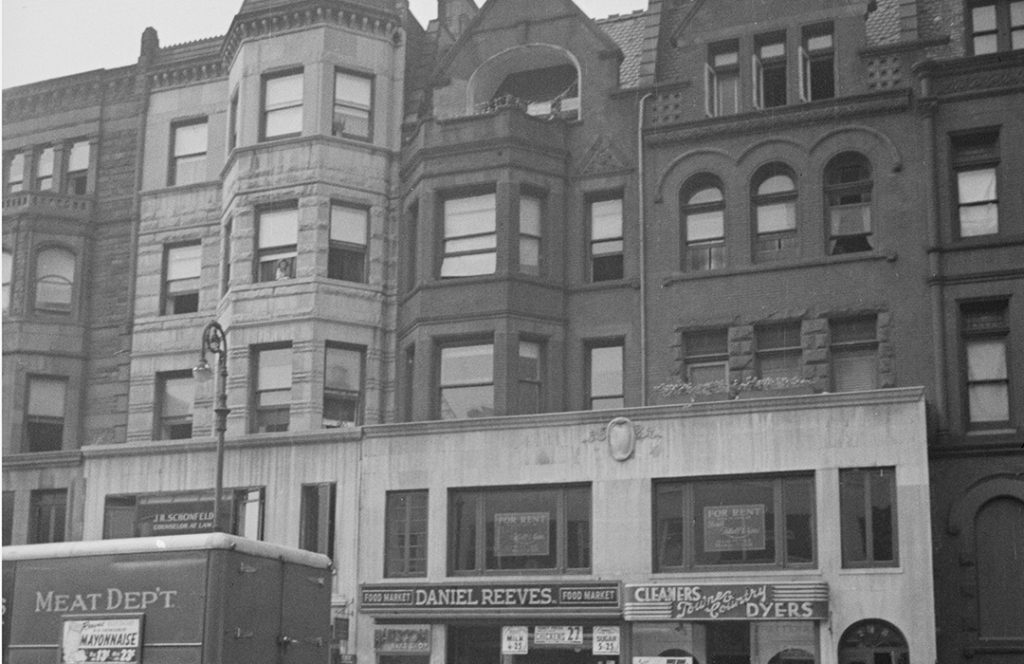
A Winning Gambler's Bad Luck
John E. McDonald was not your typical first generation American. After all, if he were, he likely wouldn't have made it to this building profile...
218 W. 72nd Street
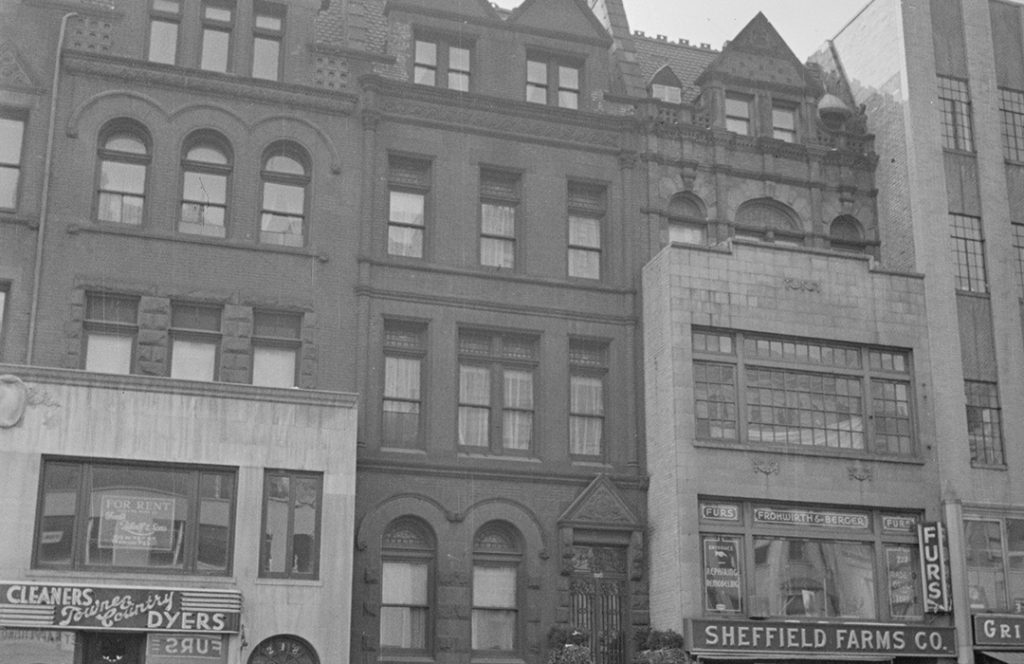
The Association for the Relief of Respectable Aged Indigent Females
Tit for tat, stolen negligees for a top hat. This couple was destined to be together!
175 W. 72nd Street
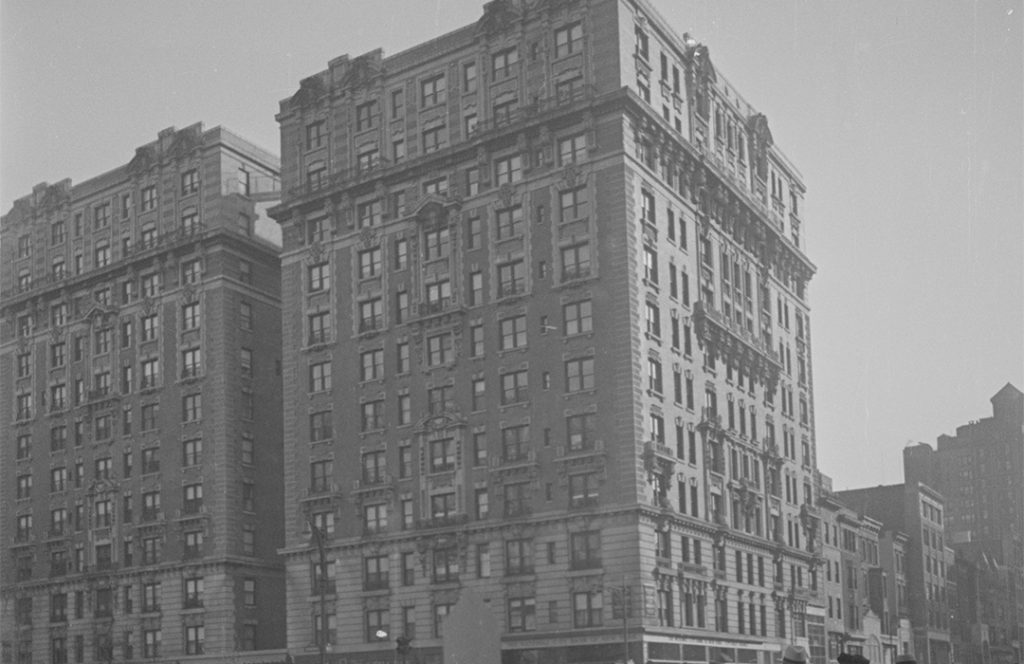
The Van Dyke
An apartment house that hosted just three apartments per floor...and illustrious residents such as the composer for Mussolini’s Letter to Hitler.
27 W. 72nd Street
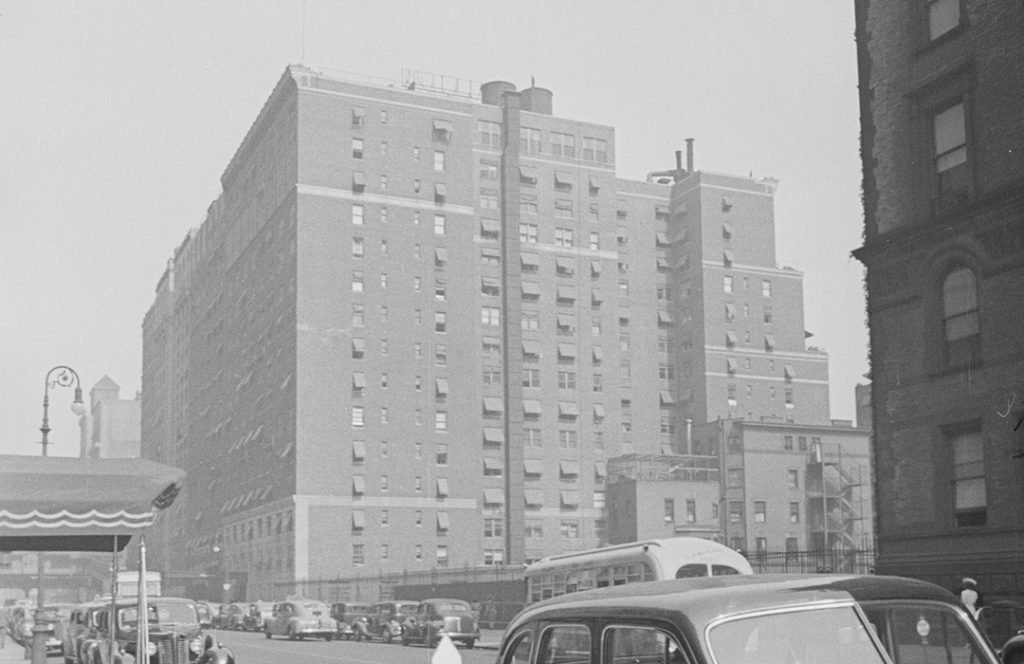
The Olcott
Home to Sol Anderson, the Captain of the Old Guard, the Olcott's residents would check in and "never repack their suitcases"...
41 W. 72nd Street

Blind Love at The Hermitage
Love didn't come easy to some of the more illustrious residents of 41 West 72nd Street--turning up solo after multiple marriages. But they often fared better than their exes...
239 W. 72nd Street
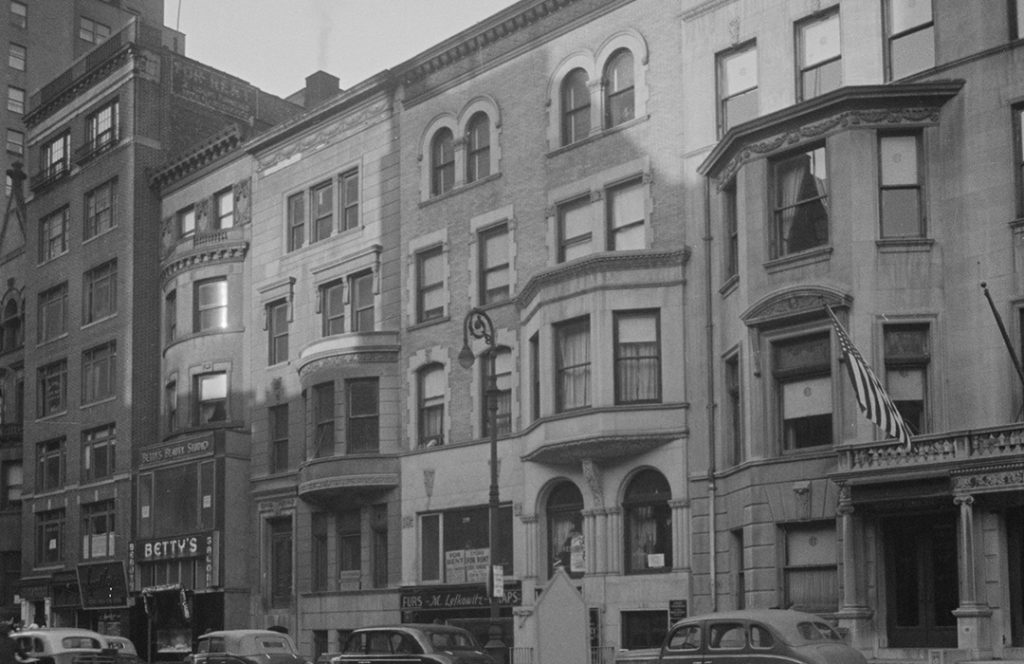
Fortune was His Middle Name
At 33-feet wide this building was admittedly 'extra' as were its residents--from titans of industry to cheating spouses...
121 W. 72nd Street
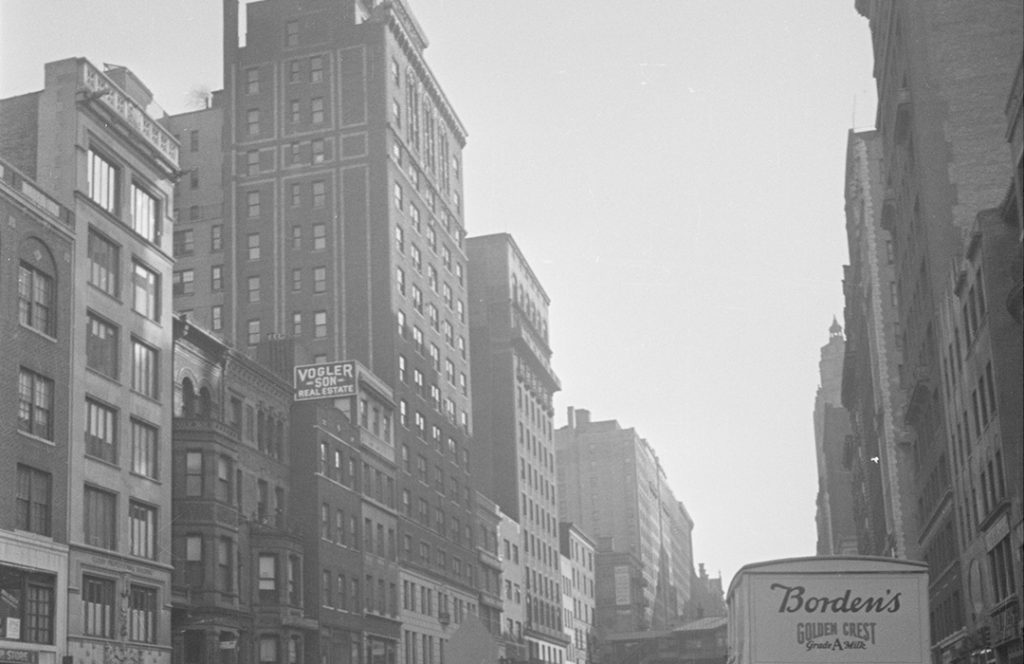
The Hotel Raleigh
A one-time apartment hotel, this Renaissance-Revival style building housed everything from a Ziegfeld "perfect American beauty on a perfect stem" to a turncoat who sold to troops in Occupied Germany.
127 W. 72nd Street
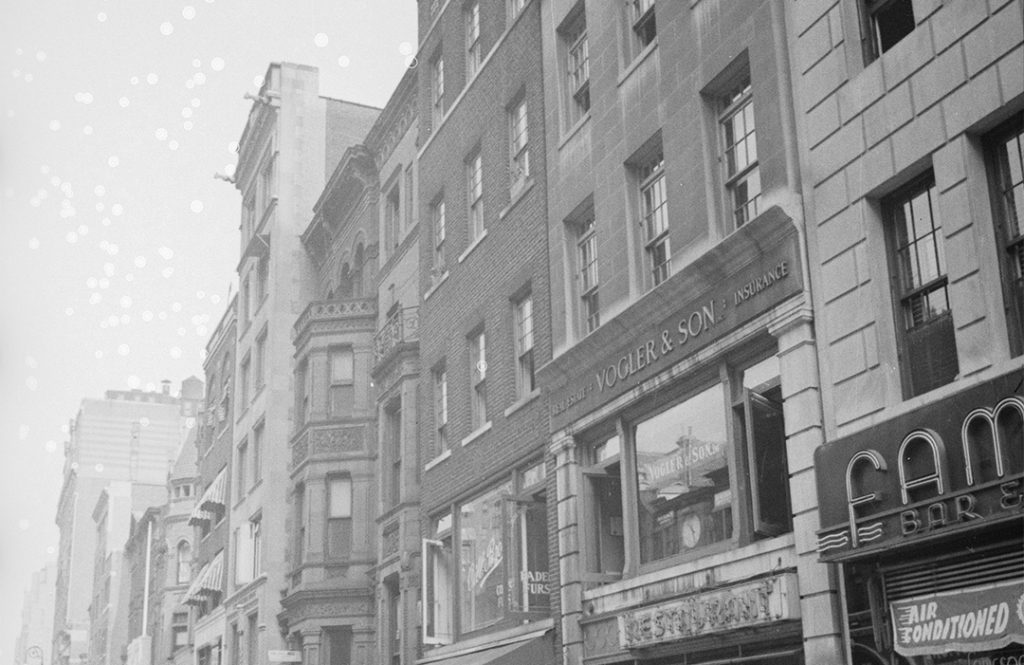
The 16-MPH Lead Foot
Built as a rowhouse, this clubhouse-turned mansion-turned apartments-turned apartments again has seen its share of talented actors and (cunning) bad actors alike!
129 W. 72nd Street
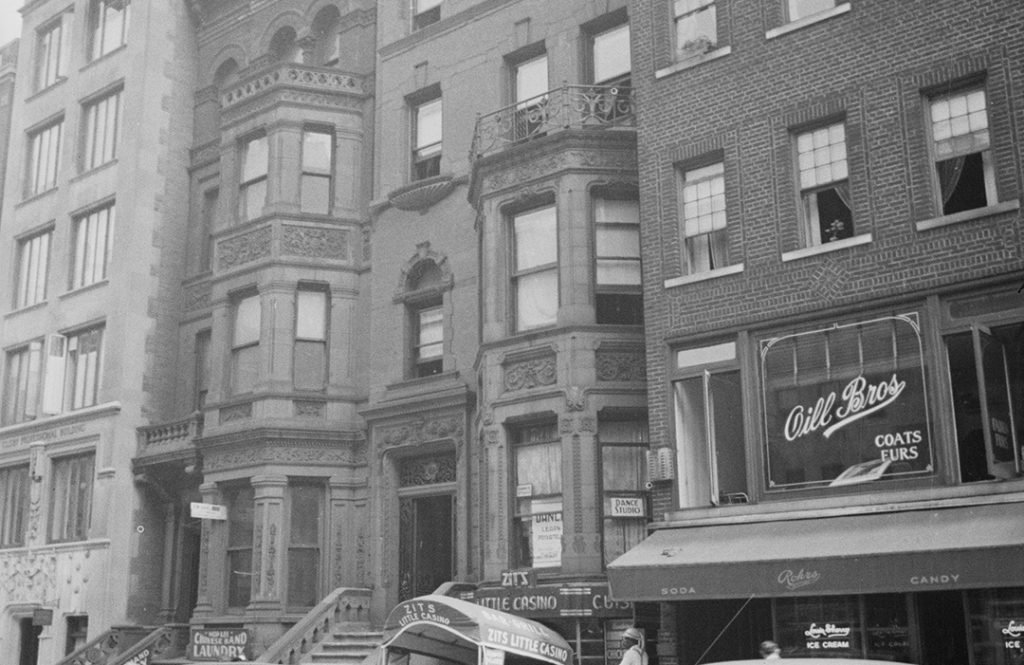
The Banjo-Playing Apparition
In a household with eight brothers and sisters, there were bound to be disagreements. But the real troubles began in 1920 when the Merrall family finally left and the boarders, mediums and mobsters moved in.
135 W. 72nd Street
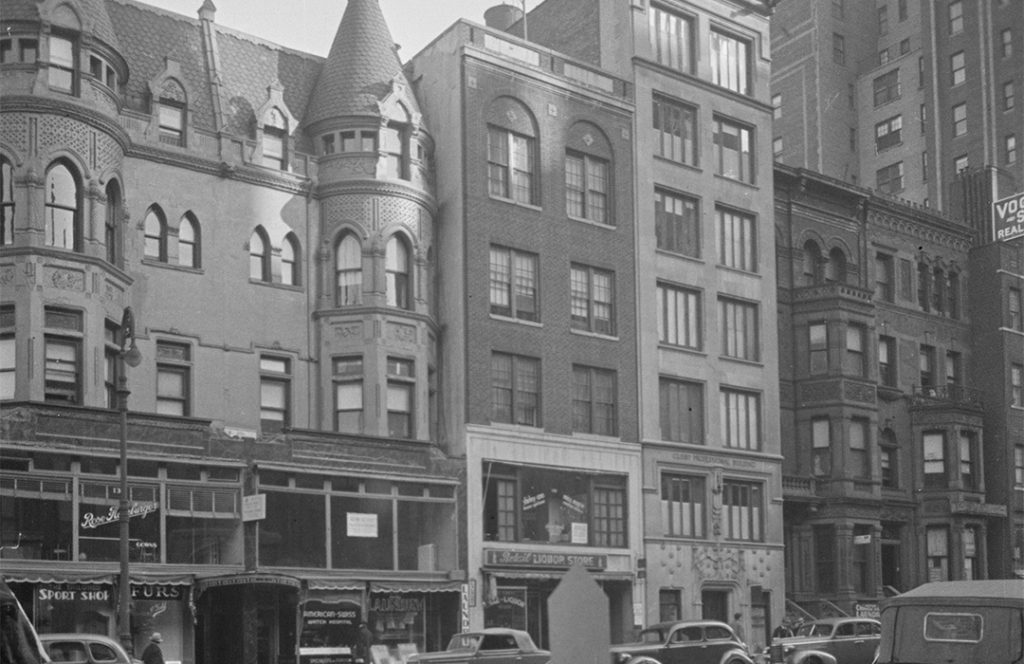
Regine Took Herself "to the Cleaners"
Minerva Automobiles made 135 West 72nd Street their show room but the show went on after they left. True to the Roman goddess of the same name who was the goddess of professions and of war, 135 maintained her spirit.
167 W. 72nd Street
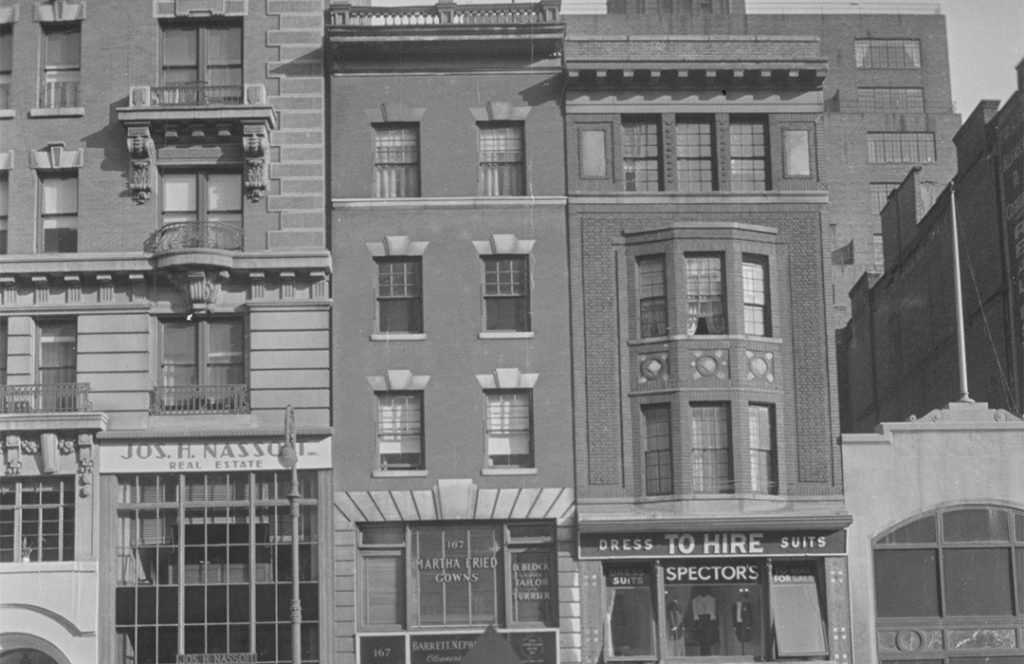
Fighting The Firefighter
There are those who seek independence like Fannie Brice. But for each Frannie there are also those that seek independence, and don't want help--they are usually the ones who need help most but don't always realize it.
300 W. 72nd Street
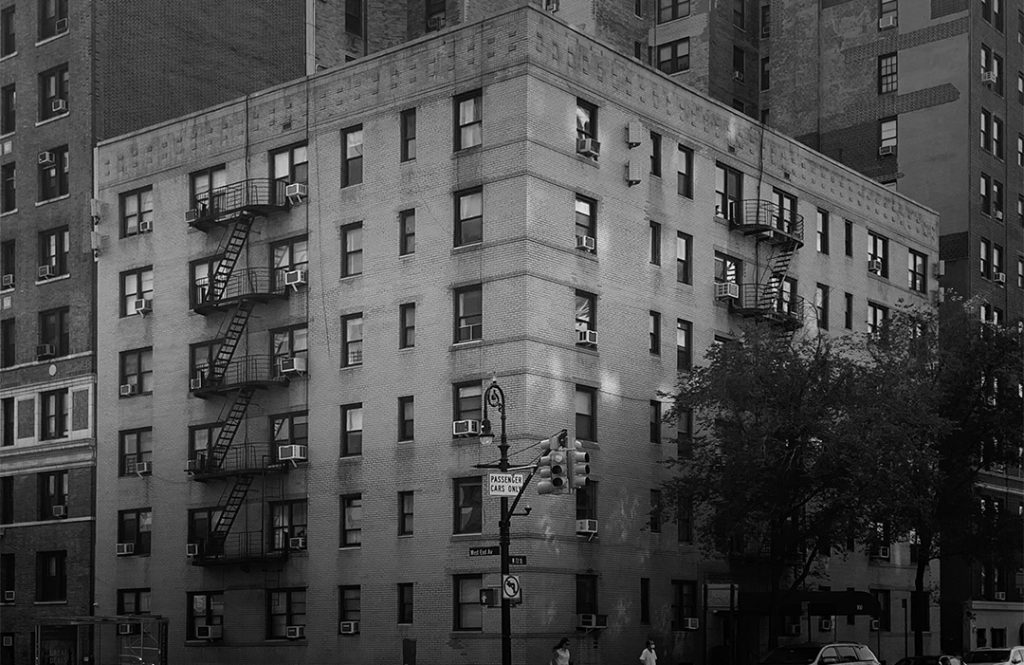
Mansion Turned Moderne
There once was an author, theologian and clergyman who lived quite comfortably here, but a turn of taste and needs--the Great Depression brought in the Moderne world.
166 W. 72nd Street
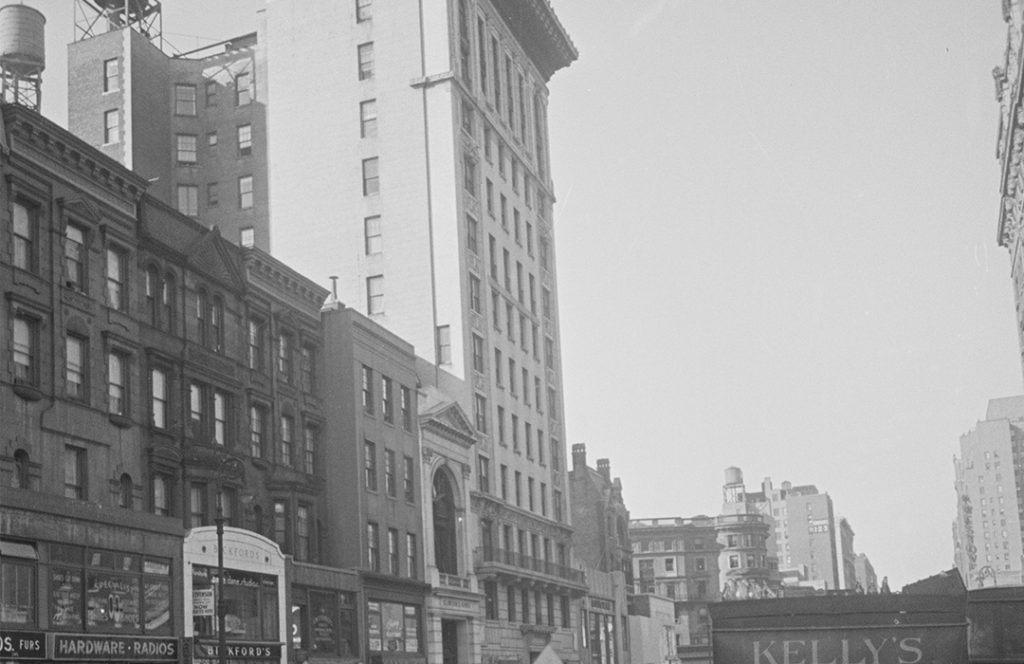
The First to Fall
The first rowhouses of this premier residential corridor to be redeveloped into apartments, George and Edward Blum's 166 West 72nd Street provided extra space, often for extra marital purposes.
226 W. 72nd Street
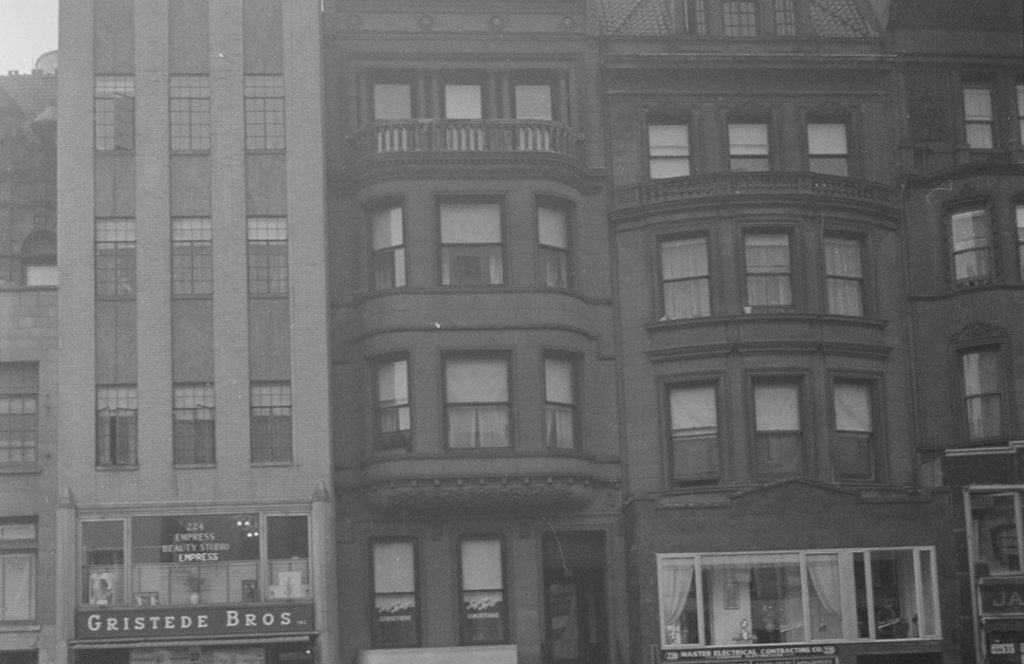
The Tiller Dancing School
Once home to Benedickt Fischer of Oberschopfheim, this was the home of a proud German who celebrated his family roots by hosting the Arion Society, a German-American Musical Society.
260 West End Avenue
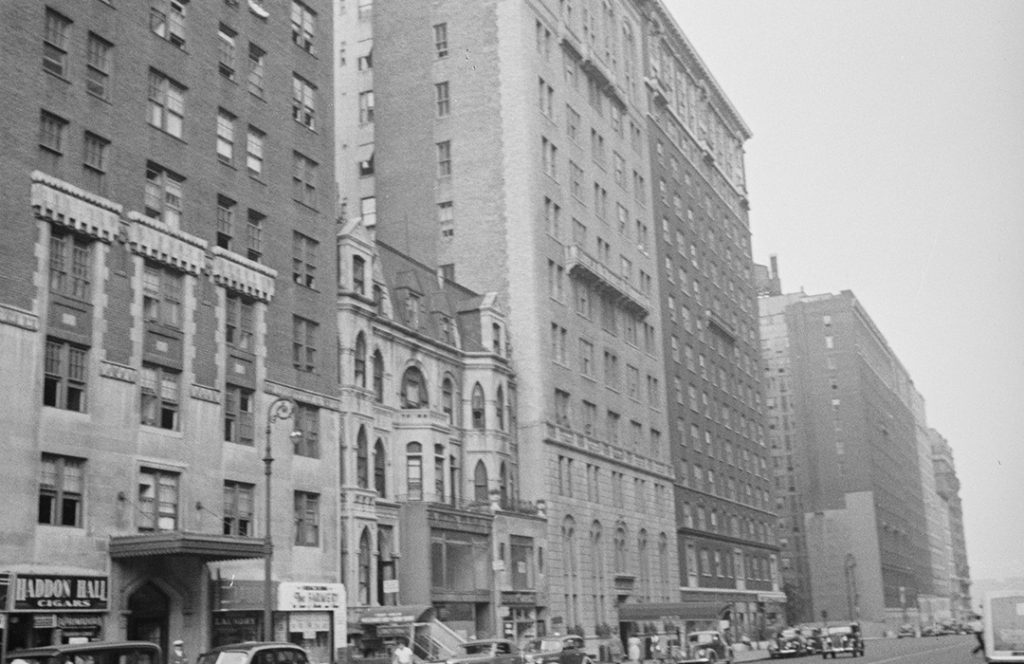
Ethel Lyons' Lyin' Poker Face
For a gambler, Ethel didn't play her cards right but many of her neighbors simply got played. 260 West End Avenue had its share of broken hearts but also notable artists.
132 W. 72nd Street
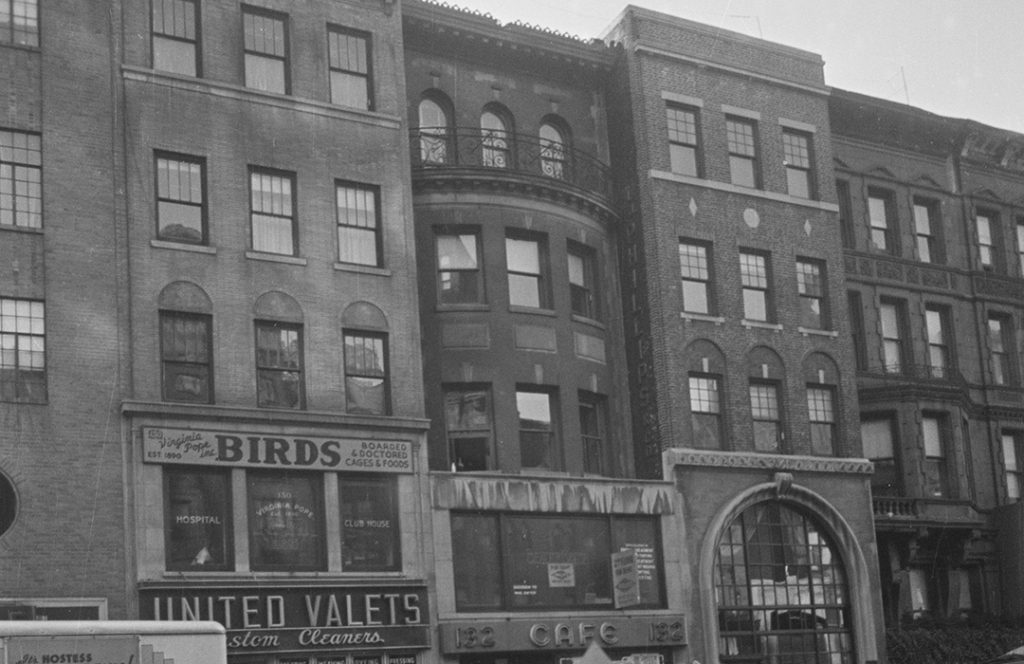
A Most Unfortunate Misstep
Mae Kelly was expecting a quiet night in, with friends, until she decided to go out...
116 W. 72nd Street
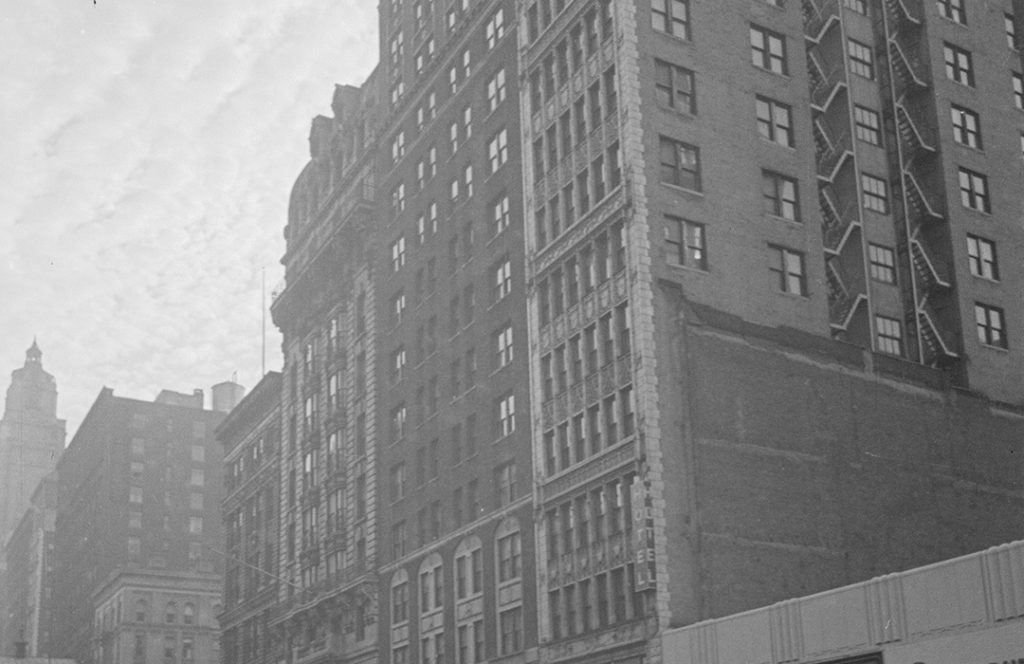
The George Washington (Sussex) Hotel
114-116 West 72nd changed a lot over the years: from two high-stooped houses to the George Washington apartment hotel with a variety of room types to the transient Sussex Hotel of single rooms and a bath to an apartment building of four units per floor to five per floor. So far, that's just the first century.
124-126 W. 72nd Street
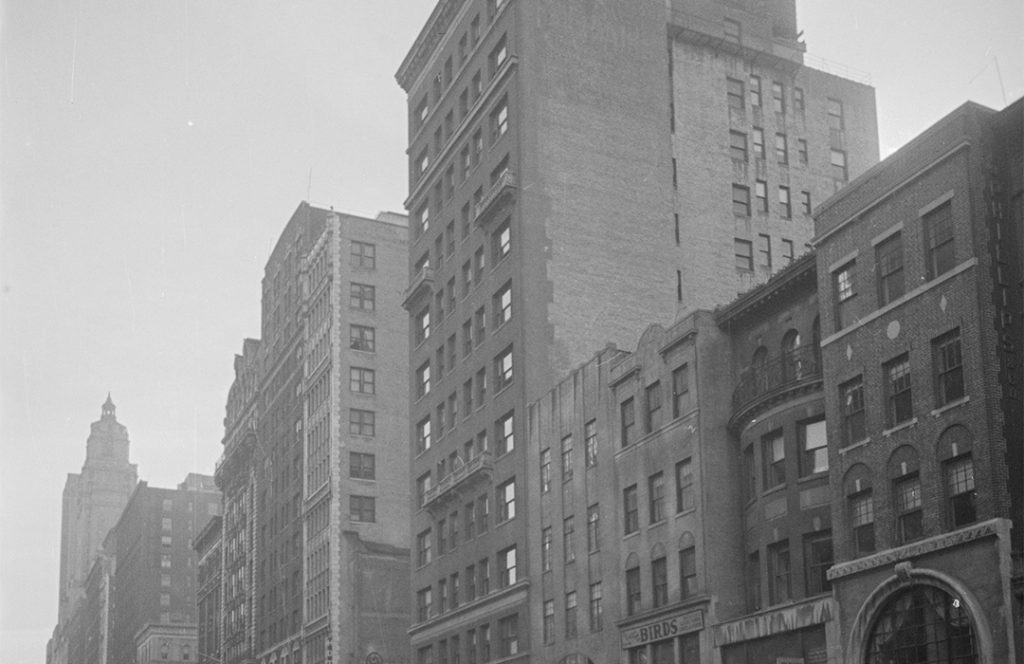
Probate's (im)Probable Probing
Although neighbors, and his wife Josephine were none the wiser, this contractor was busy building a double life for himself...
140 W. 72nd Street
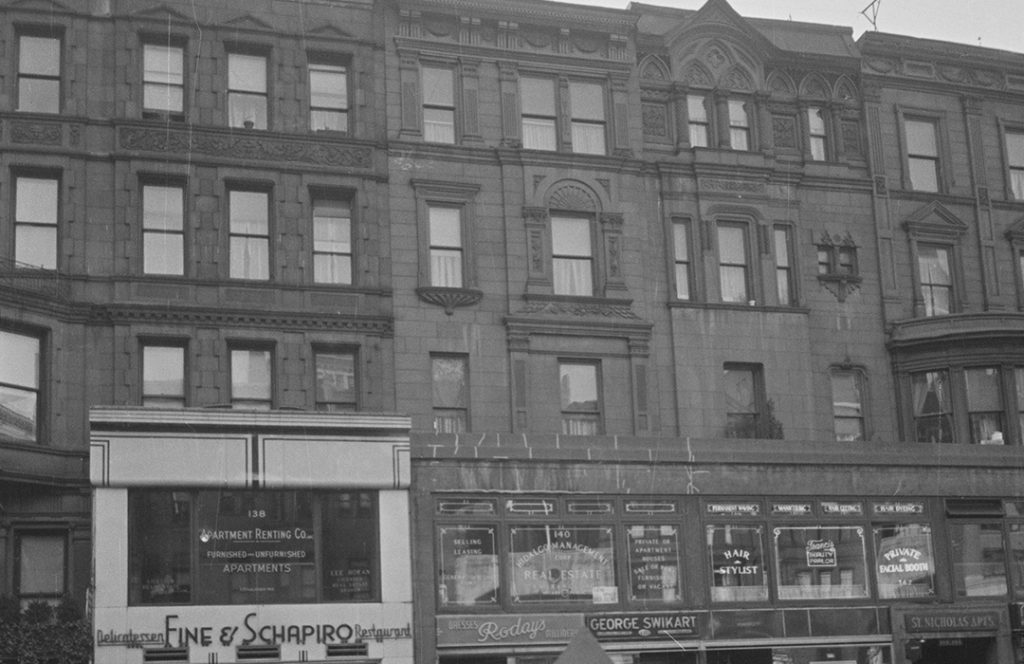
Stolen Stoles
Fur Pete's Sake! These robbers made off with nearly three quarters of a million in stolen furs, but Dr. Pritchard was the real criminal.
130 W. 72nd Street
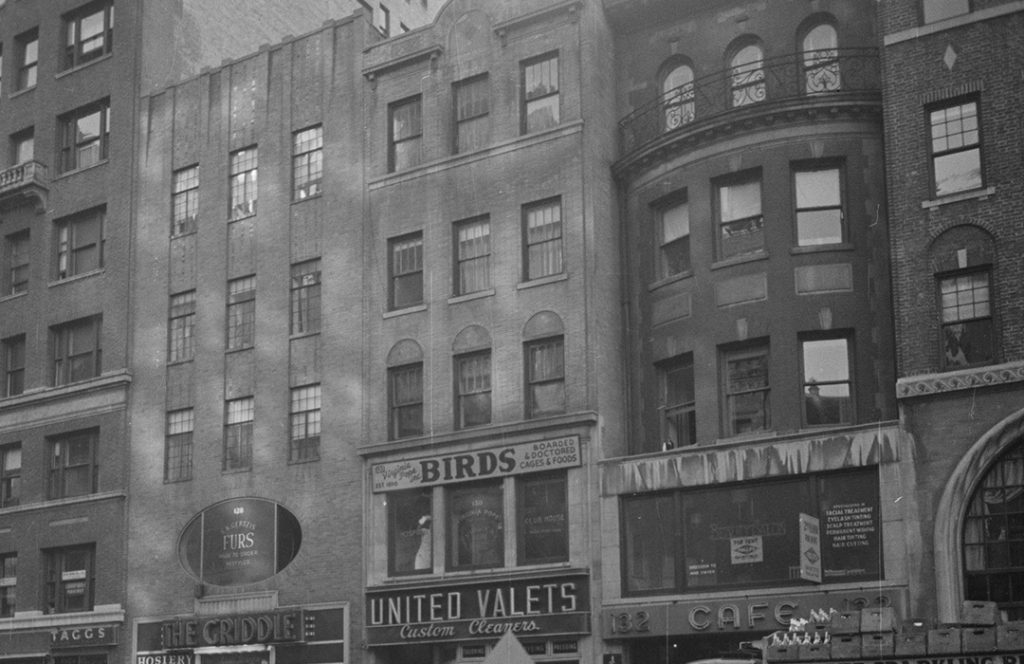
Freedom of the Haworth Press
Everyone's a critic, but not everyone can teach "Jesus’ Method for Instantaneous Healing," for that, one needs Genevieve Behrend!
151 W. 72nd Street
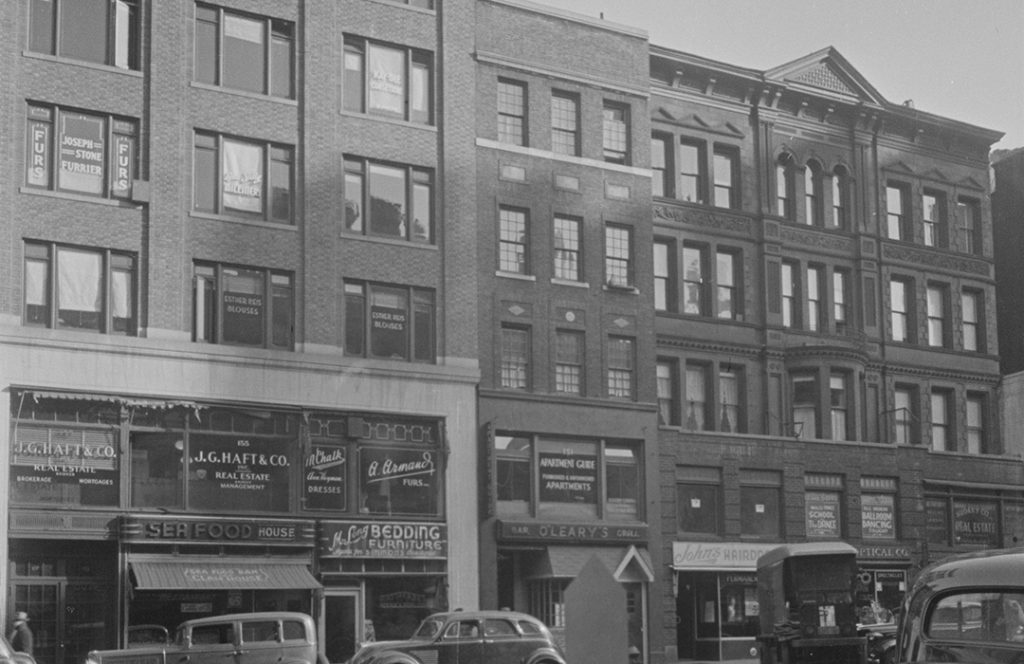
A Second Round for the Boathouse Lounge
Those associated with 151 West 72nd represent a series of close calls...whether racing, thieving, cutting, or defending. Some were too close.
Verdi Square
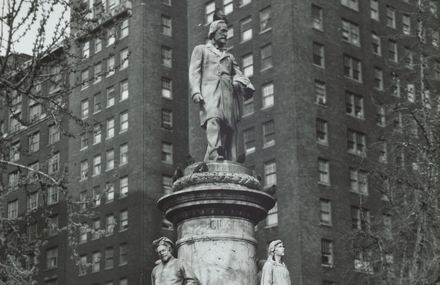
Very Verdi
A determined Charles Barsotti would not let improbability, doubting press or harassing patrolmen stop him from honoring composer Giuseppe Verdi.
142 W. 72nd Street
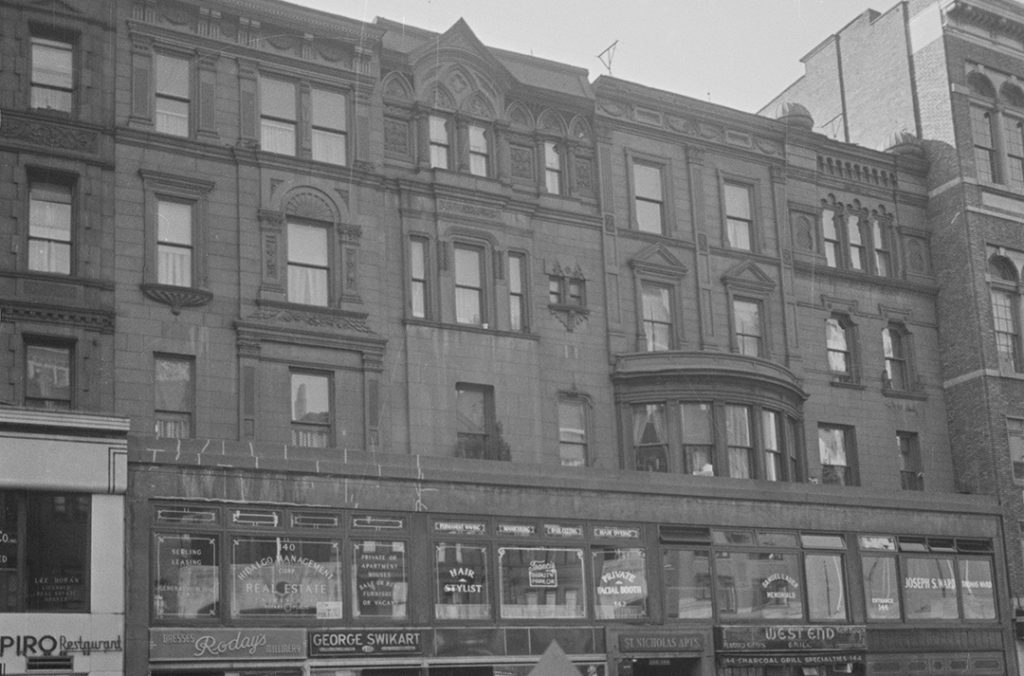
Delmonico's for Lunch?
While they portrayed Ireland As It Is, the husband-wife duo lived it up in America defining "how it was". Why go to Delmonico's when you can have Delmonico (and General William Tecumseh Sherman) come to you?
156 W. 72nd Street
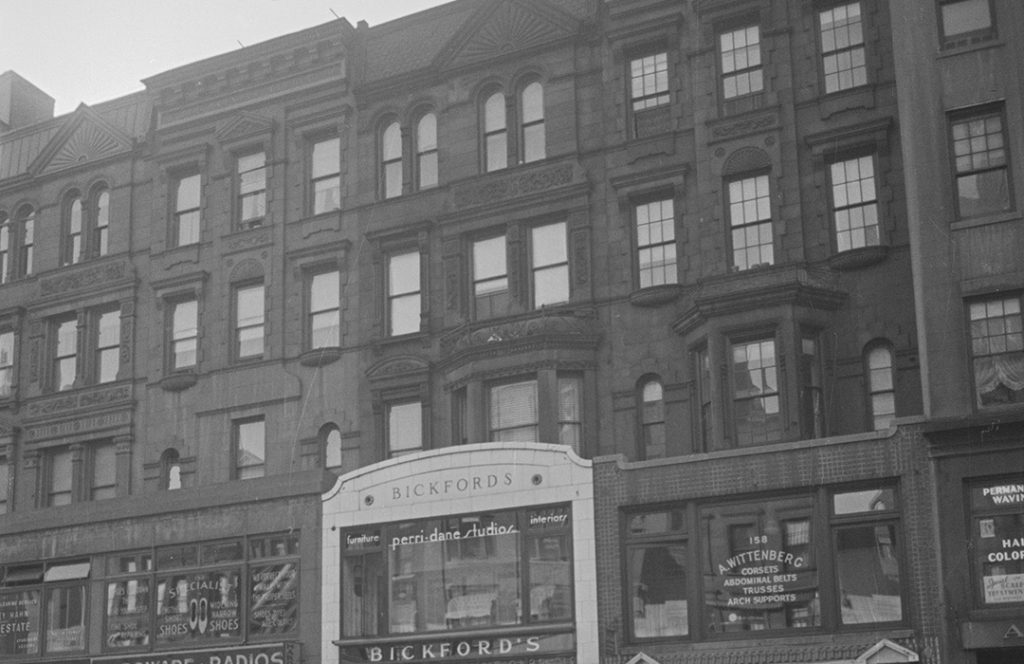
The Commish and the Prodigal Son-in-Law
One has to admit it does look a bit dodgy that a civil servant (and father of 11!) could afford to support the family of thirteen and live on such an exclusive block with a yearly salary of $5K...
235 W. 72nd Street
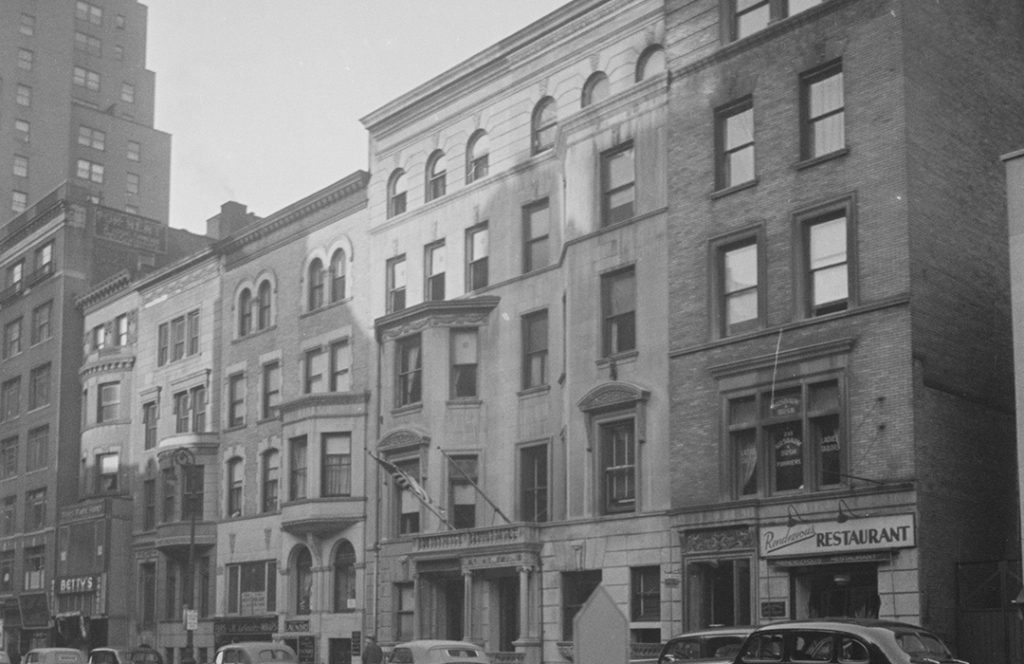
Caught in a Fog
Inviting another to submerge themselves in fog is not one of the default evite templates to choose from but perhaps it should be? Unlike Dr. Emilio Sarlabous, later residents played their cards a bit better...
237 W. 72nd Street
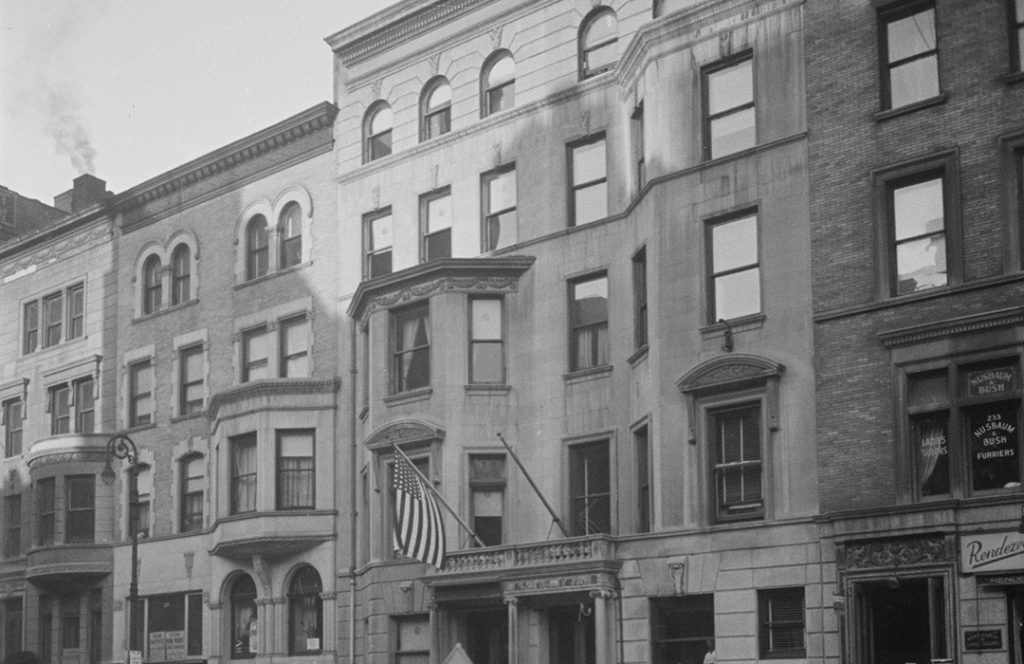
A Rare Holdout for Rare Books
The Batchellers had no children but George Clinton Batceller's second wife was so much younger she could have been one...
245 W. 72nd Street
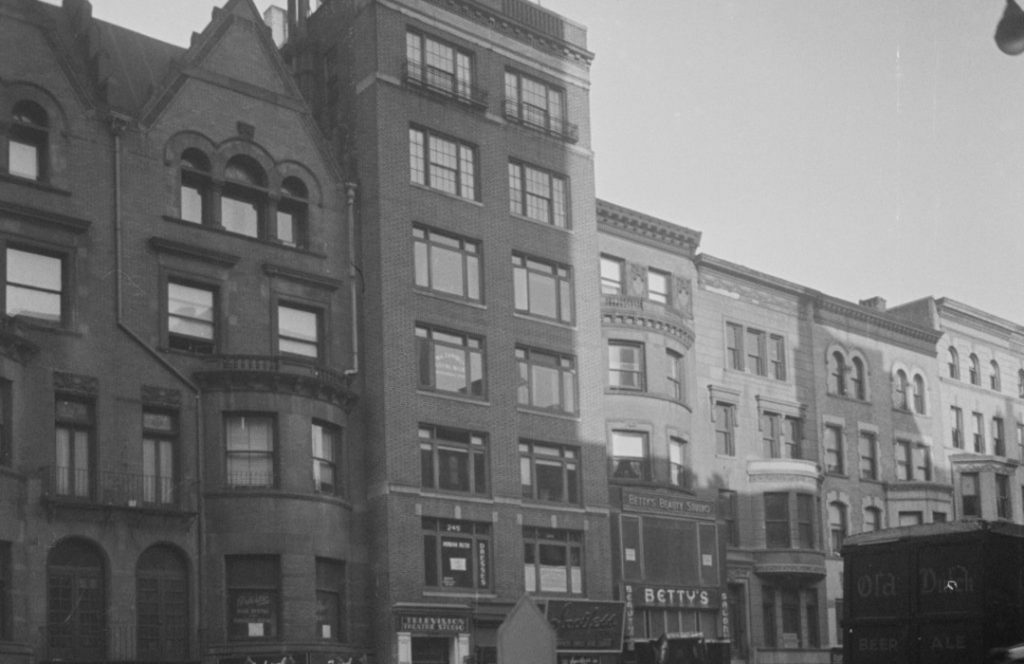
Mentor to the Mob
Even mobsters want to be at the top of their trade an brush up on their skills! The various messes at this address give new meaning to "disorderly house".
222 W. 72nd Street
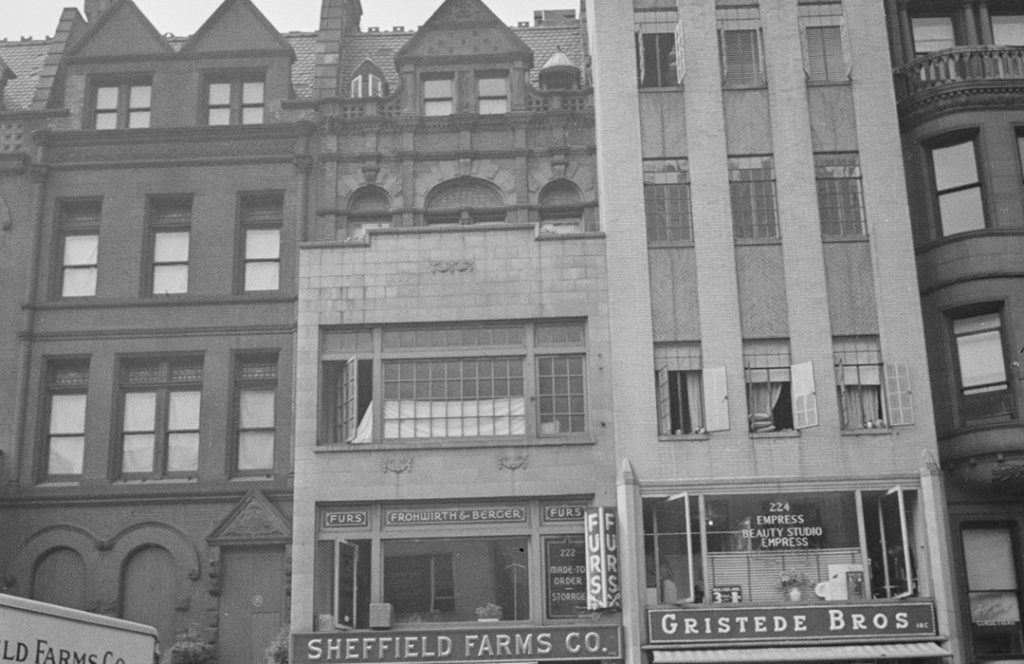
Defaced C.P.H. Gilbert Building Turns the Other Cheek
222 housed doctors and surgeons by 1906, and the building itself was no stranger to architectural surgeries. But that was all about reinvention, as were some of its later tenants such as the League for the Larger Life.
240 W. 72nd Street
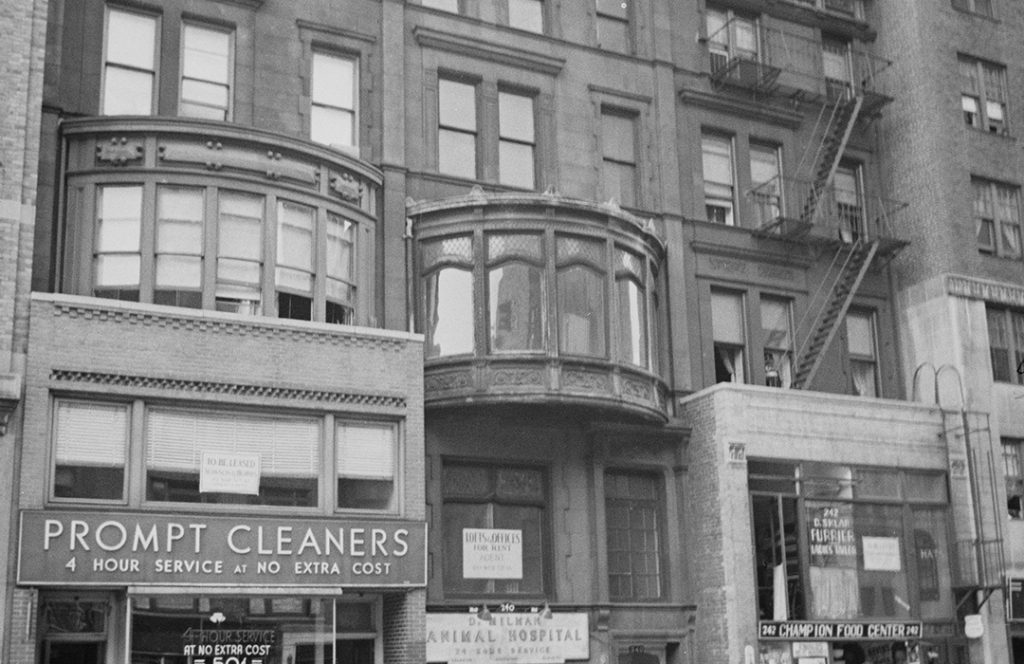
Just the Right Tenor
From shots fired to notes belted there always seemed to be a ruckus coming from this once quiet building. Even the orange brick refacing is loud...
236 W. 72nd Street
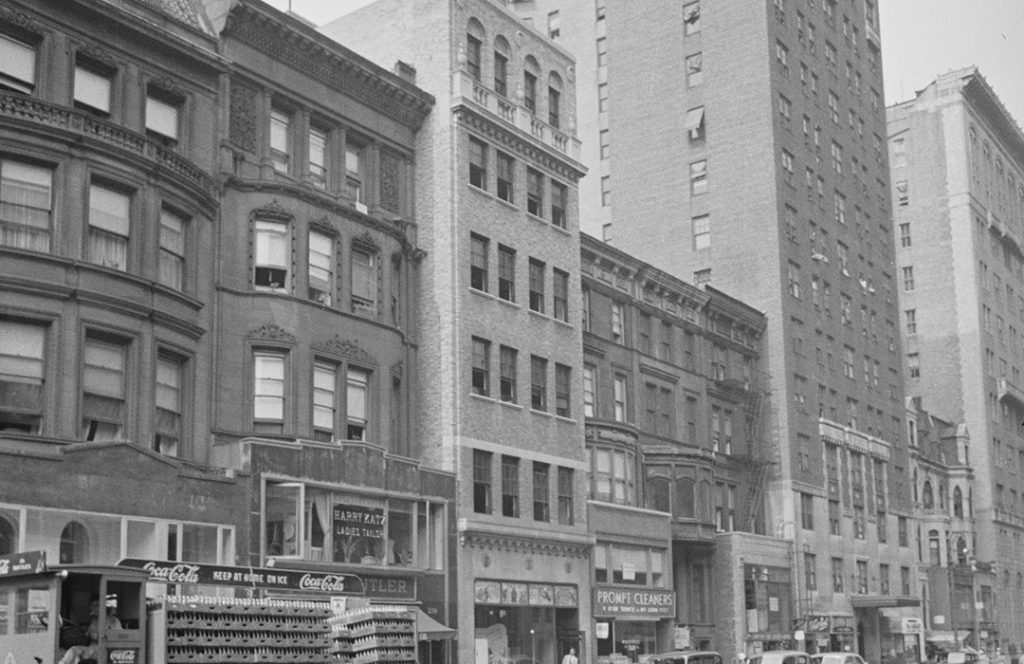
"Jesus is the Right Groove, Smut's a Rut"
The New York Edison Company used this building as a showplace for illumination, but it was a minister's visit to Time Square and the site of a pornography store that helped him find the light...
242 W. 72nd Street
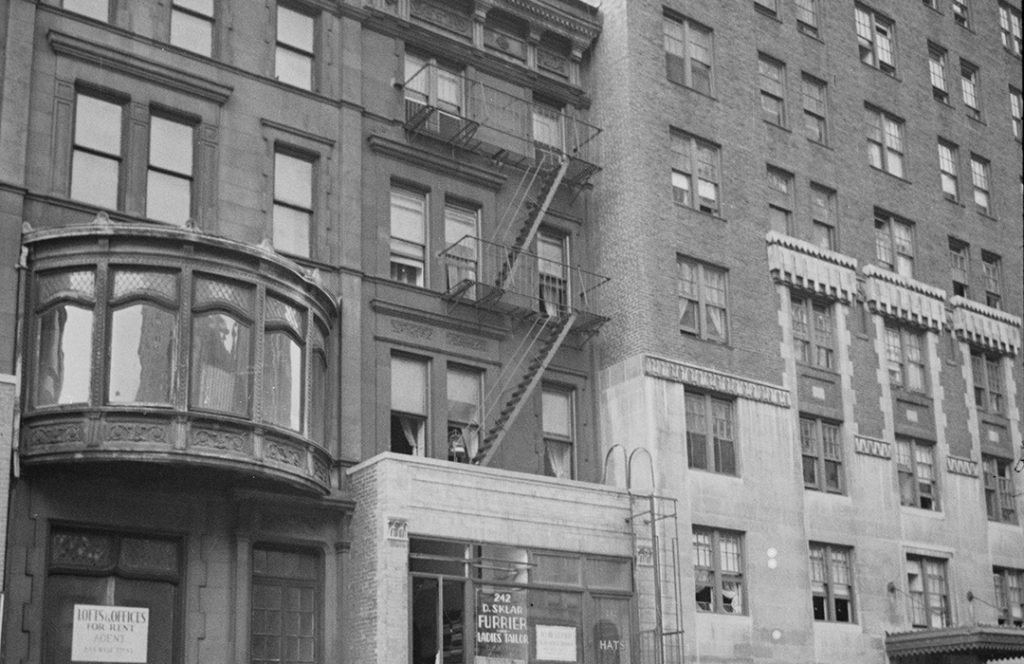
A Life-Changing Phone Call
Although Edward P. Myers used heated terms that "blistered the kalsomine on the drug store walls" it was painter Isidor Sisselman who inflicted the most damage until beauty parlor owner Estelle Rosen finally stopped him from painting the town red...
244 W. 72nd Street
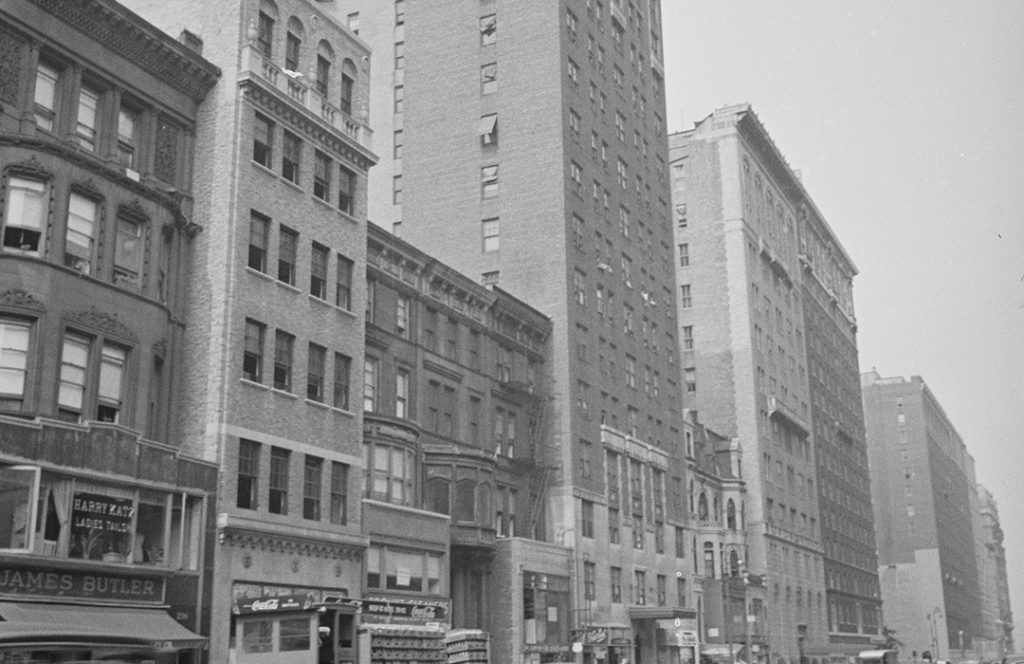
Aw Shucks: The Oysterman was Very Shellfish
This Jazz Age edifice hid artists--con and otherwise. From the career criminals of Lucky Lucciano to the creative-types like the Rossos or Lindgren everyone was looking for a dishonest buck.
253 W. 72nd Street
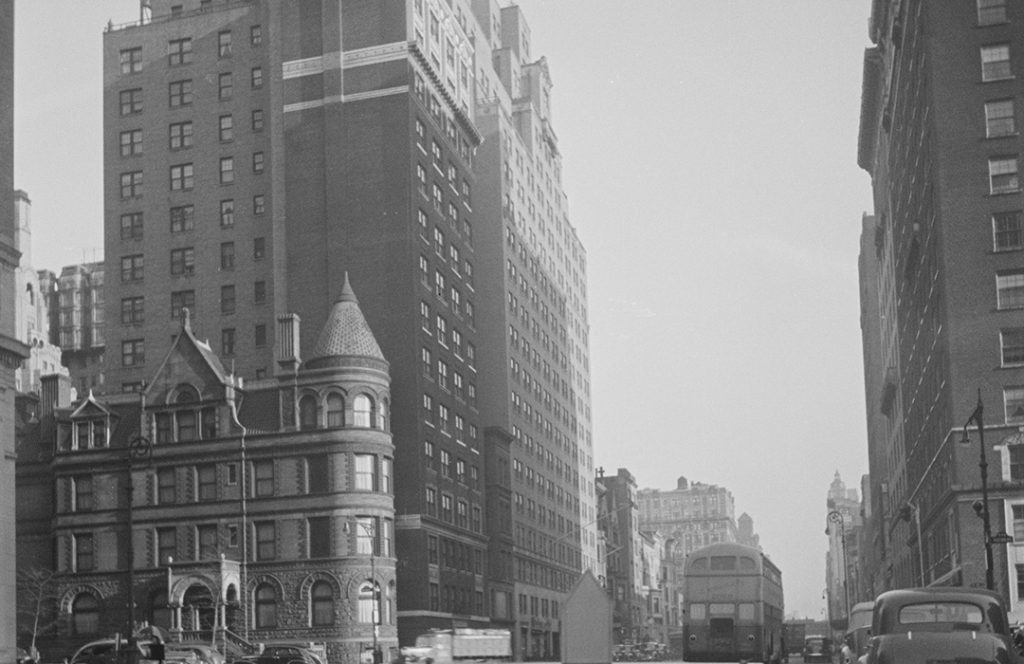
The Hotel Westover
With all of the nightlife happening at street level and in the Club Rooms and Penthouse Club one wonders if anyone got a good night's sleep.
305 W. 72nd Street
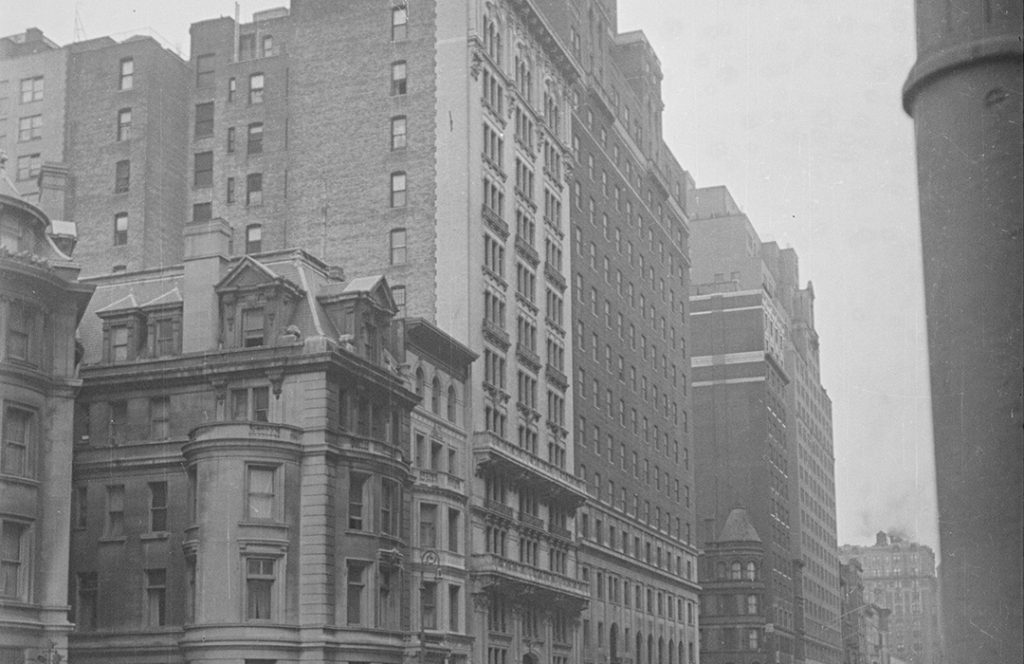
The Luxonia
The Luxonia was a hub for talent from artists like George H. Barrett Jr. and celebrities like Vaudeville Queen Eva Tanguay and Academy-Award nominated actress Marjorie Ramneau, even a Metropolitan Opera conductor!
72nd Street Kiosk
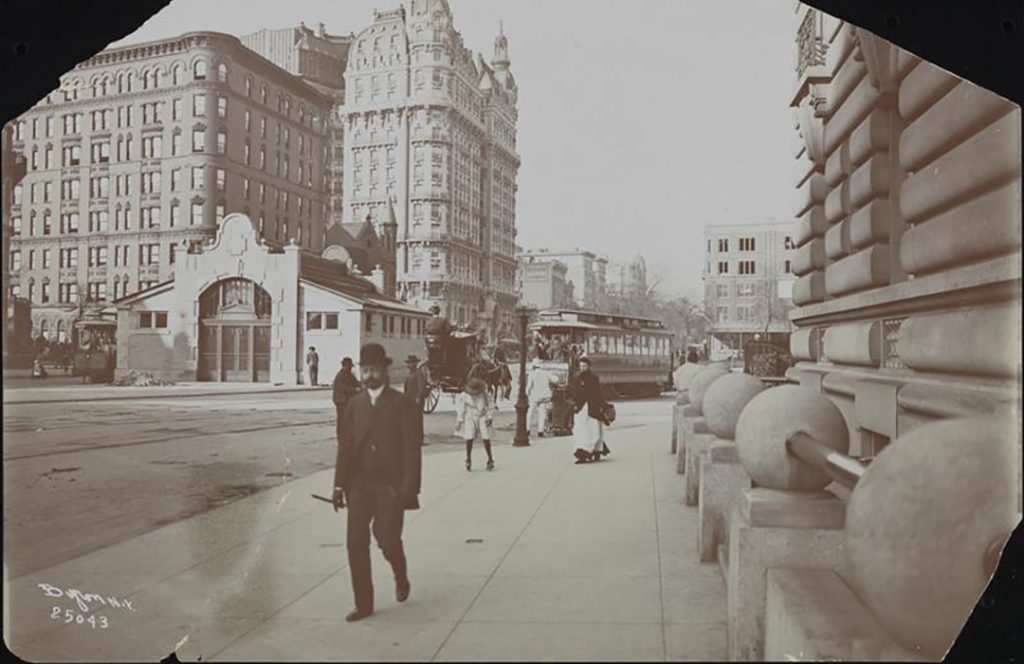
The Sherman Square Station
There are injustices every day in the subway, and there were even in the early 1900's during the nascent days of the system. Despite the ubiquity of advertising today, there was a time when censorship reigned but determined suffragists would not have it!
310 W. 72nd Street
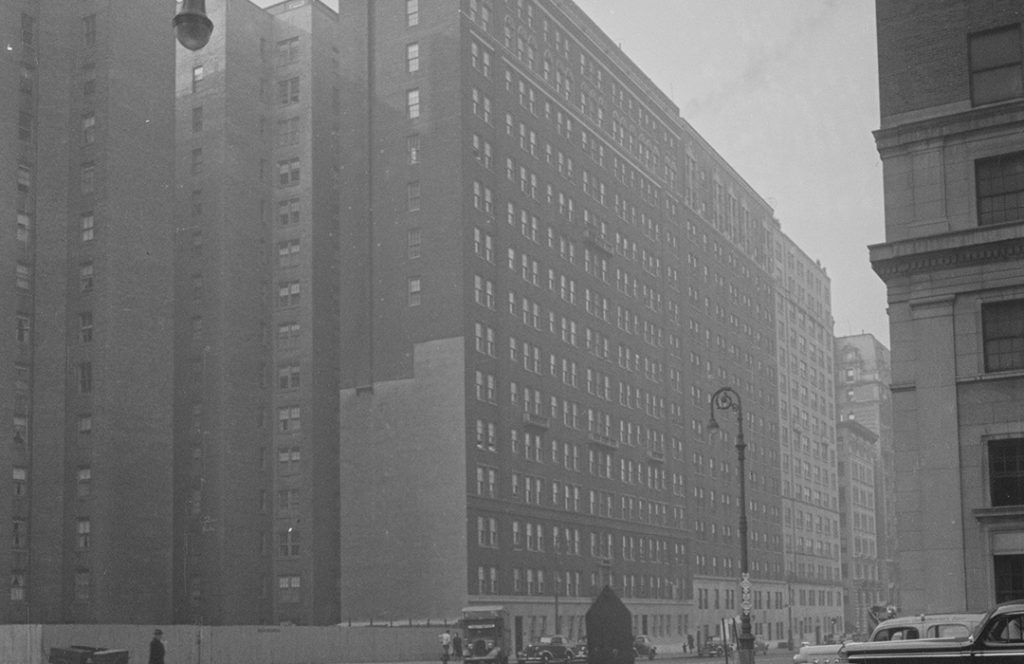
Rent Control[ling]
A “victim of underworld vengeance,” or just alienating affections of a married main?
270-276 Columbus Ave.
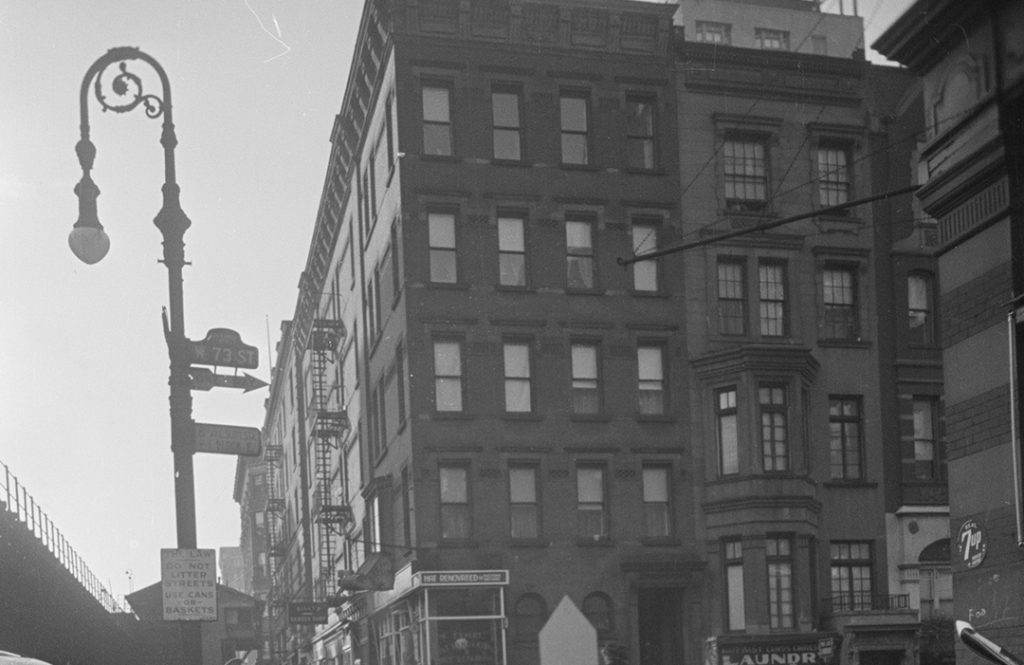
Every Apt. A Life Story
A seemingly inconspicuous 'Colonial Café' is really a Saloon and the police get caught in a bind. But did you hear about that Conway boy--stabbed in the abdomen! While the often fatal peritonitis is a risk, what's the diagnosis for a snitch? Find out in our They Were Here series!
269 Columbus Ave.
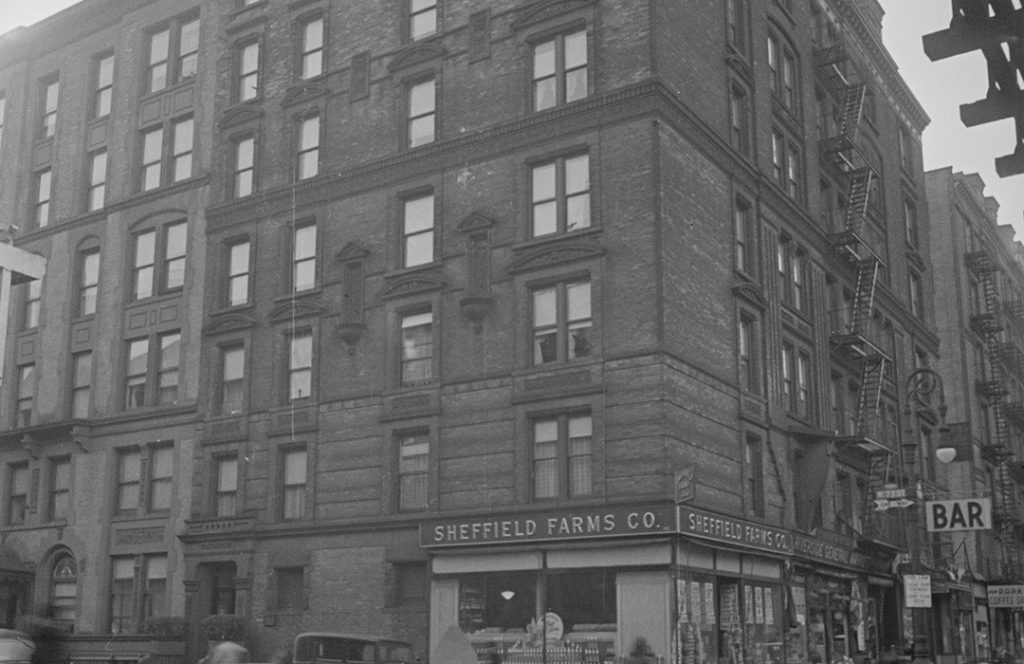
Tough Customers at The Westport
Fighting the fruit seller, boycotting the fish monger...the residents of The Westport seemed to have ever-limited diets. If someone wasn't getting wacked on the head, they were likely being thrown out of the window, or otherwise fighting for their own exoneration. Find out more in our They Were Here series!
240 Columbus Ave.
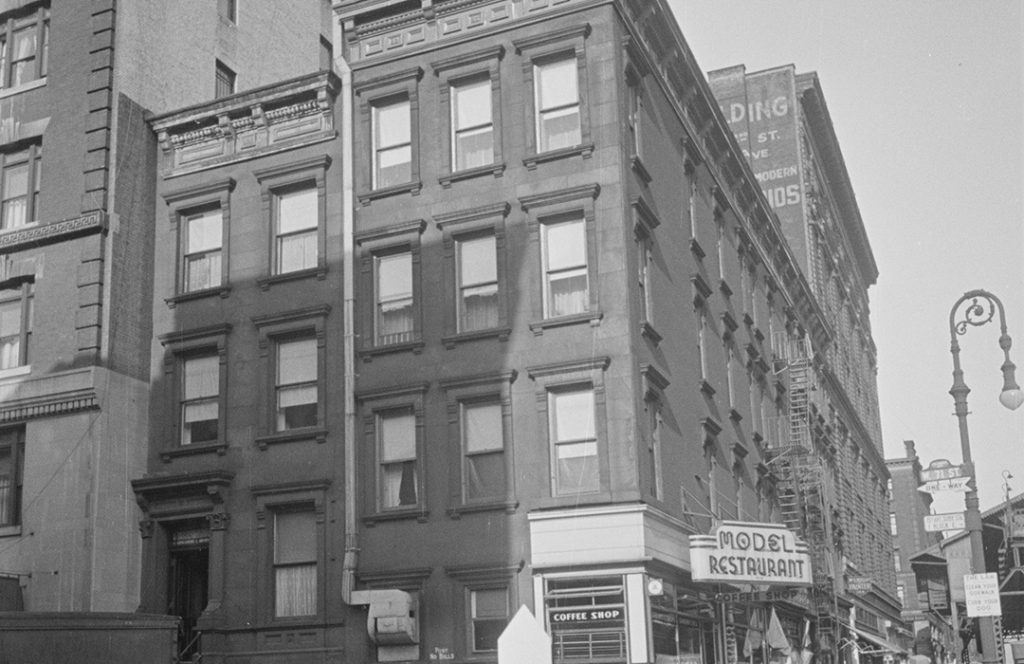
Lost Time and Broadway Hits
Daniel Morey of 240 Columbus Avenue swam out with the surf and floated back with the tide. He was out of time and so were two others caught in the nick of time as they pocketed watches thinking they weren't being seen! Find out more in our They Were Here series!
322 W. 72nd Street
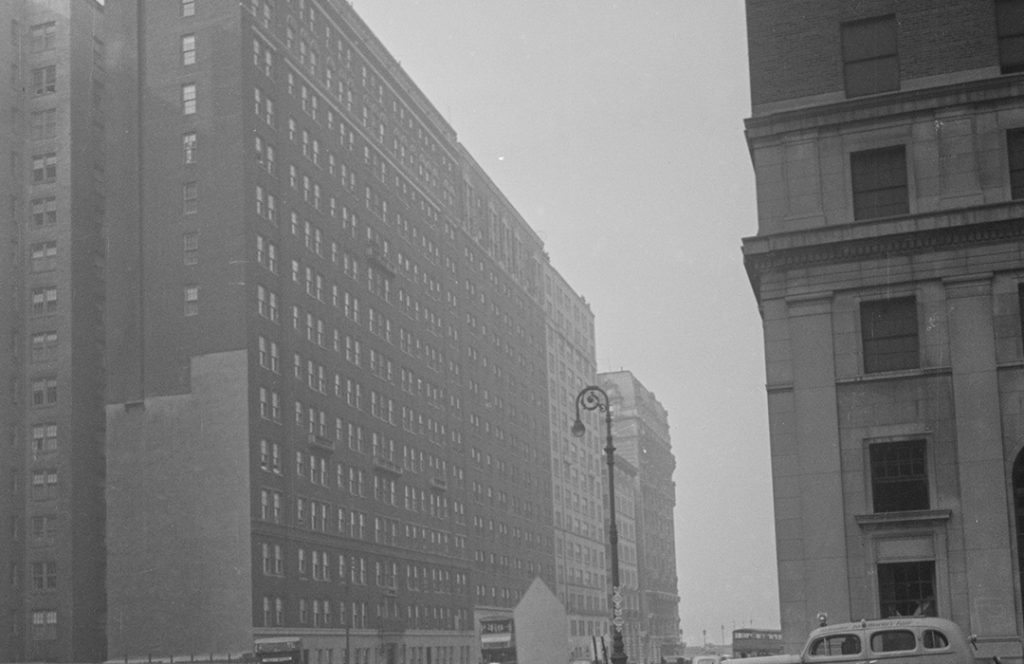
The Birth of the Selfie
Here's looking at you, kid--322 is home to the first selfie but that's not all in and of itself. There was also a selfish, rather self-involved flaneur and another neighbor keen on self-sterilization. Don't keep this to yourself...
208-212 W. 72nd Street
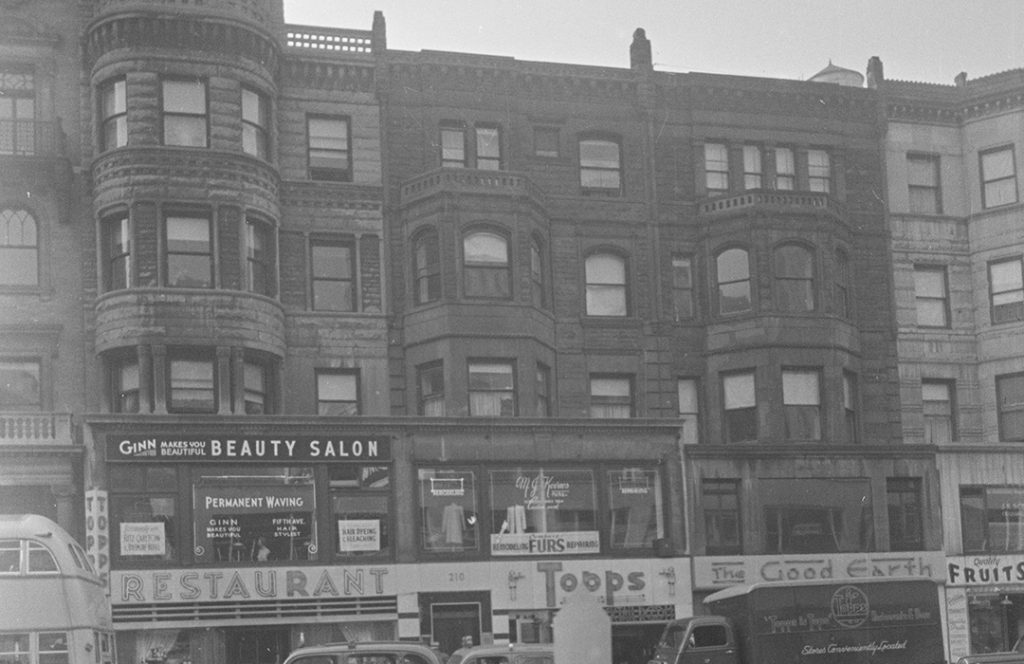
Disorderly Houses
Just like with entropy, things lead to a gradual decline and disorder...but 208-212 weren't all bad, they housed Rosario Candela after all...
120-122 W. 72nd Street
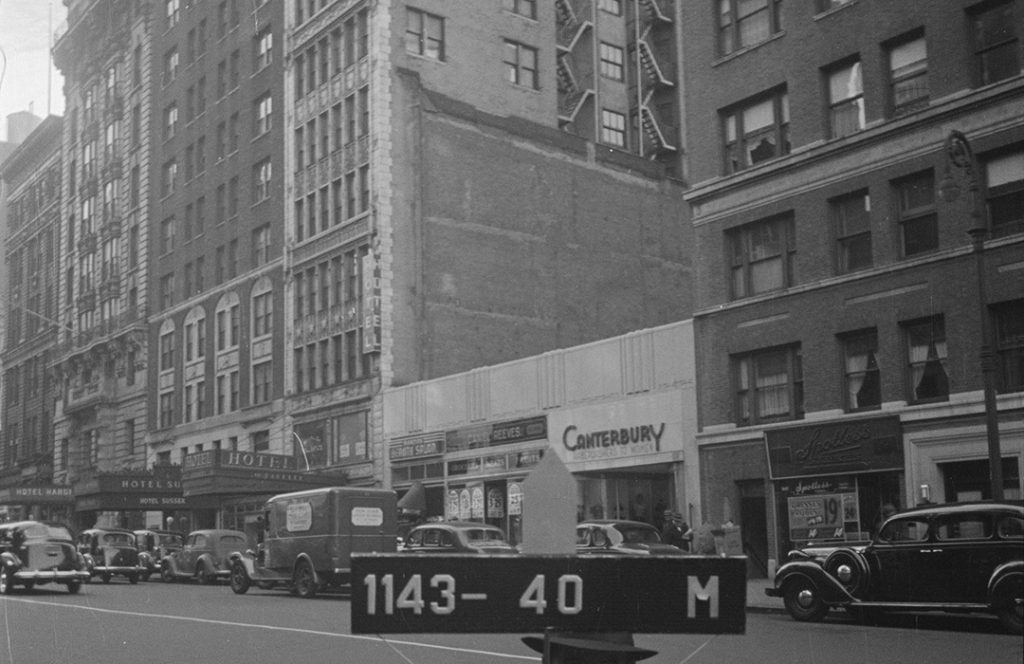
Harsen House
Replacing deco tax-payers, the Harsen House puts a bit more on the rolls now as BKSK's building is among the taller structures on the block.
330-336 W. 72nd Street
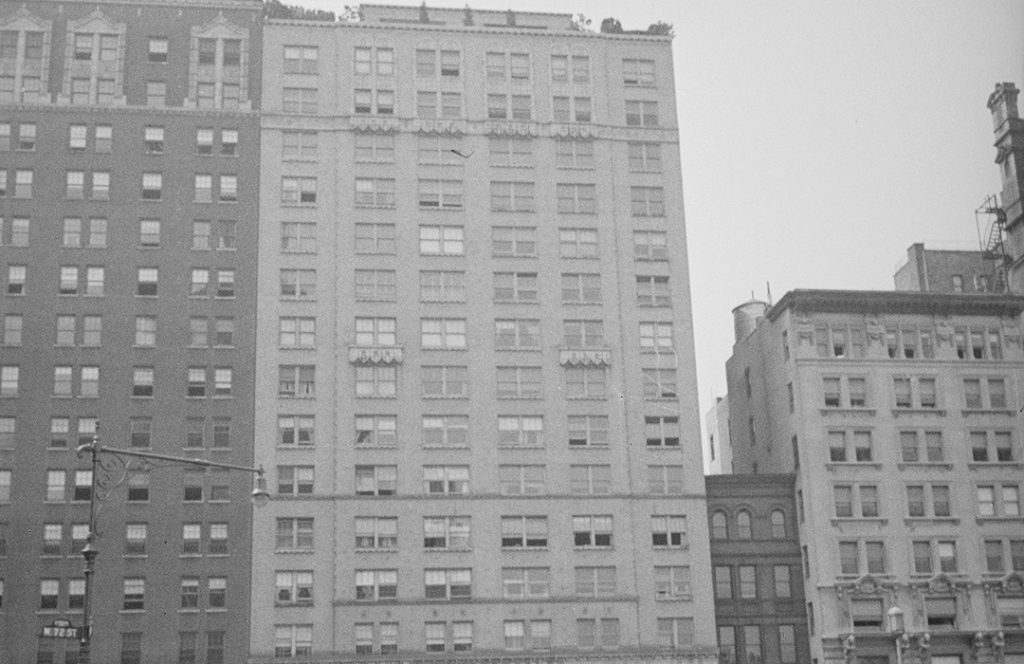
The Little King, or just the President's Son-in-Law?
The famous comic strip artist Otto Soglow lived here but always wanted to be an actor. Keep reading and DRAW your own conclusions...
Eleanor Roosevelt Statue
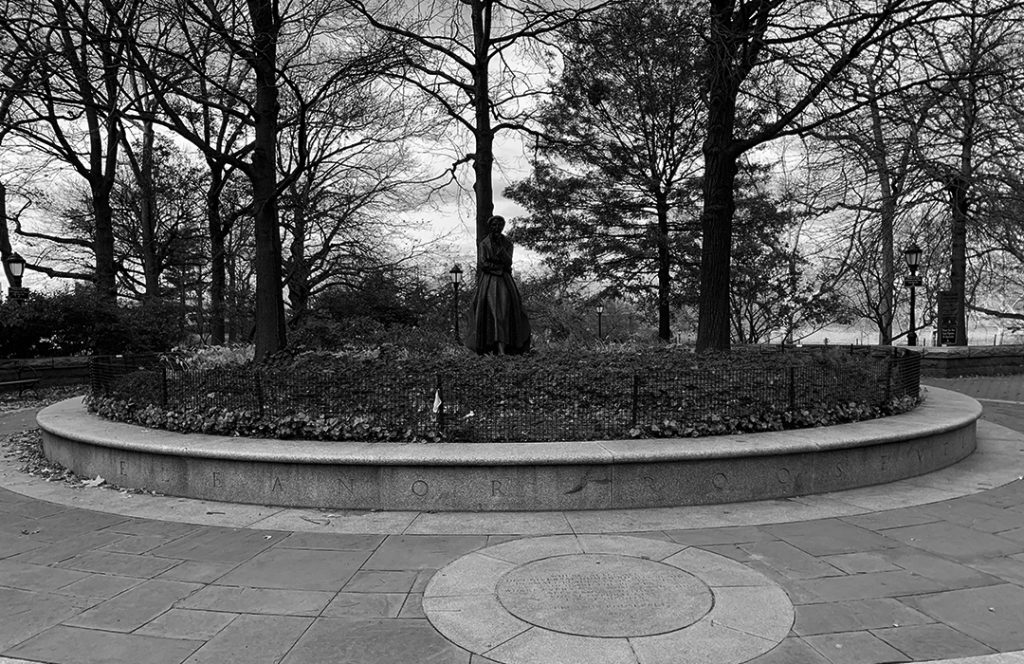
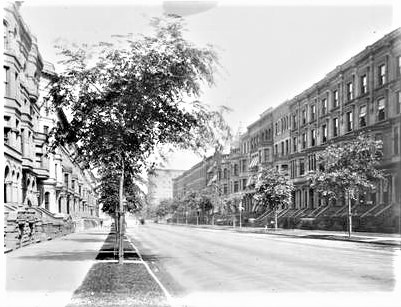
Want to learn even more? Watch blogger Tom Miller’s talk,
West 72nd: Queen of Streets
from our Programs Library.
Available for free to all current LANDMARK WEST! members by following THIS LINK.
And check back soon as we add more stops to our 72nd Street Crosstown tour.
Still curious? Read about those making history now at West Seventy Today.
Many thanks to Claudie Benjamin, Annie Noramon Bodhidatta, Joe Kizner, and Tom Miller for making this project possible.
72 Crosstown website and logo design:
KG Design International
West 72nd Street: Explore by Address


















